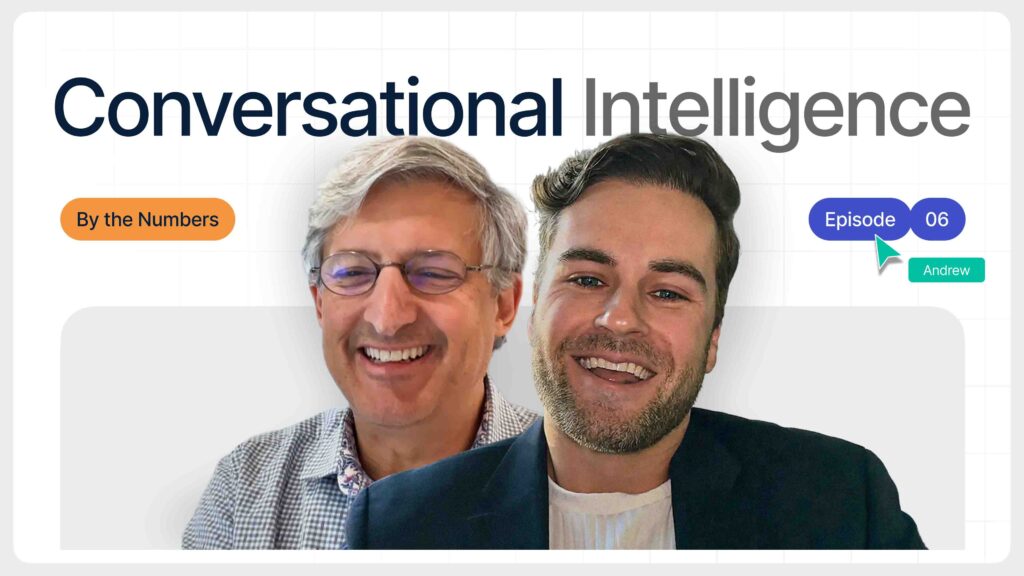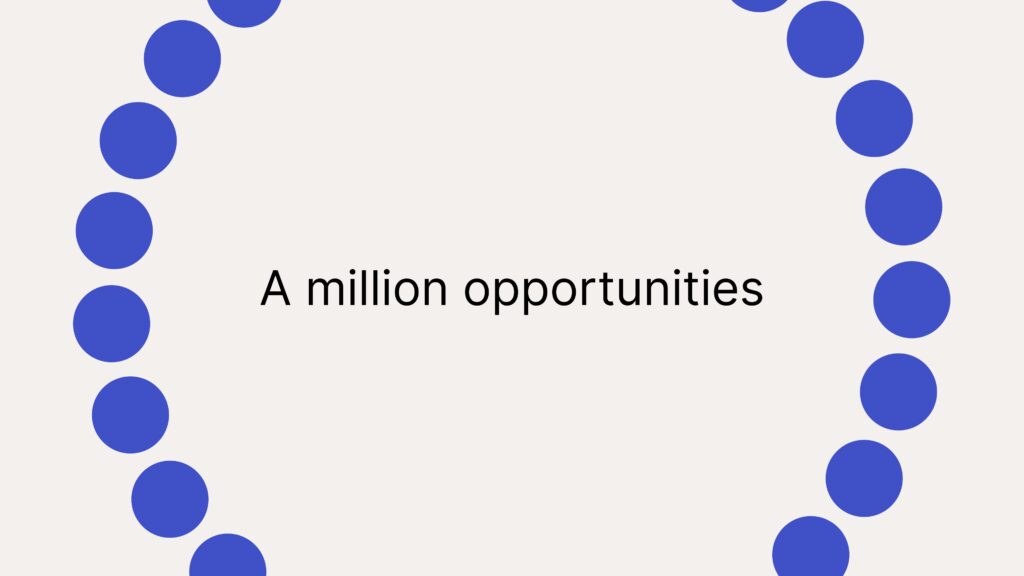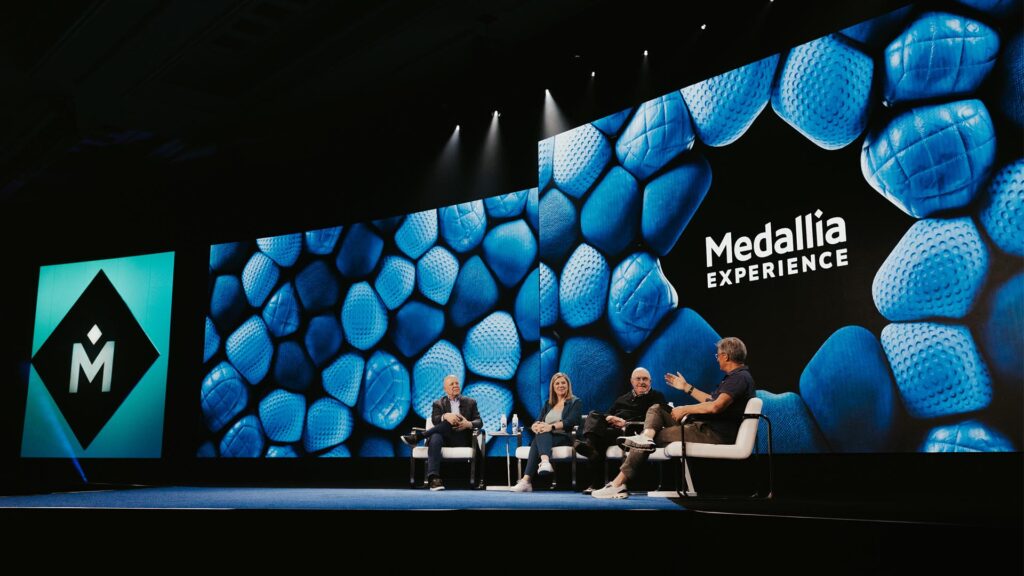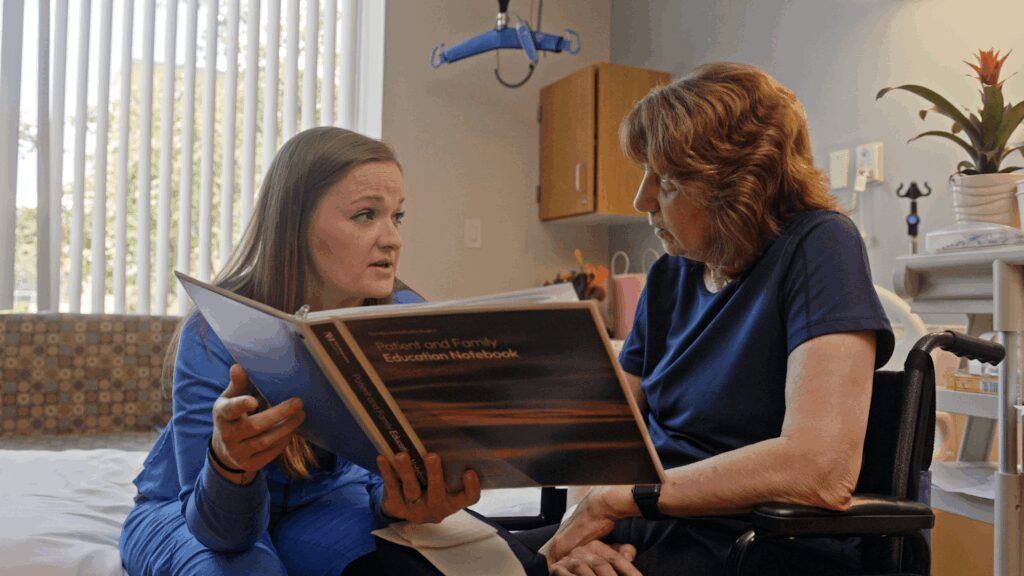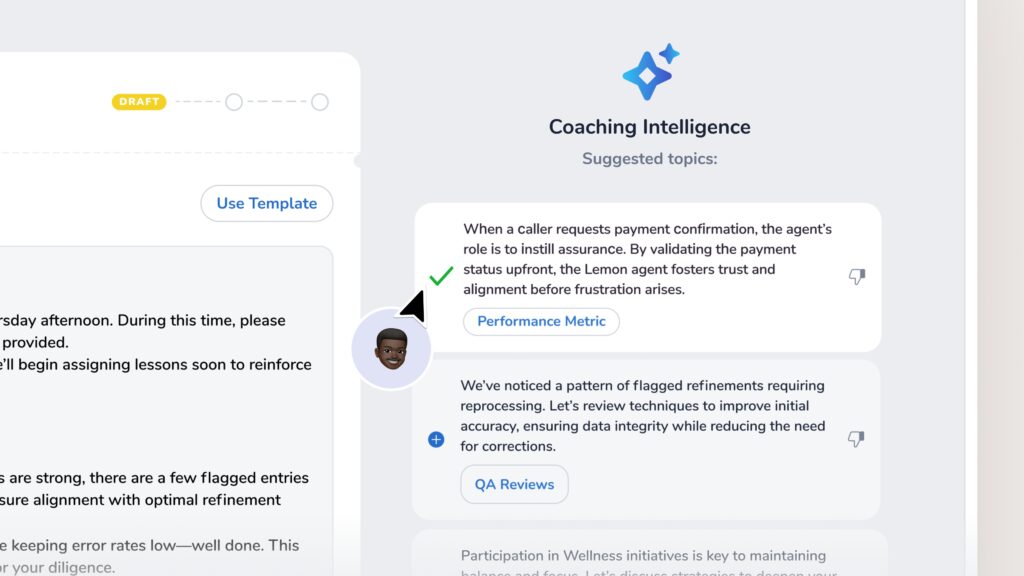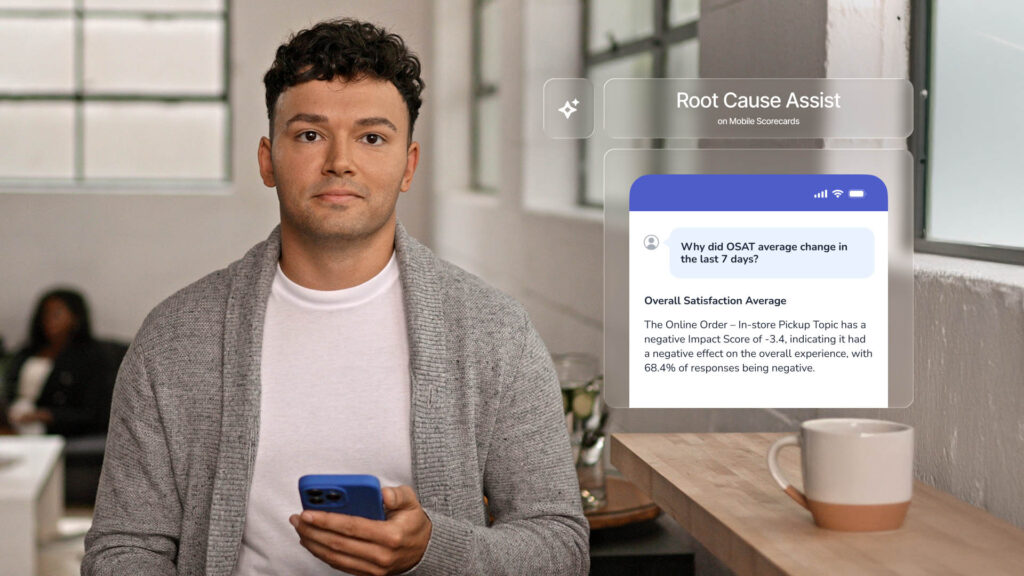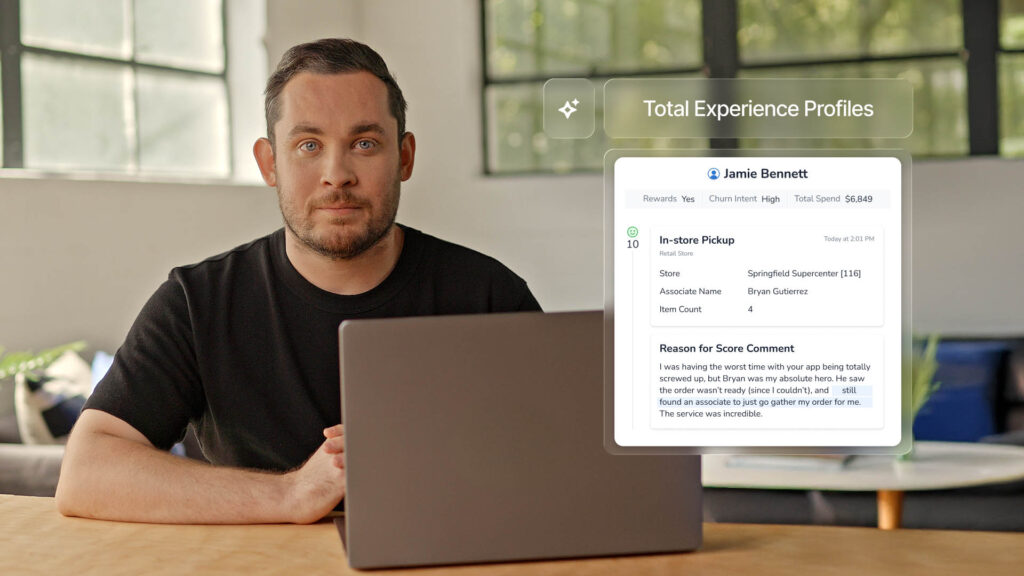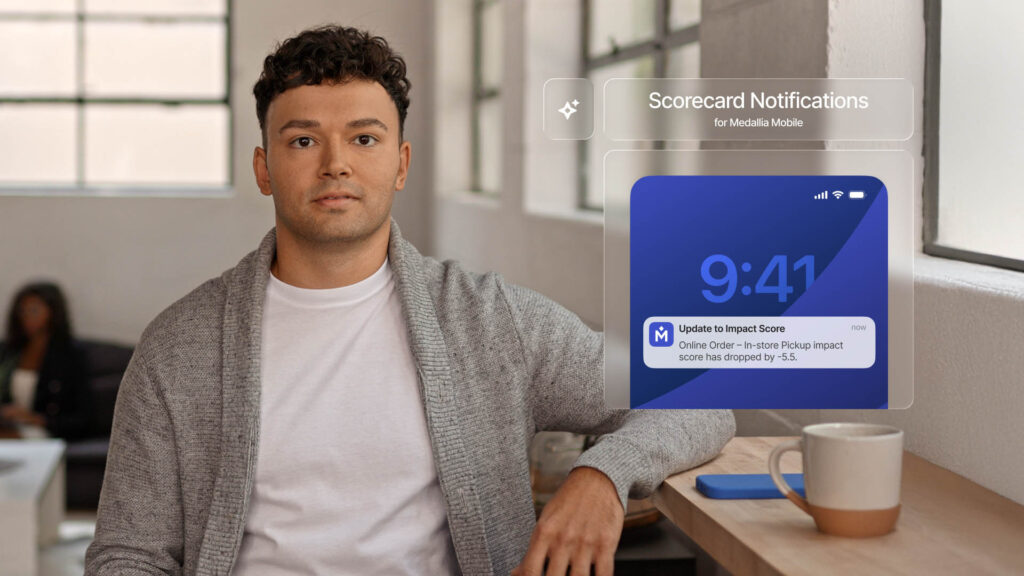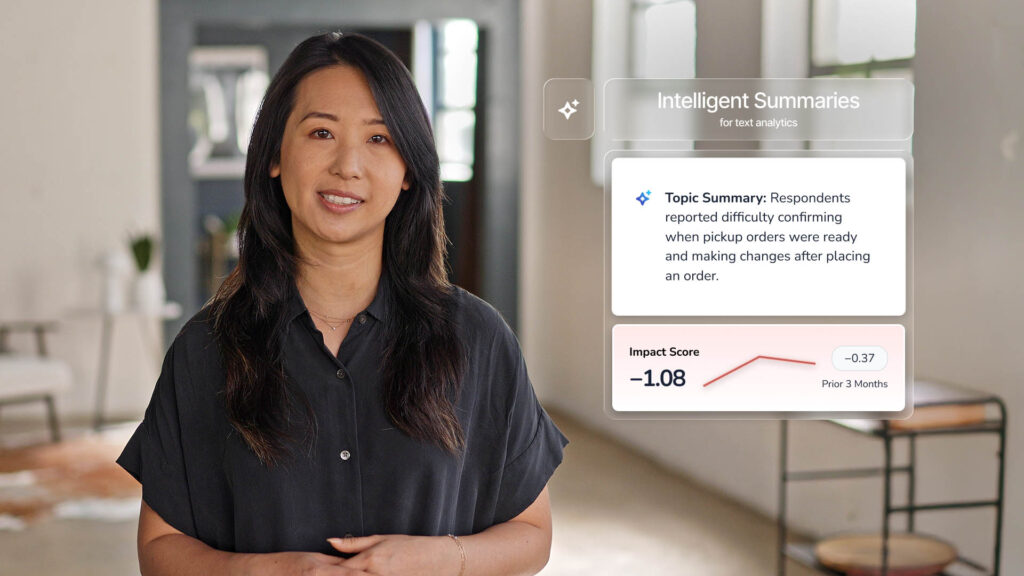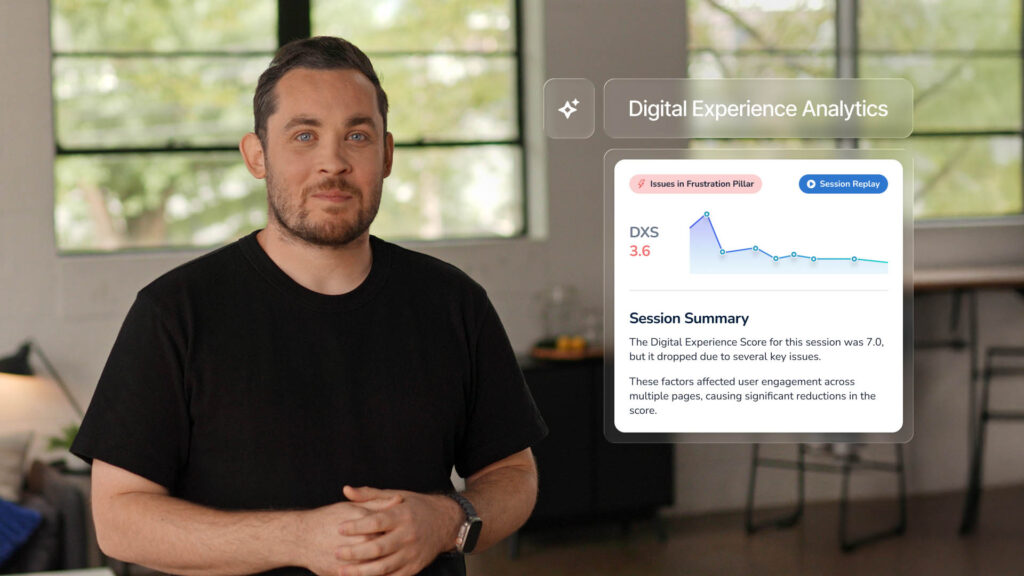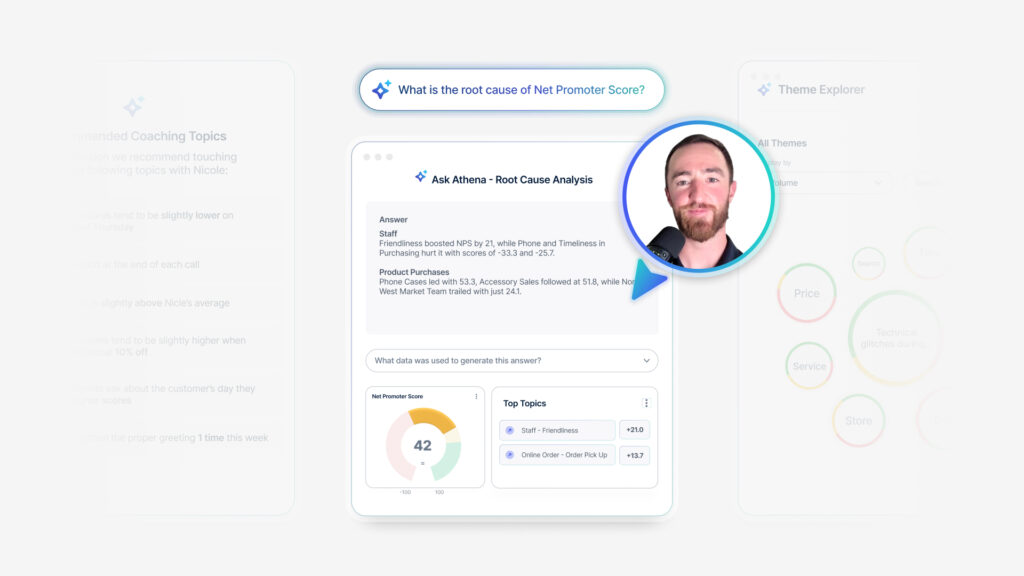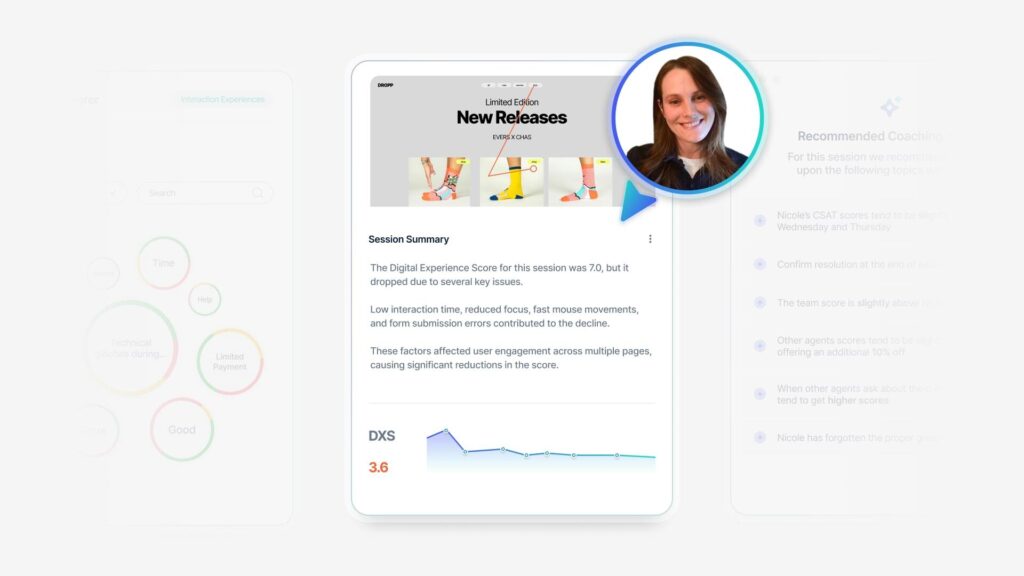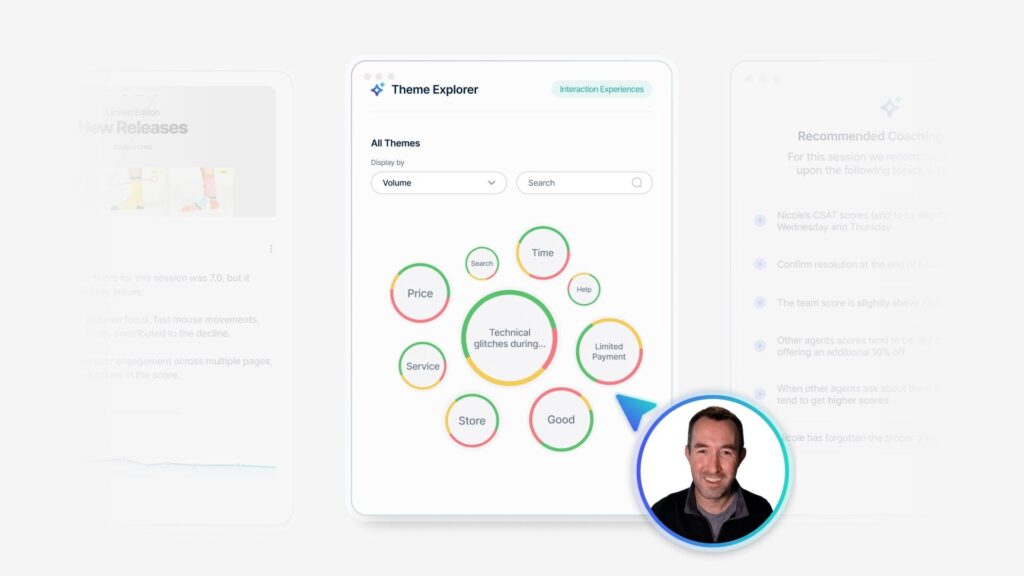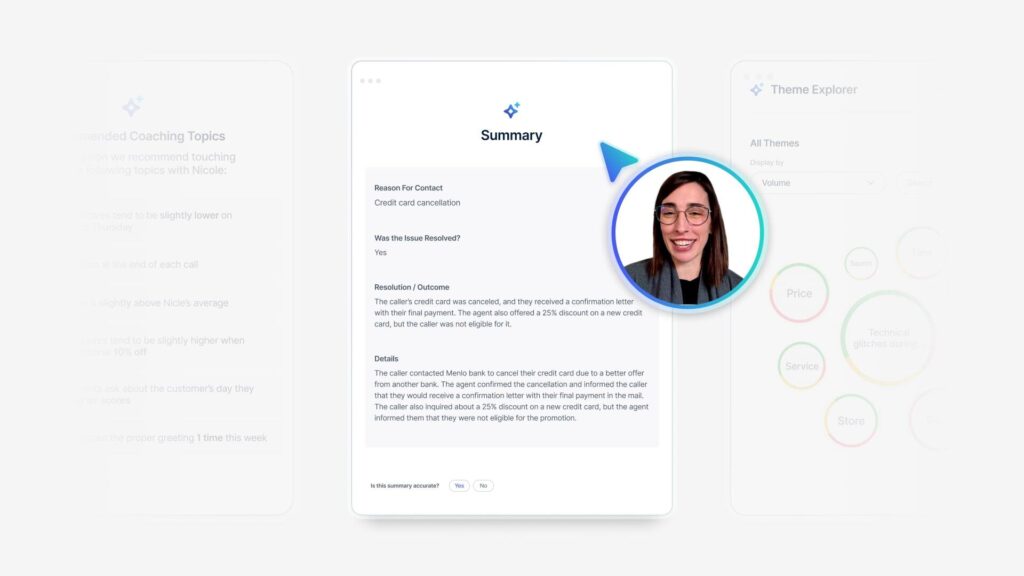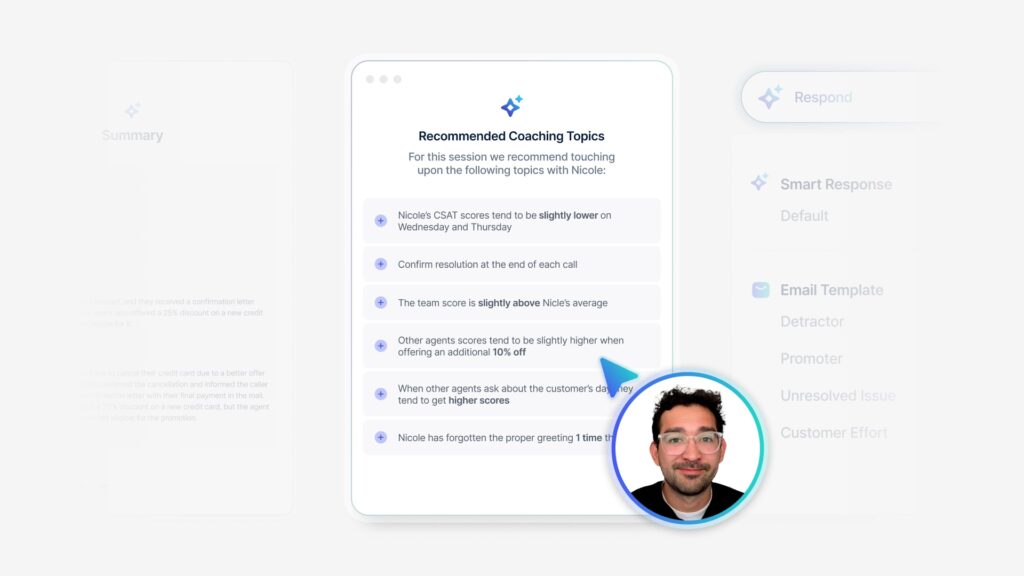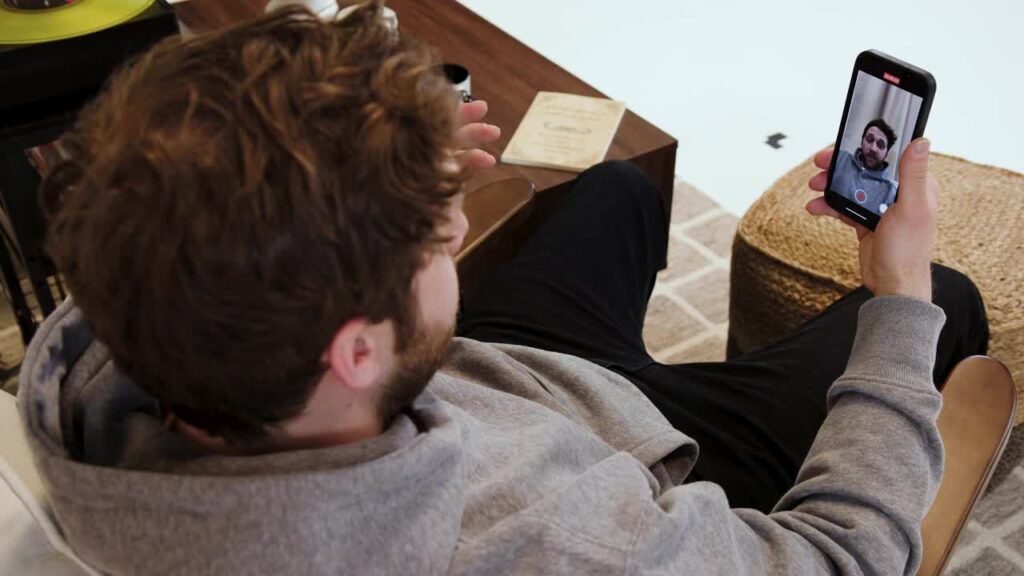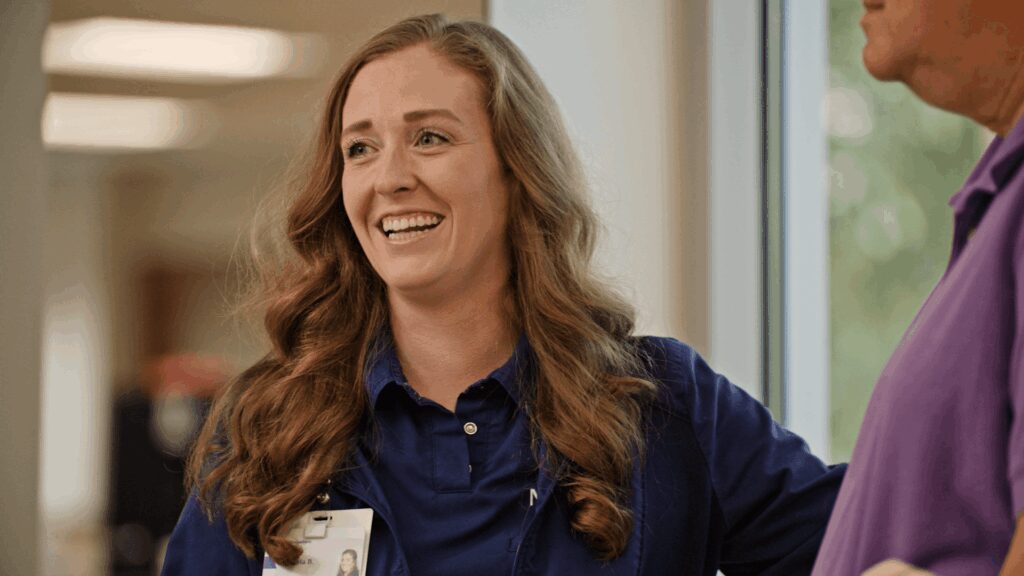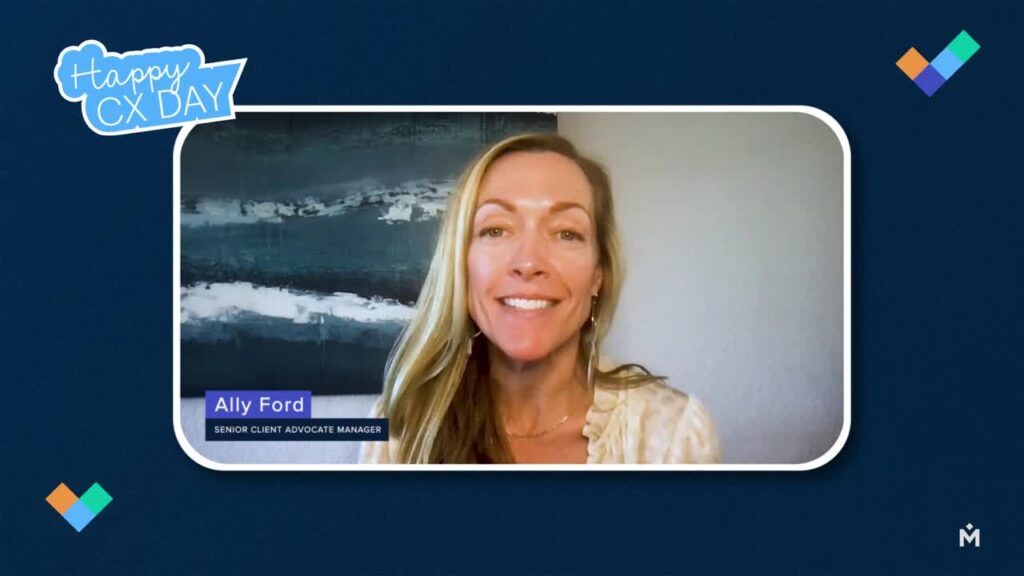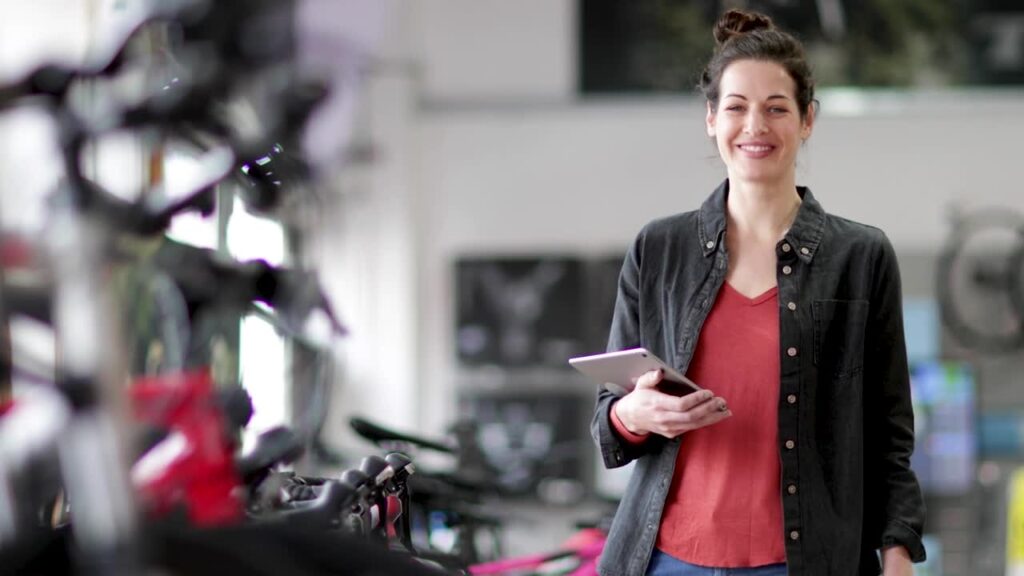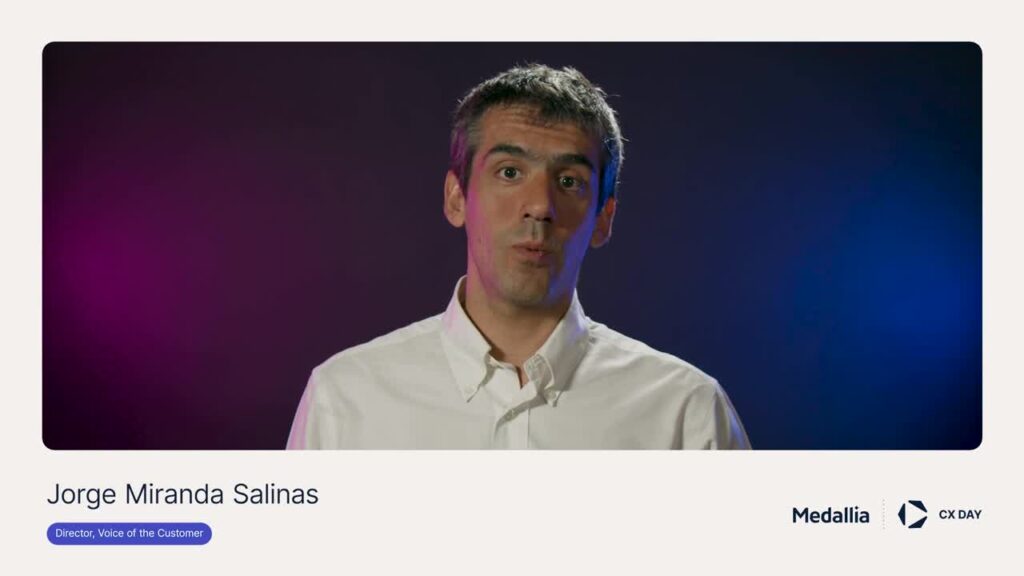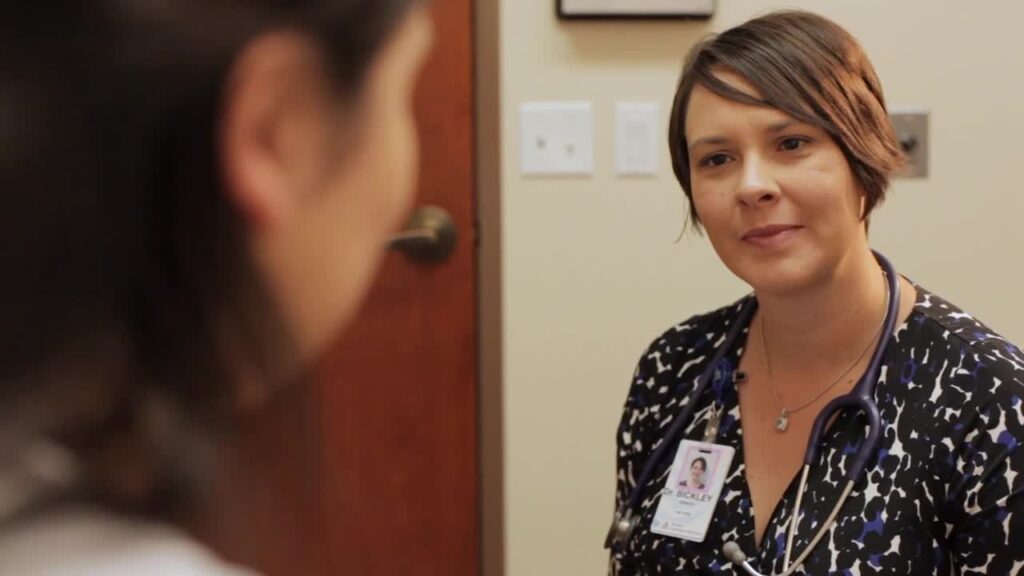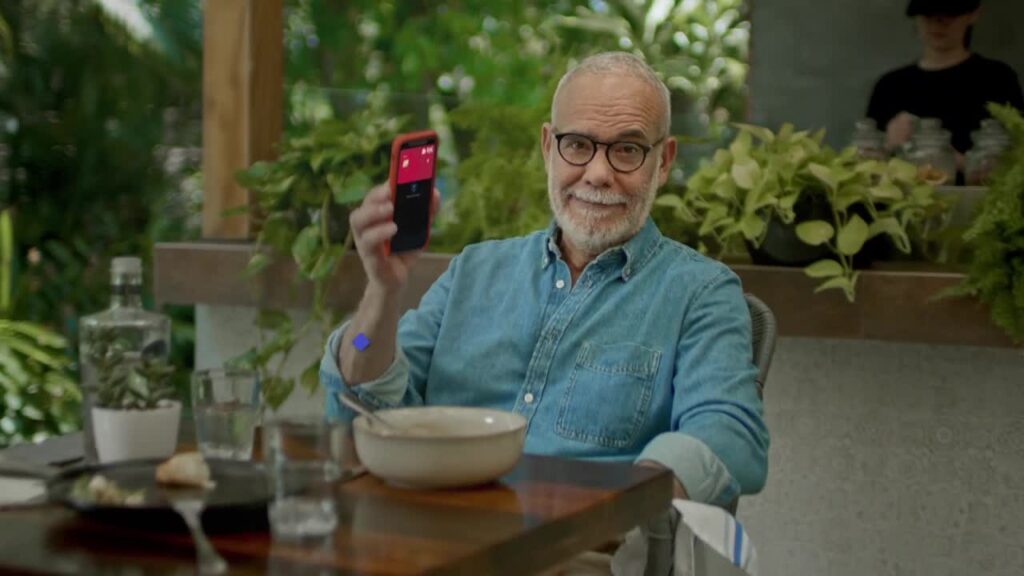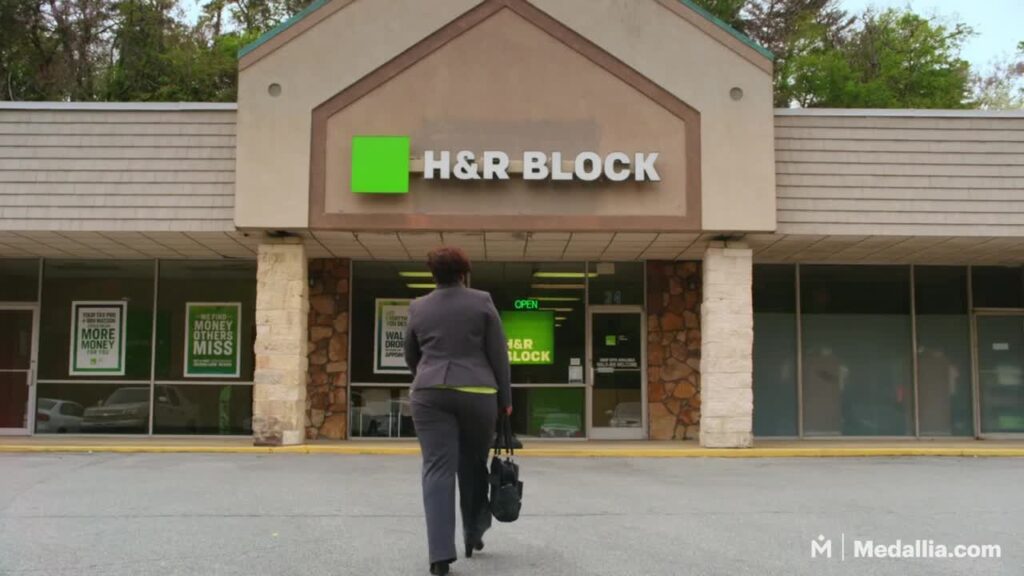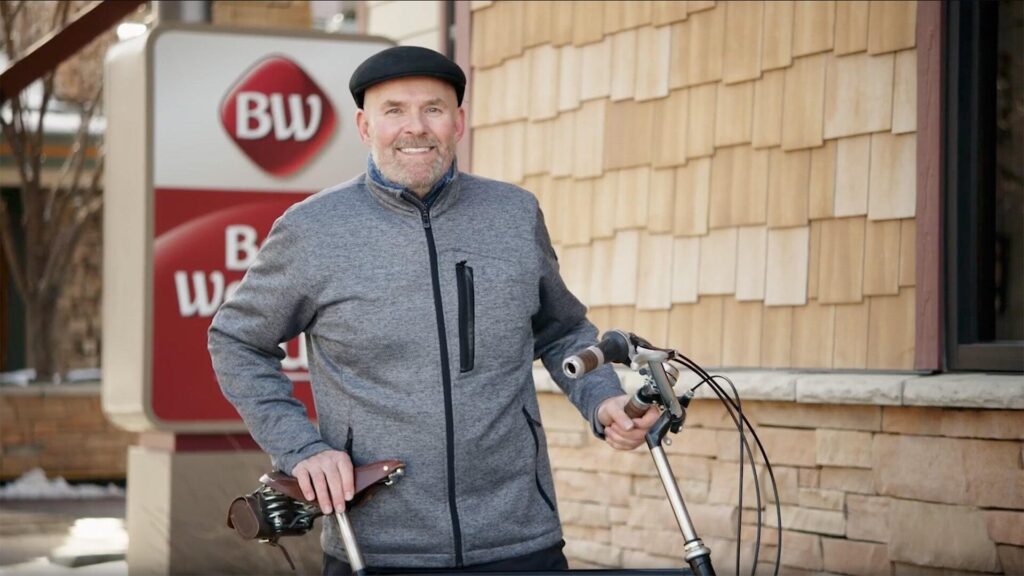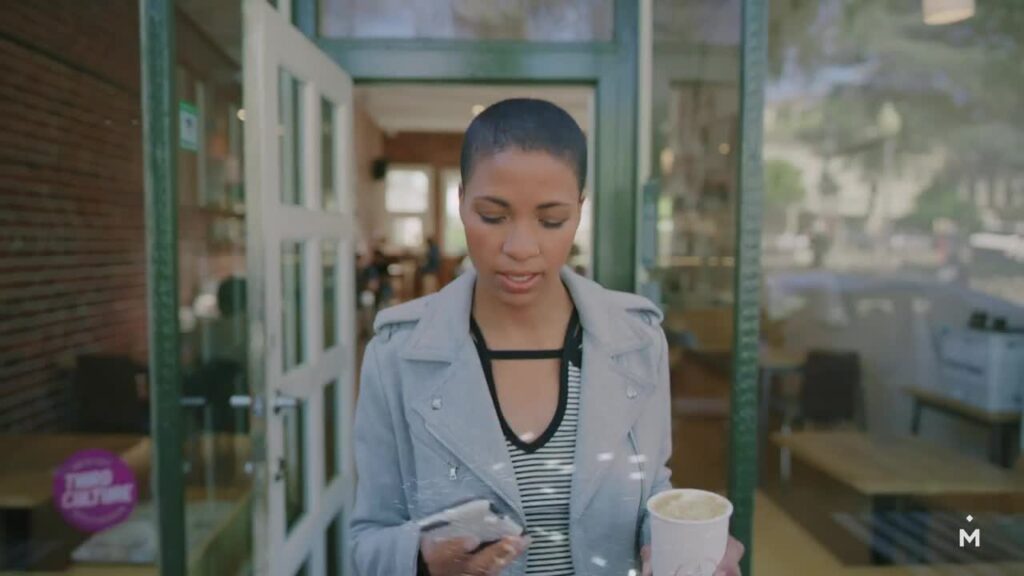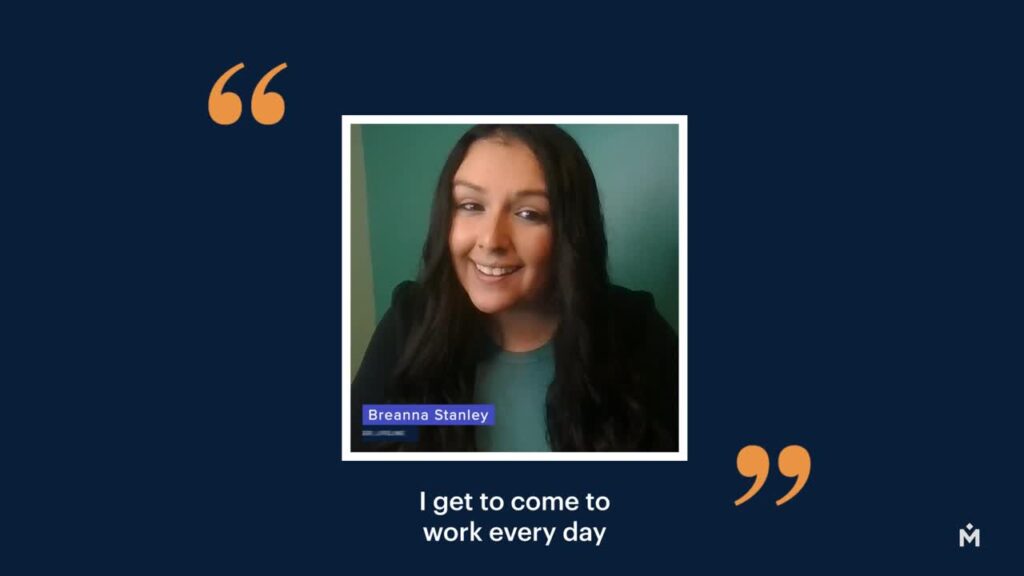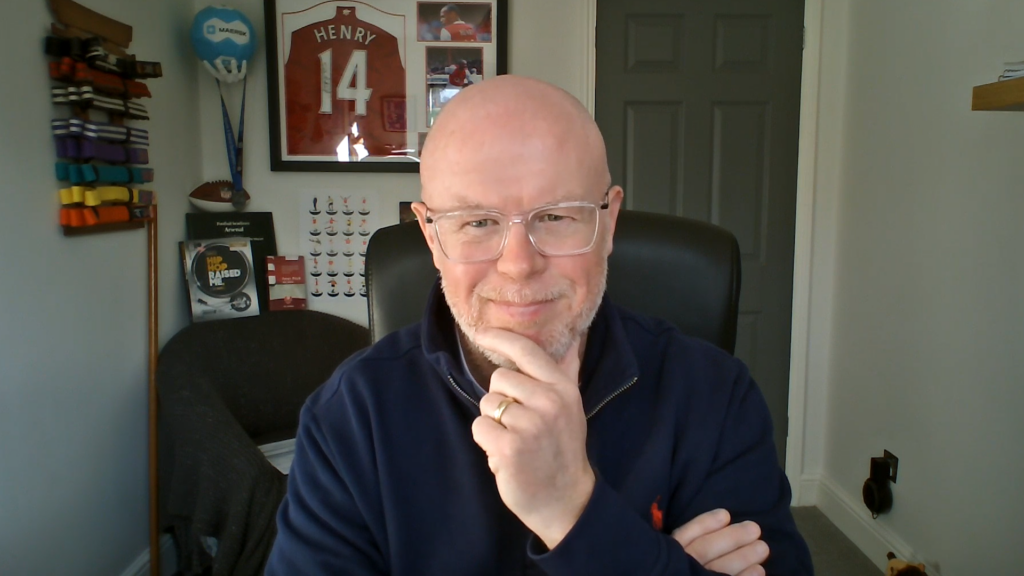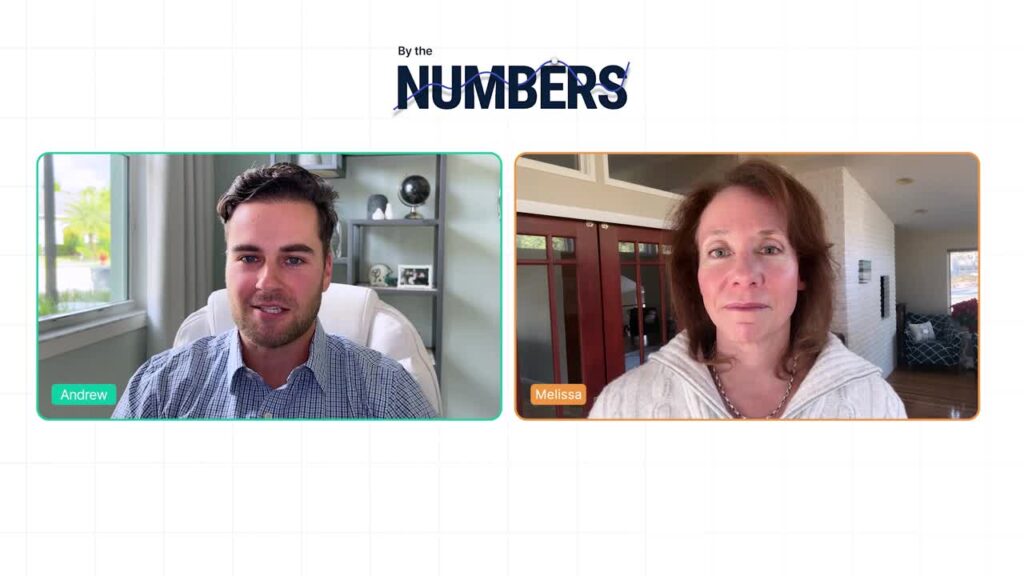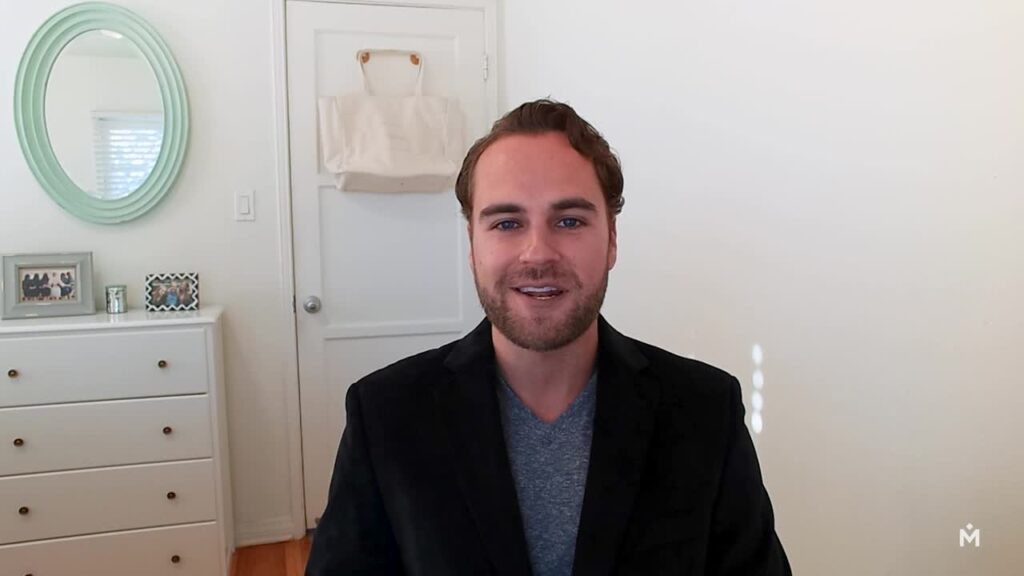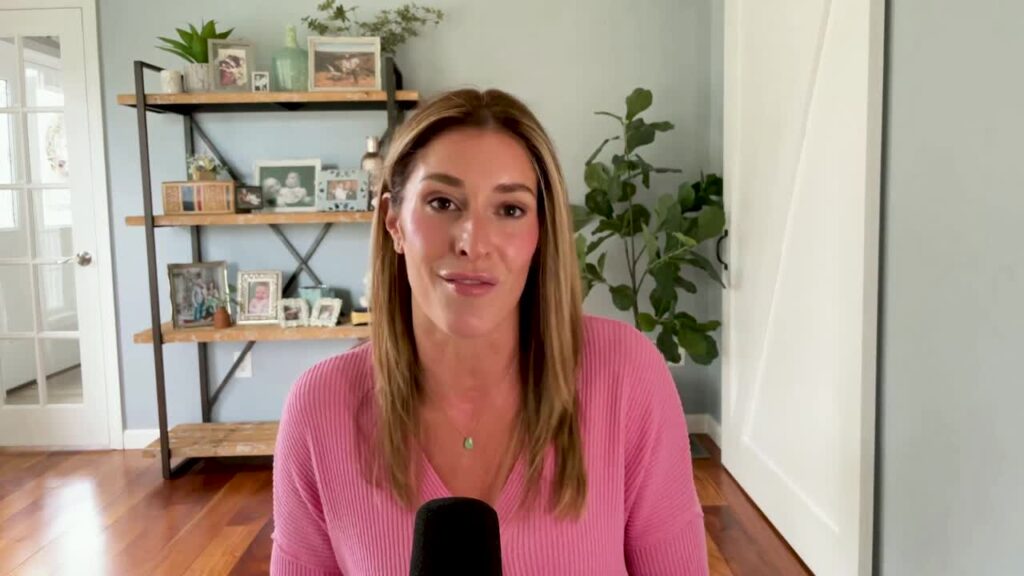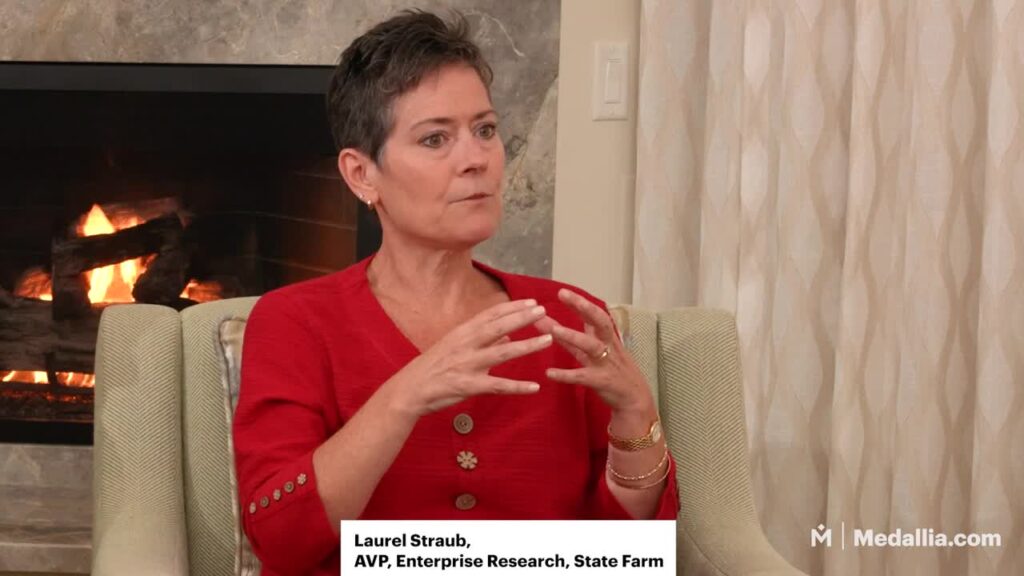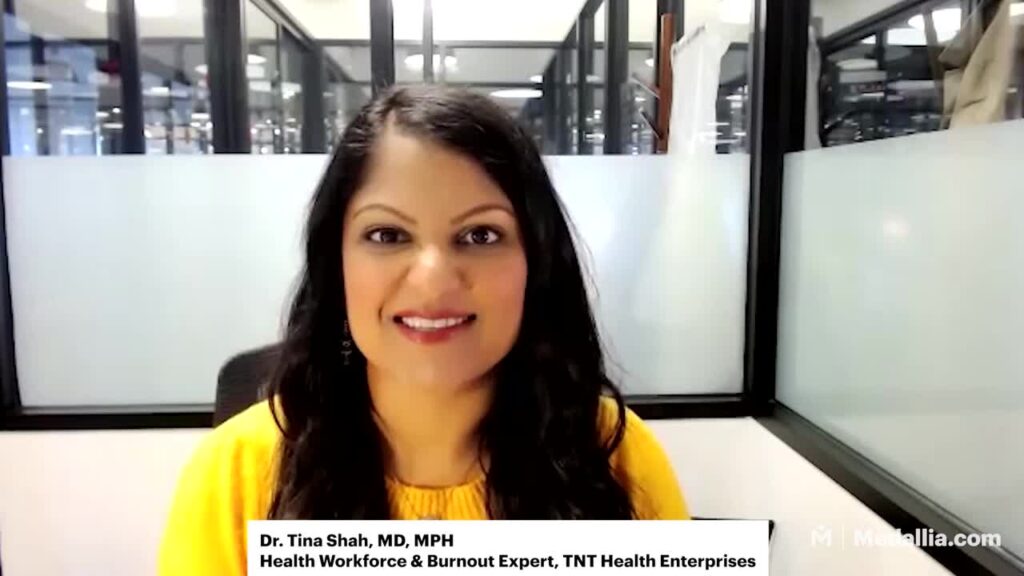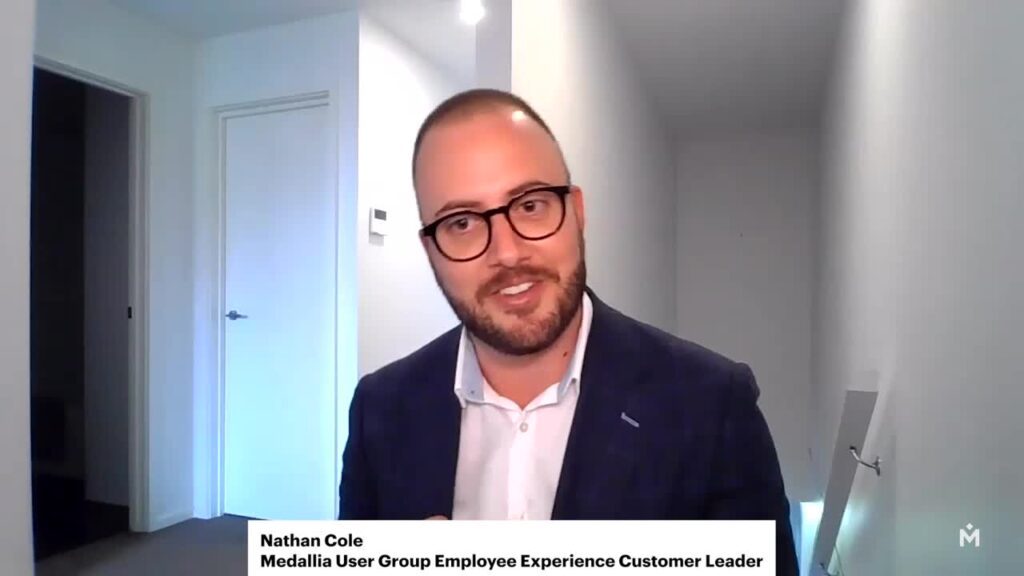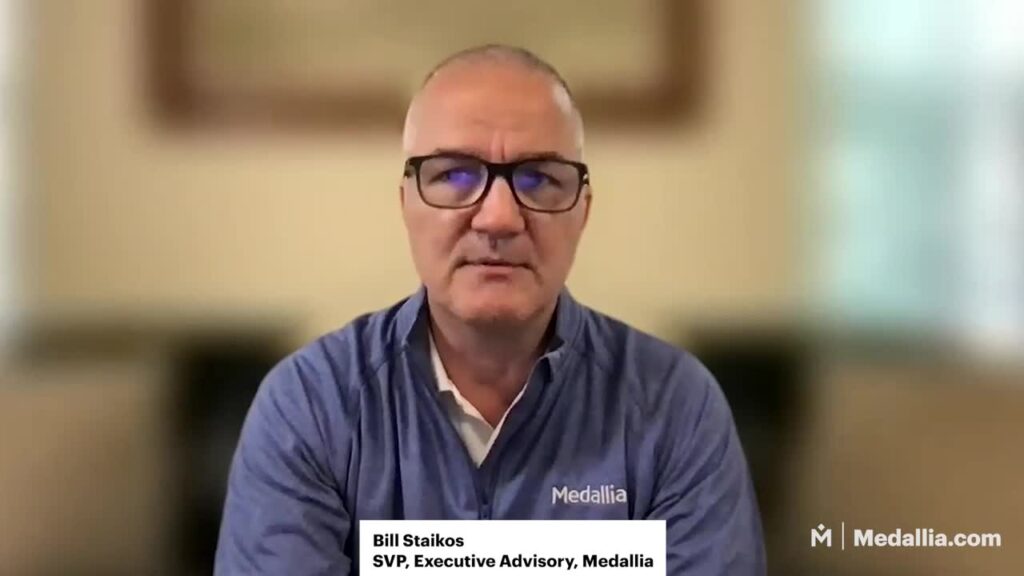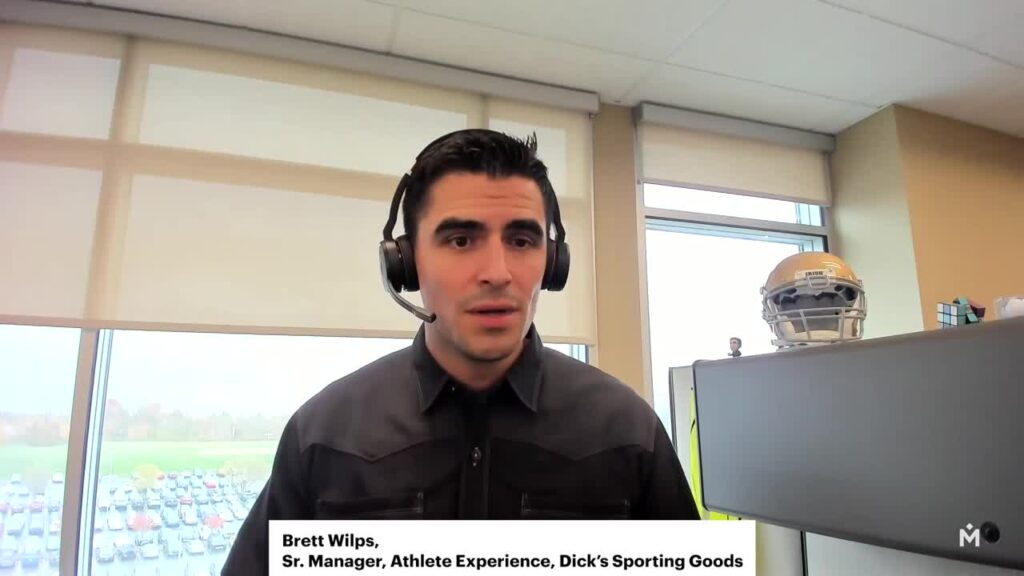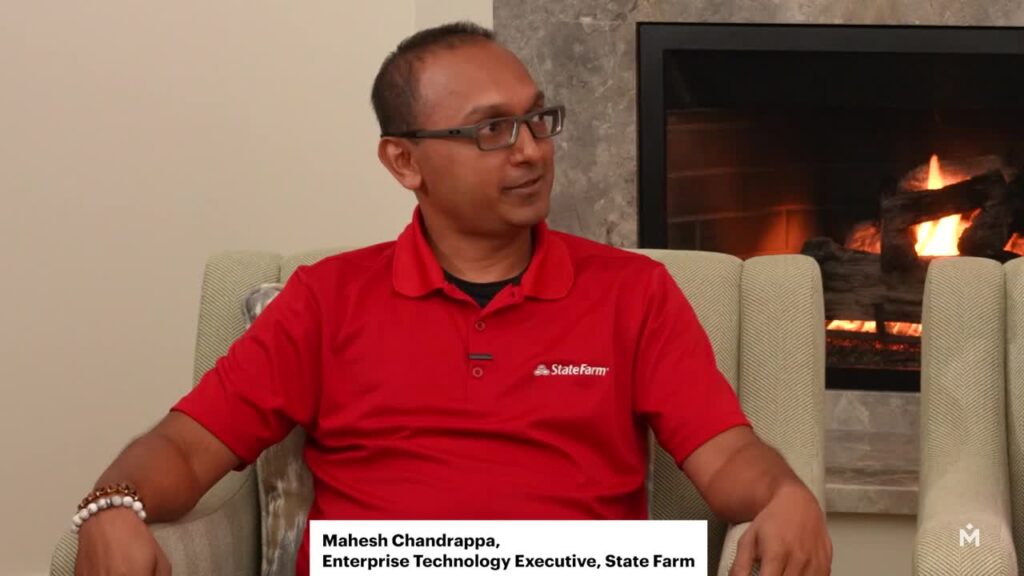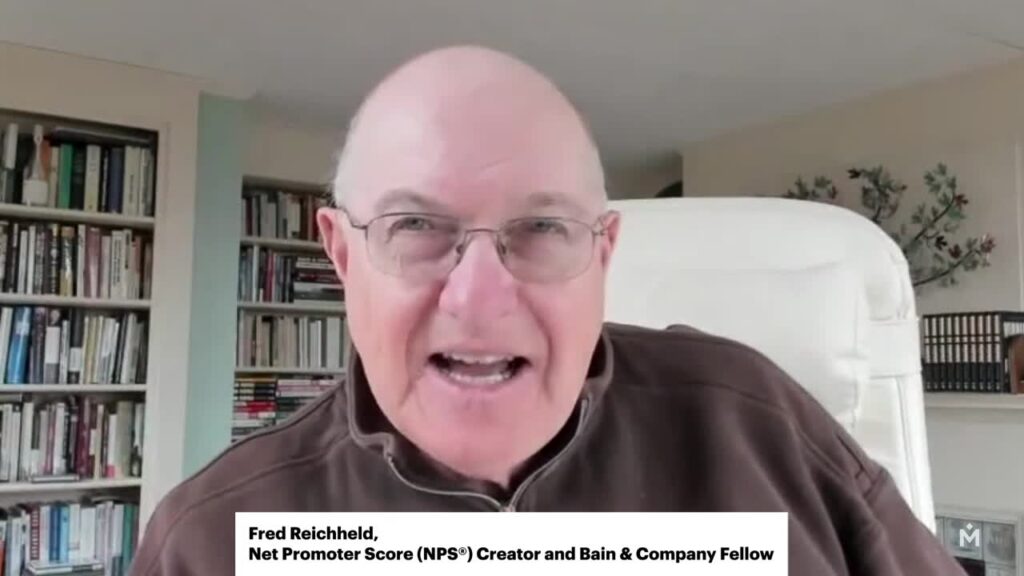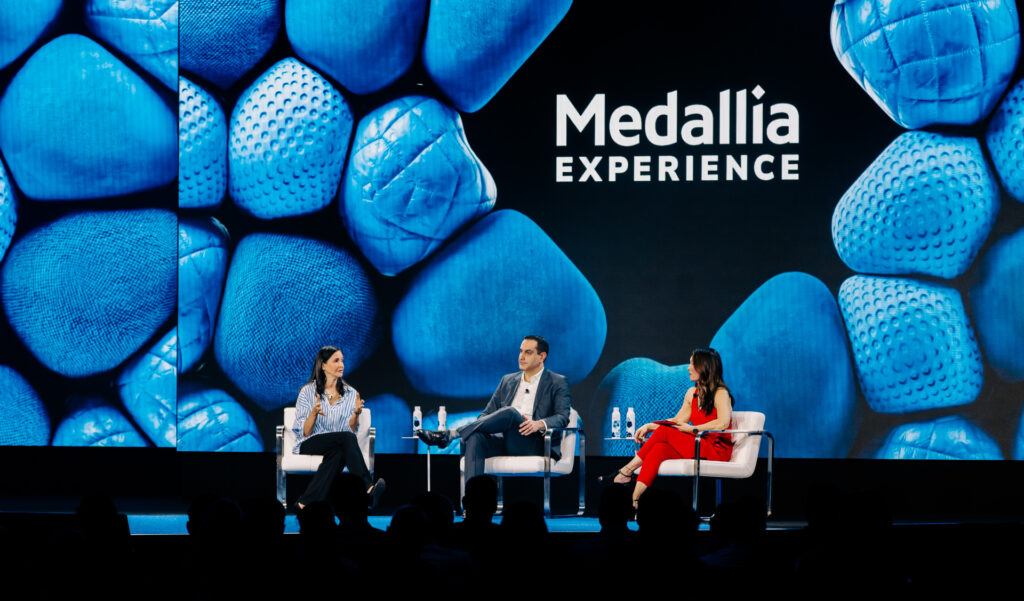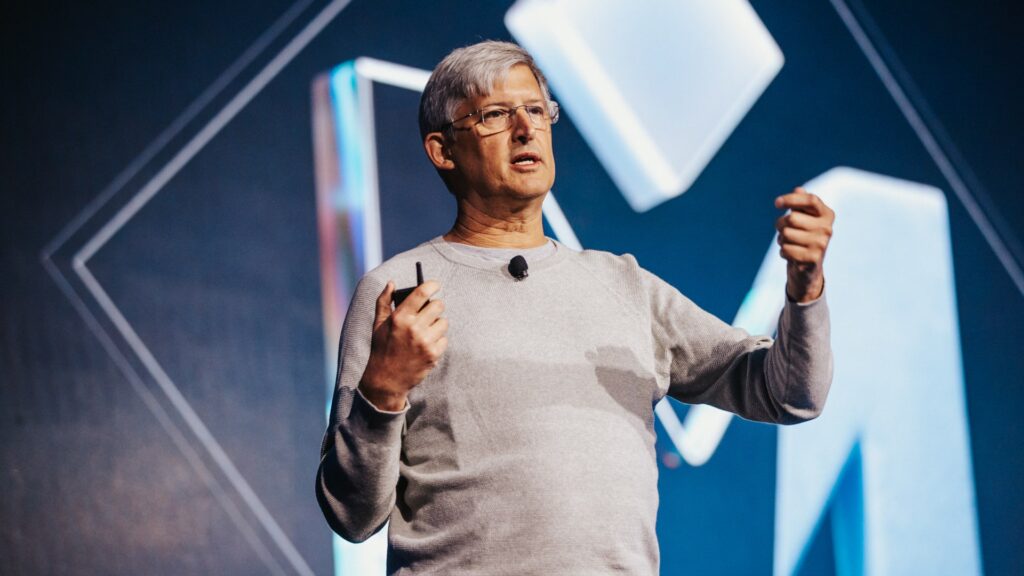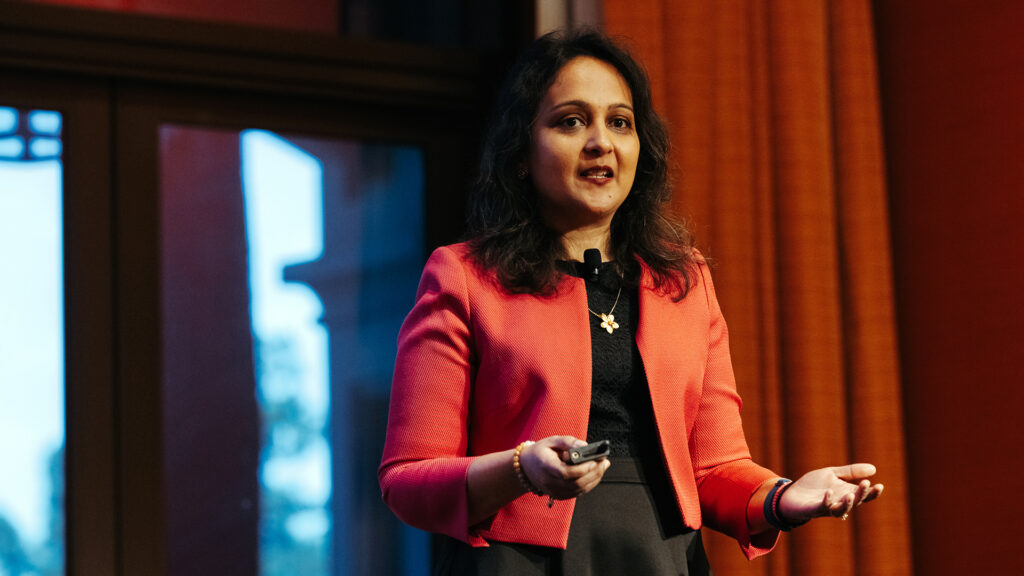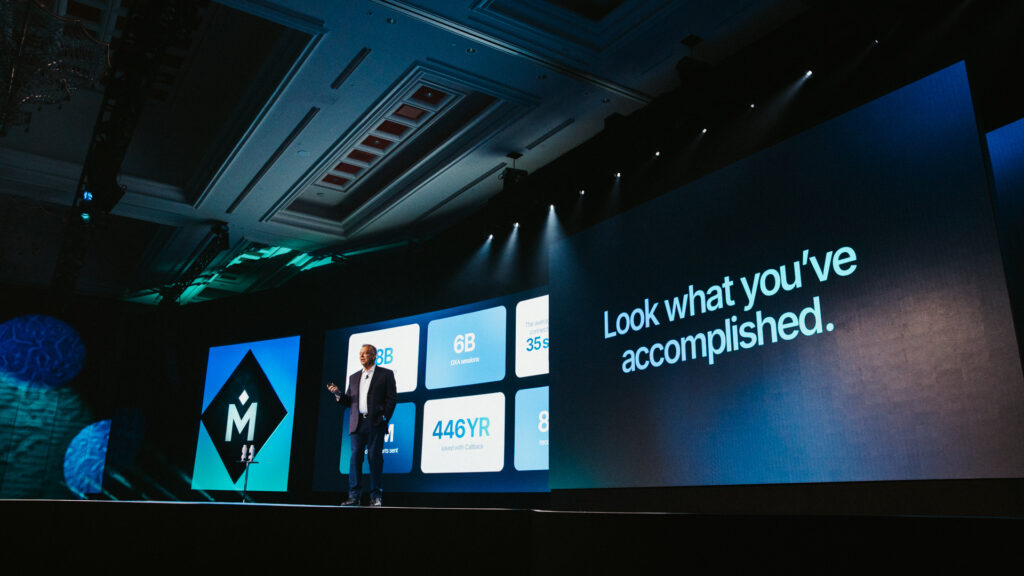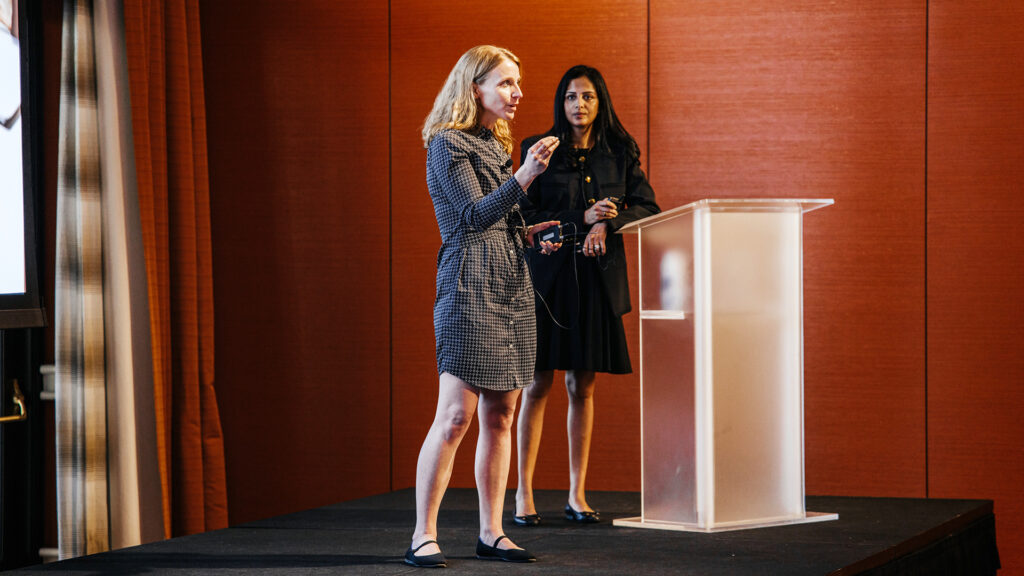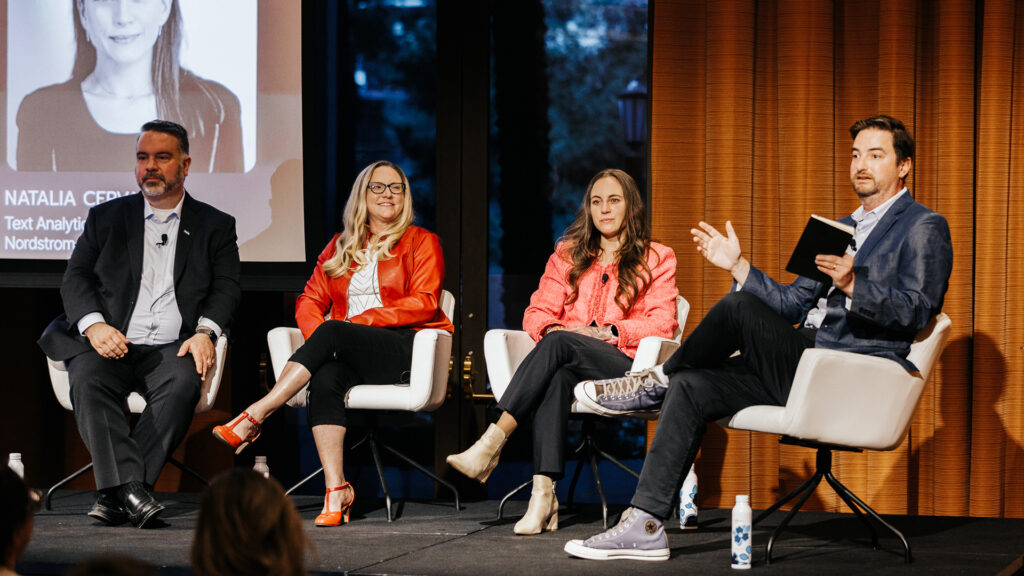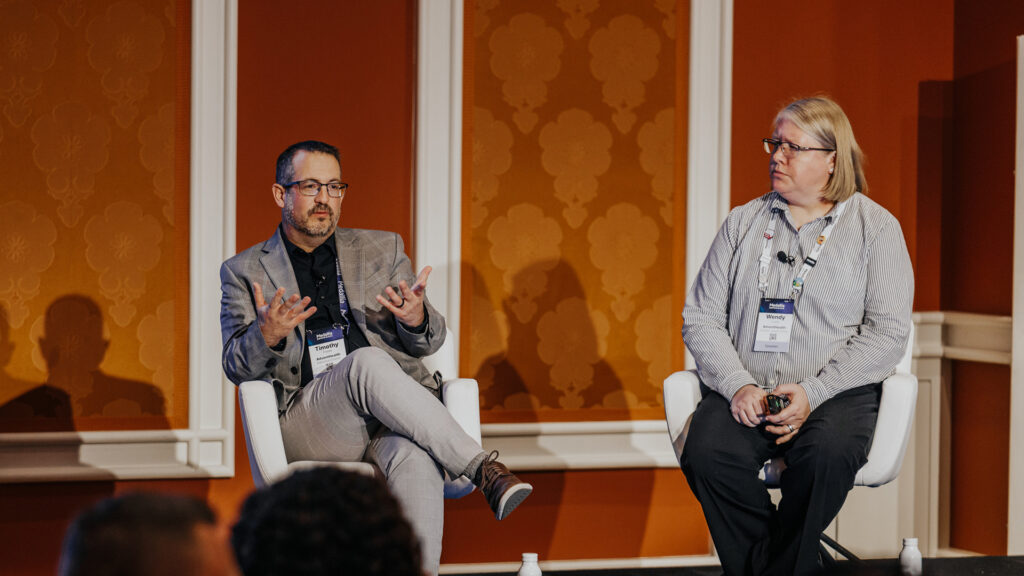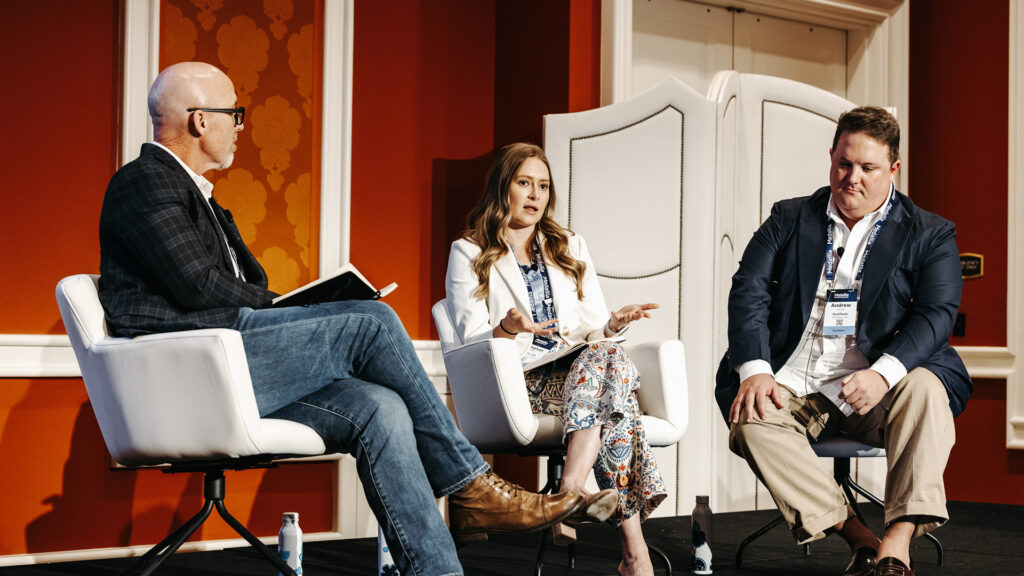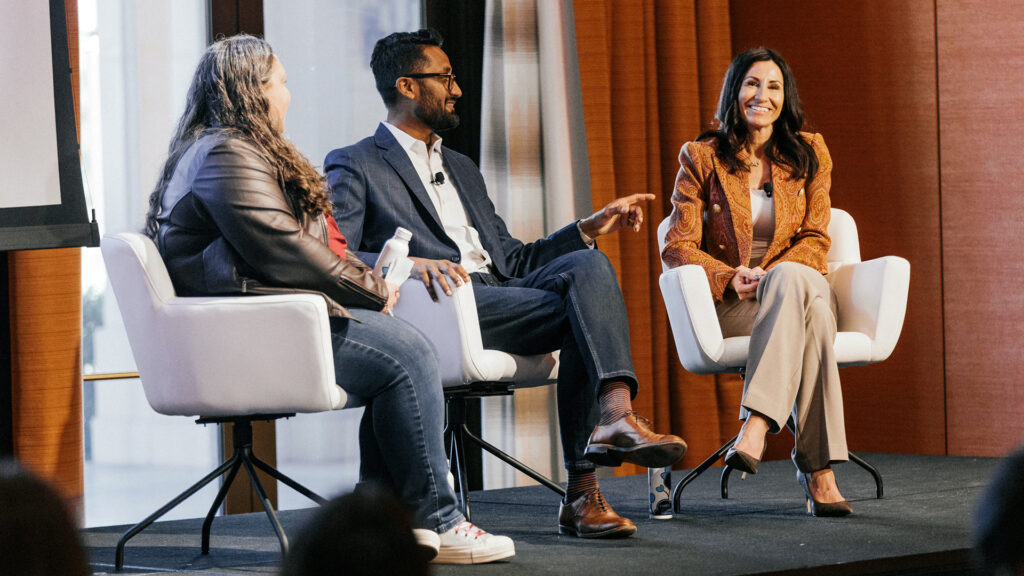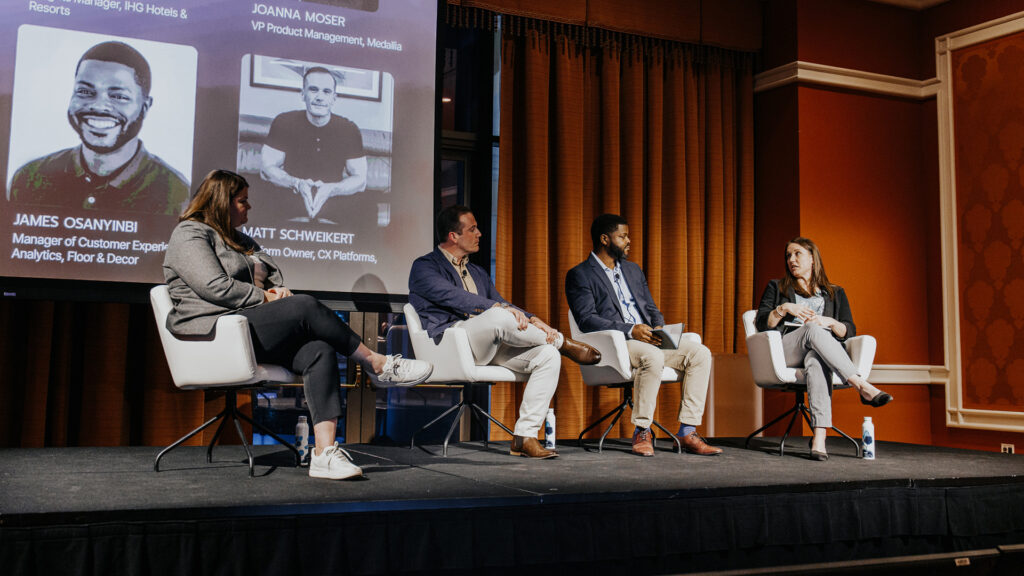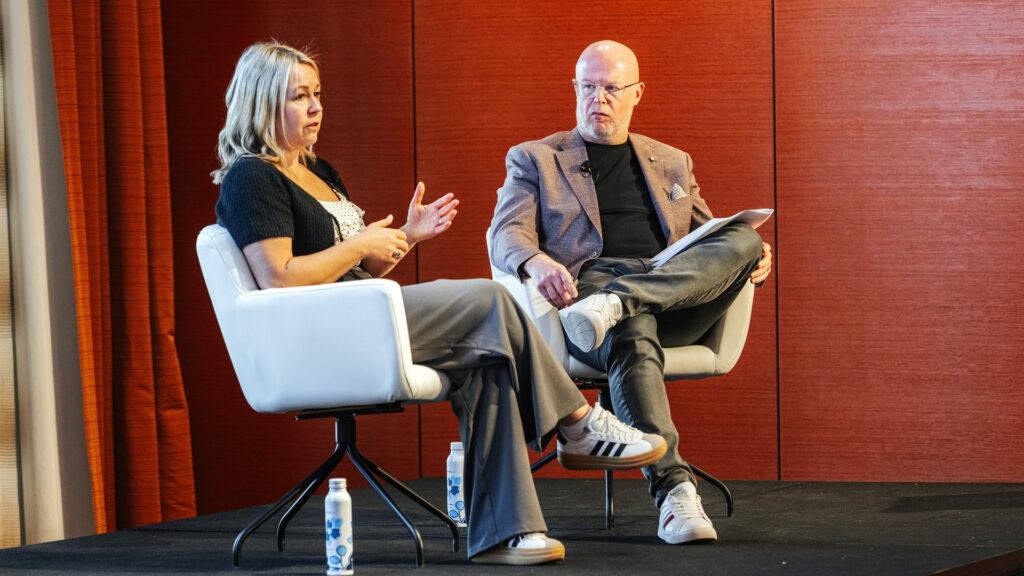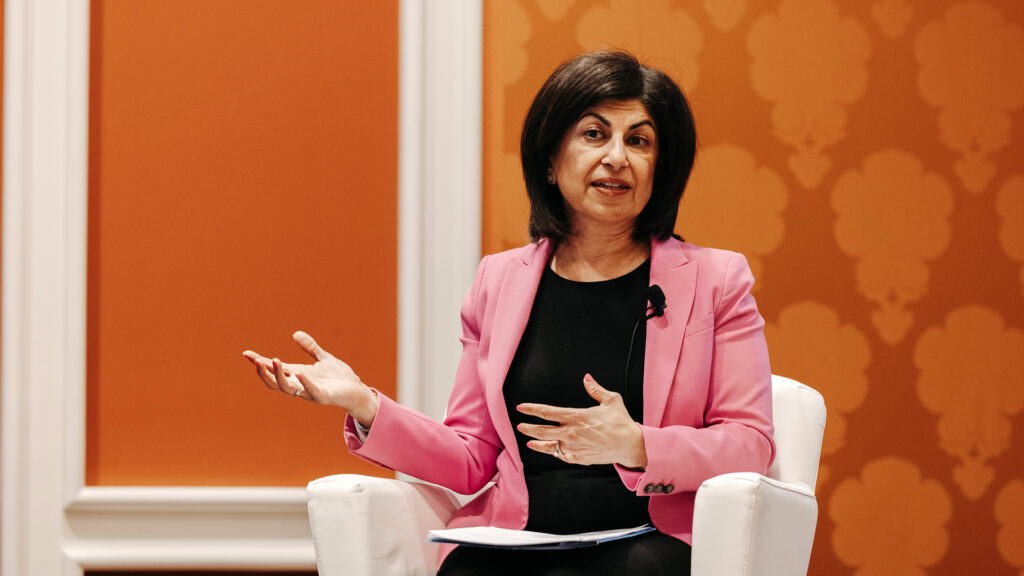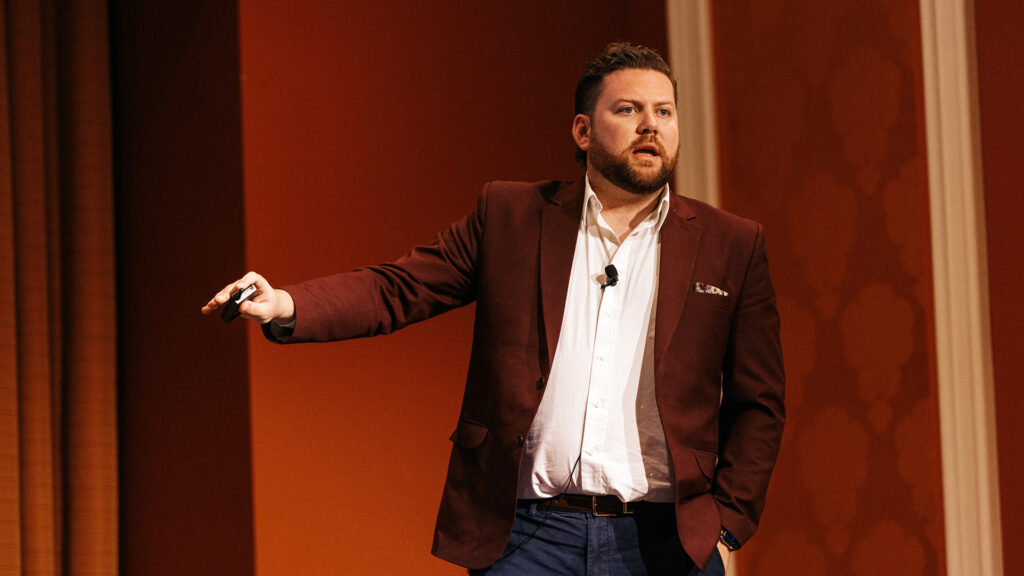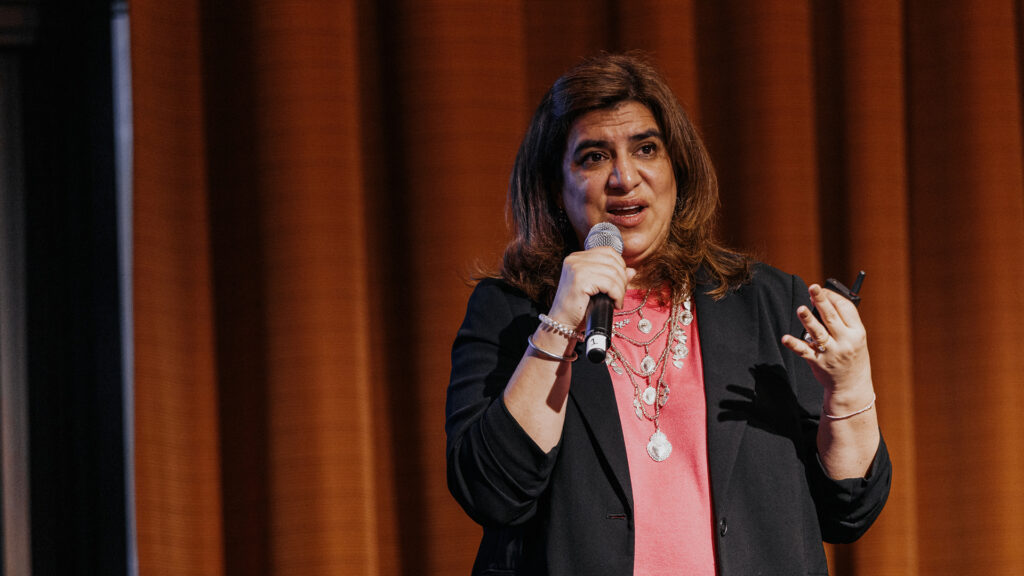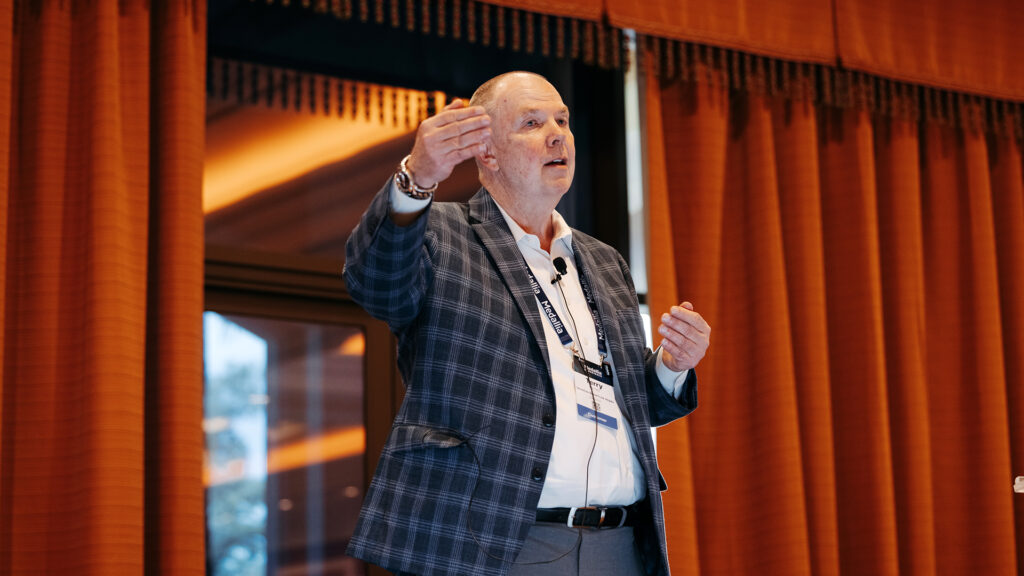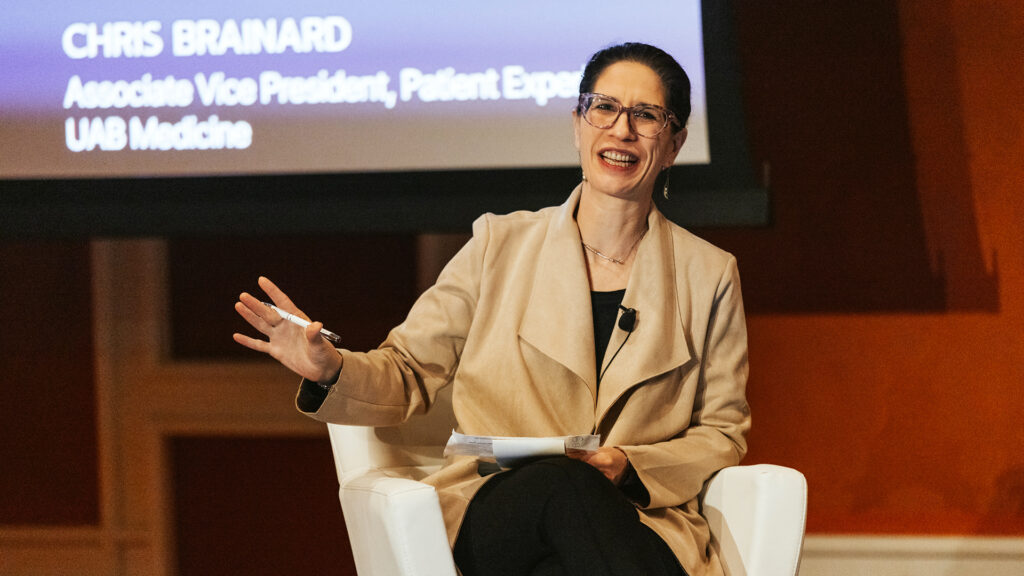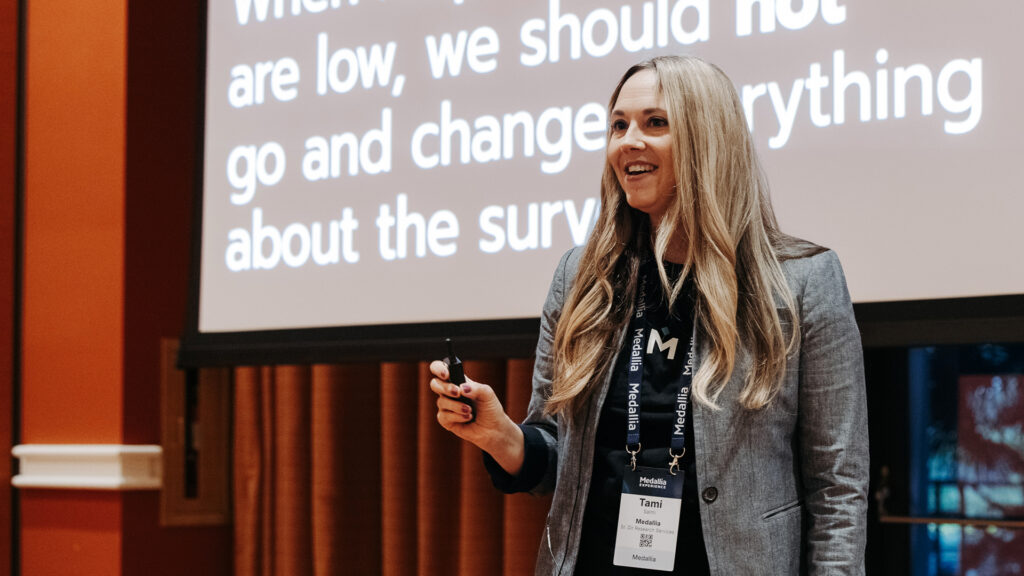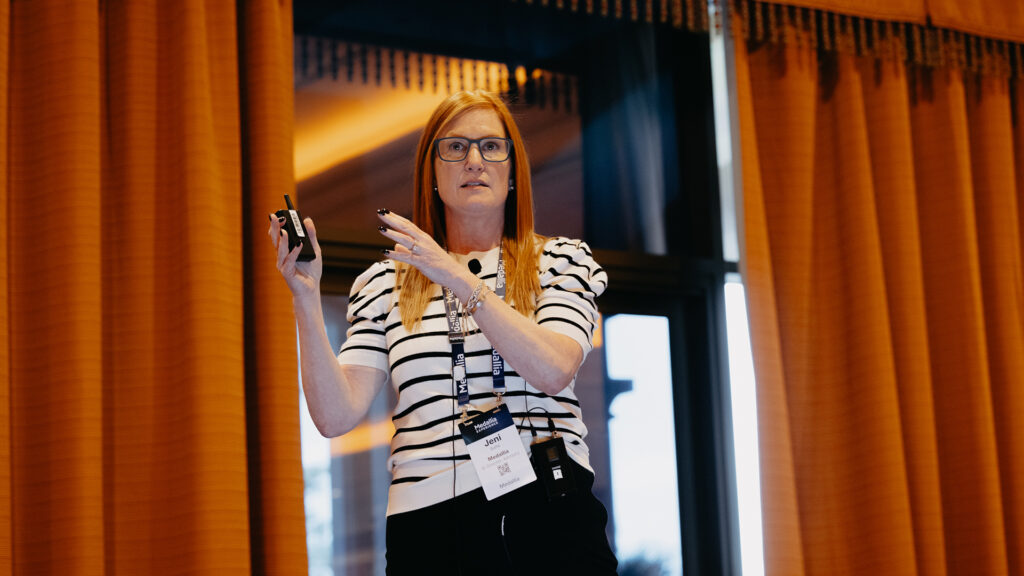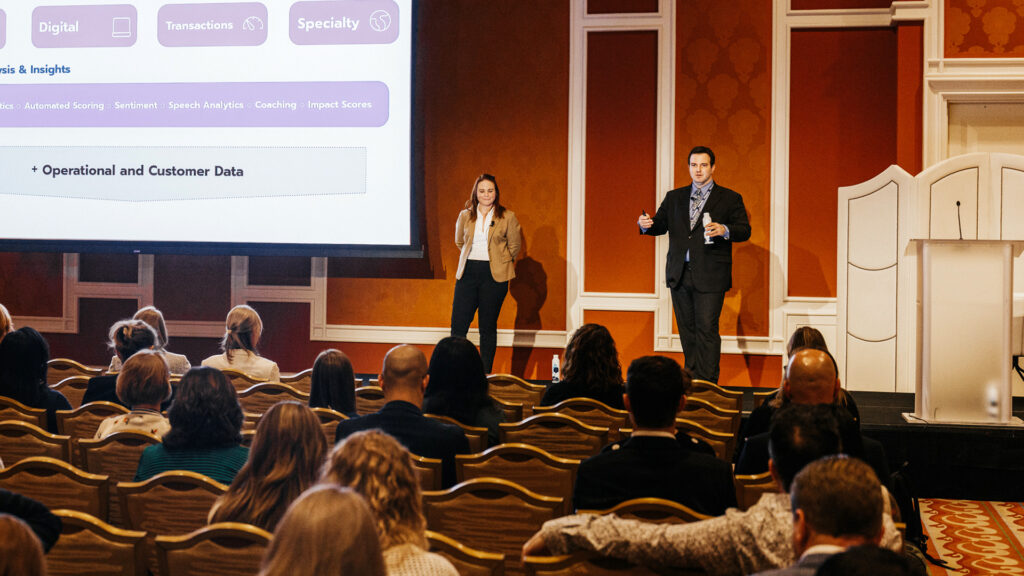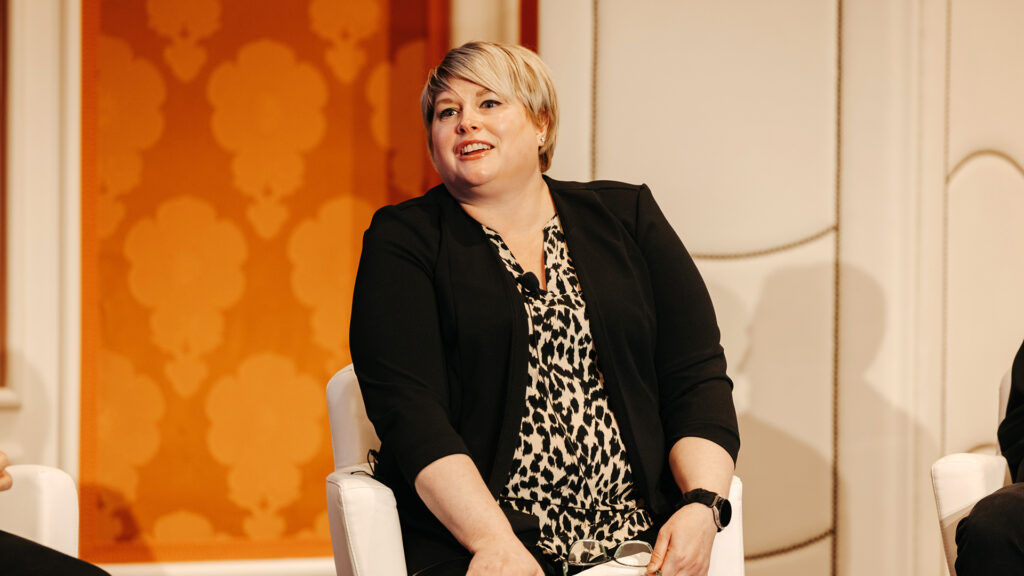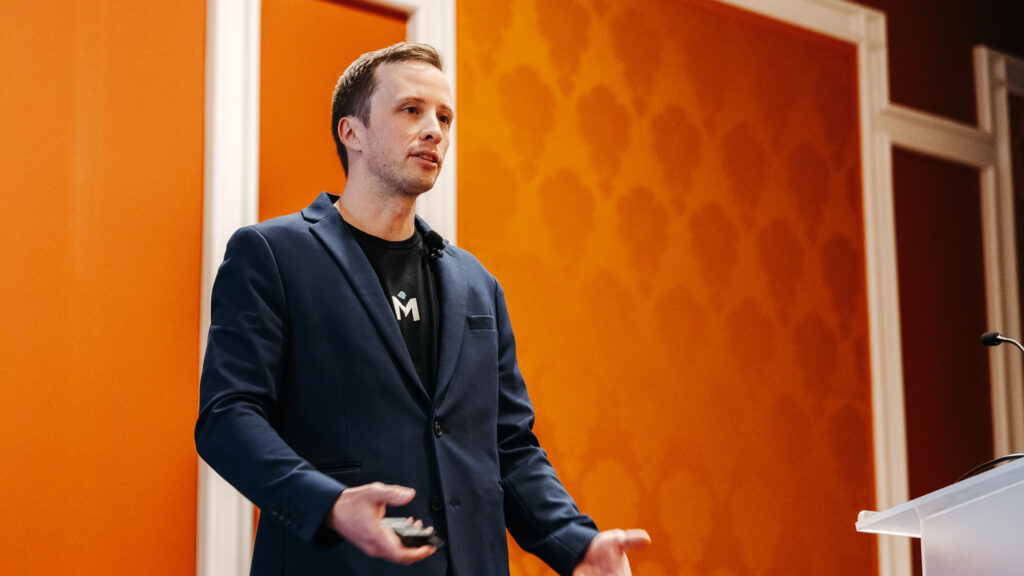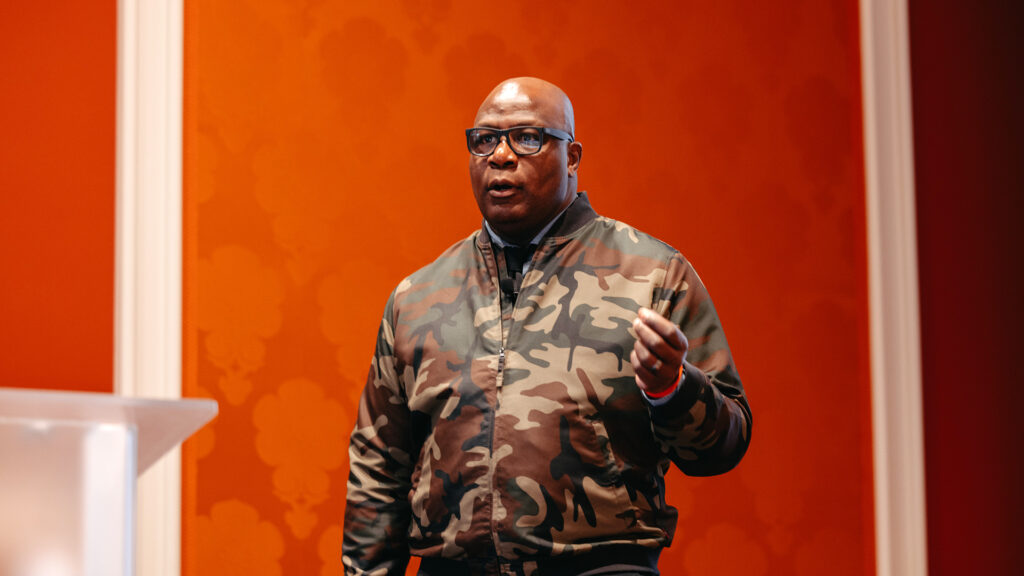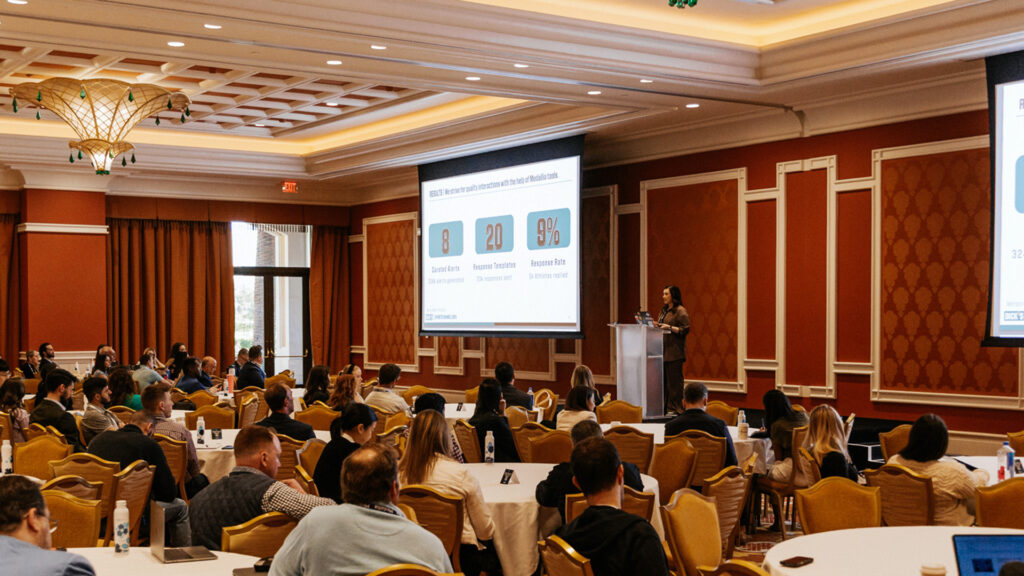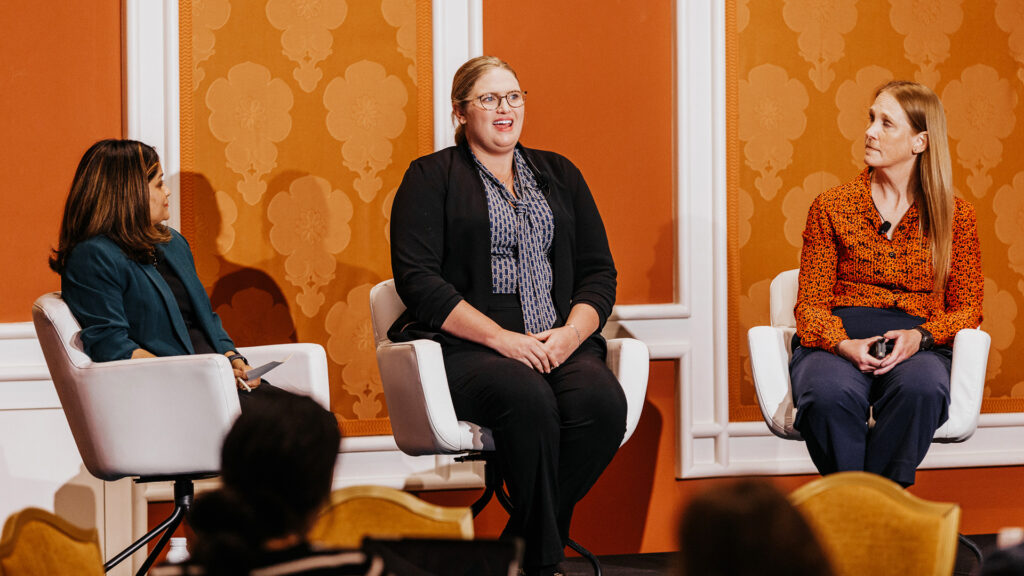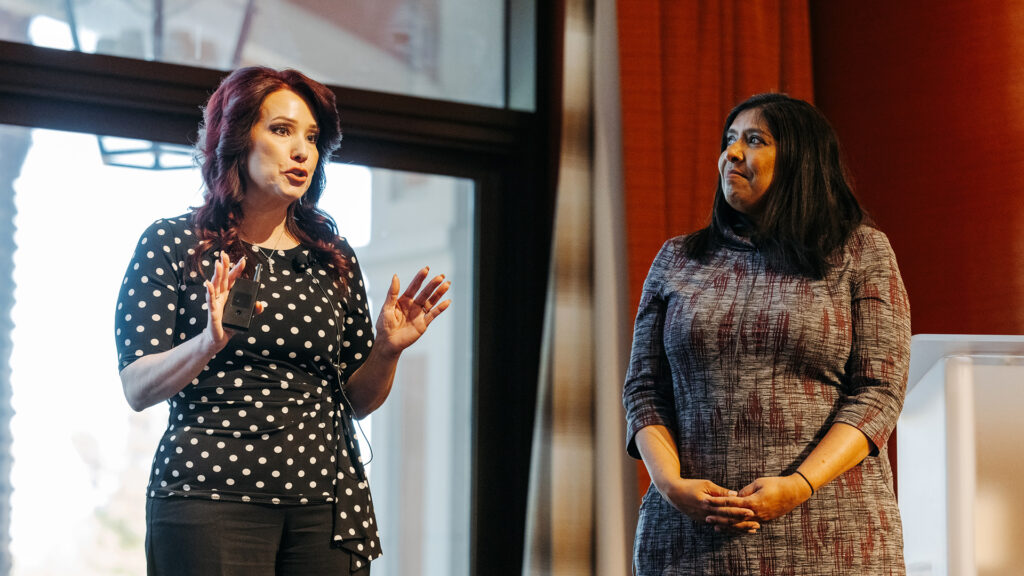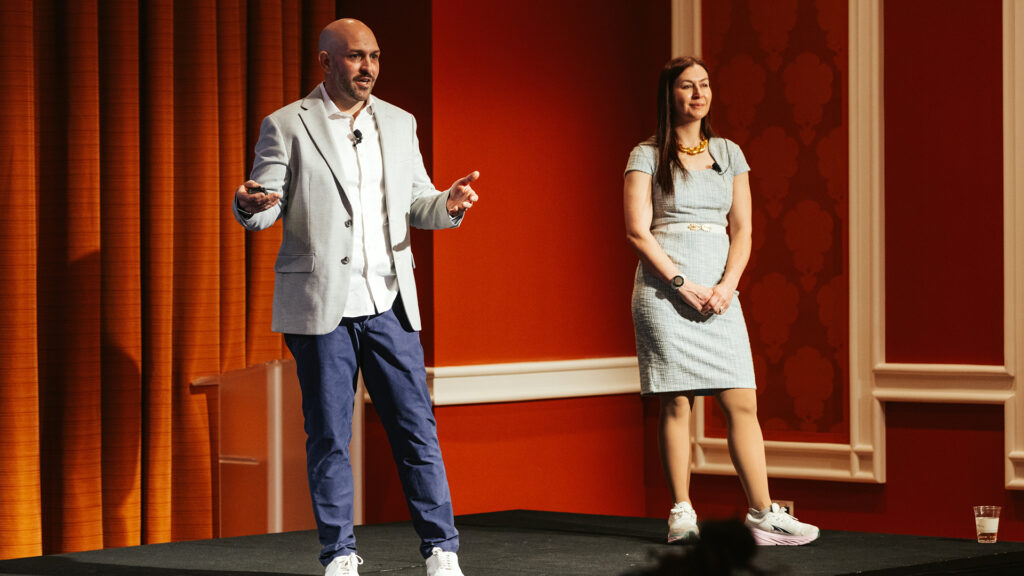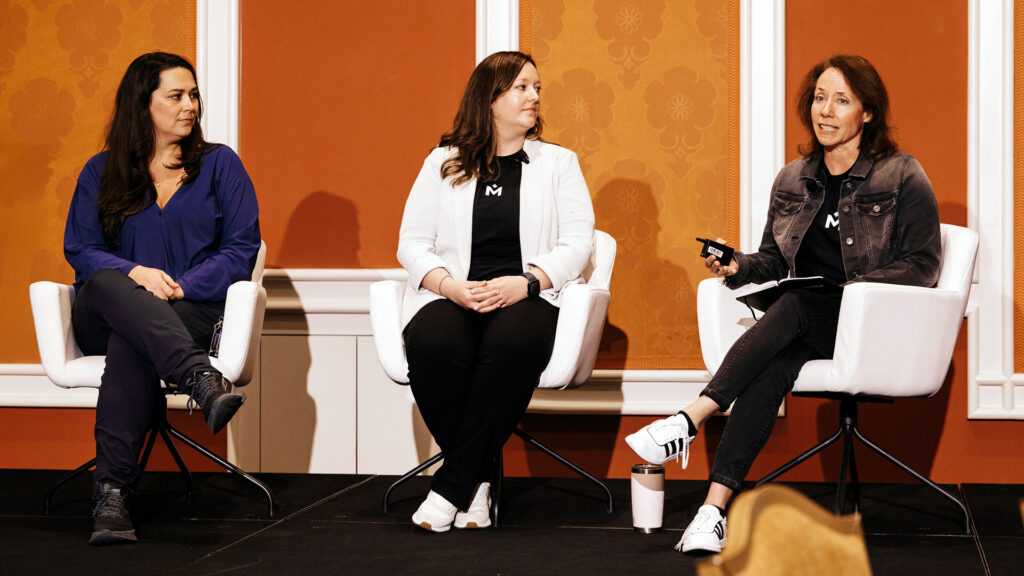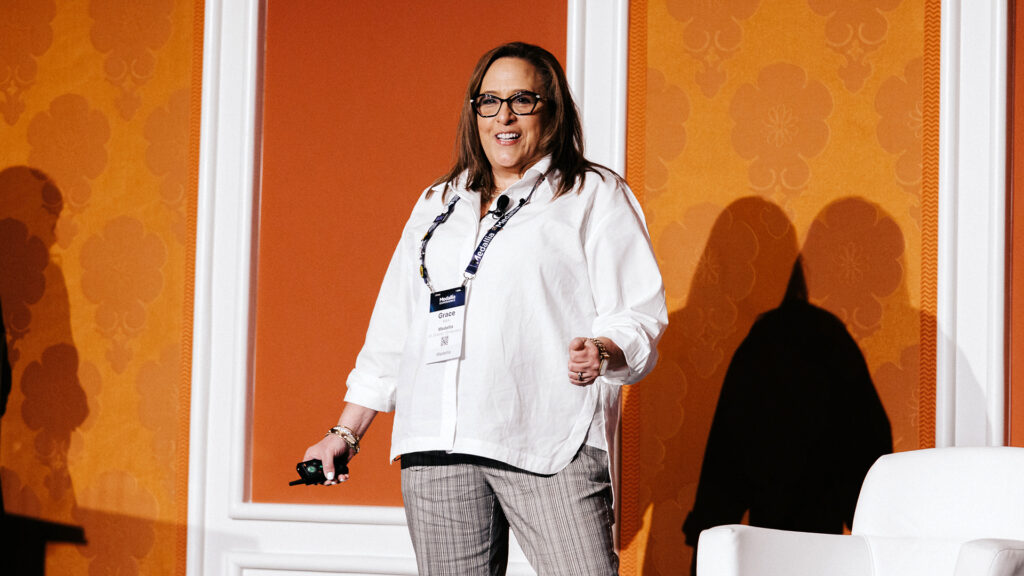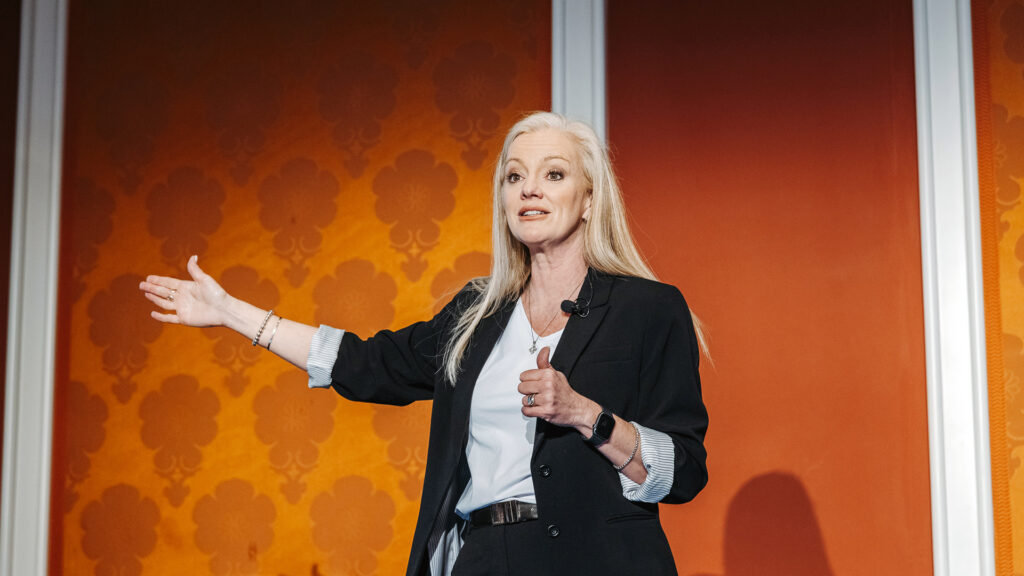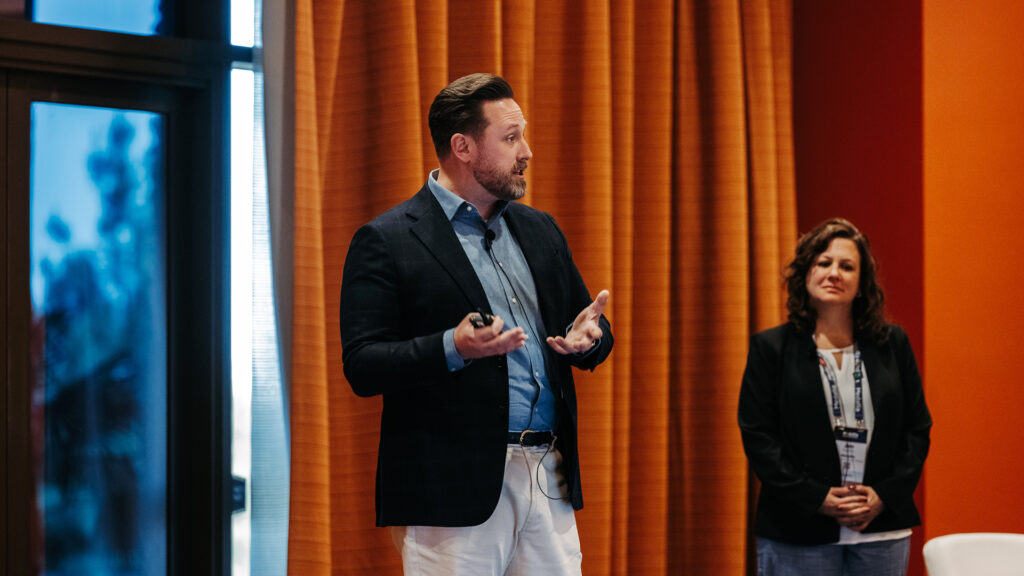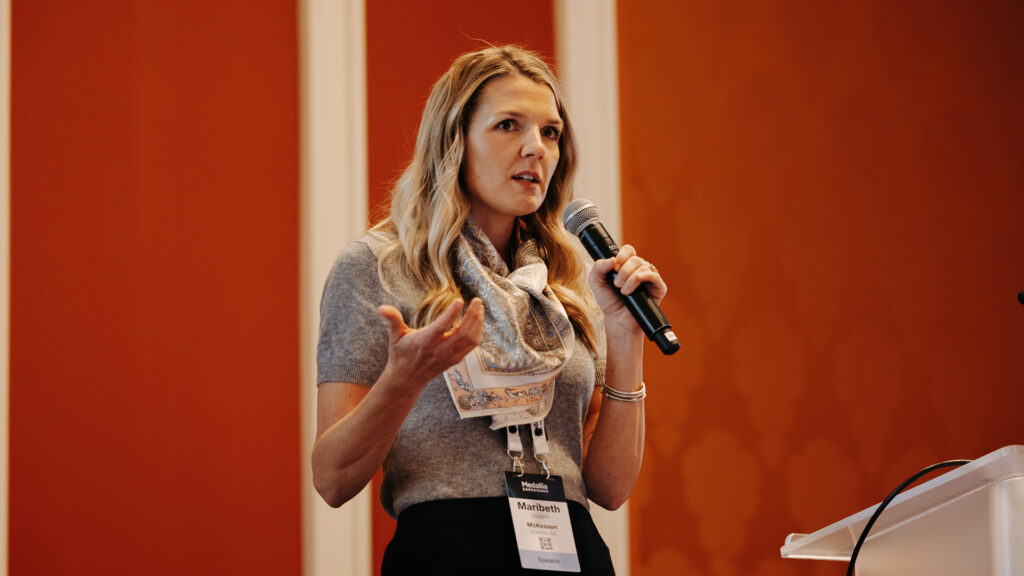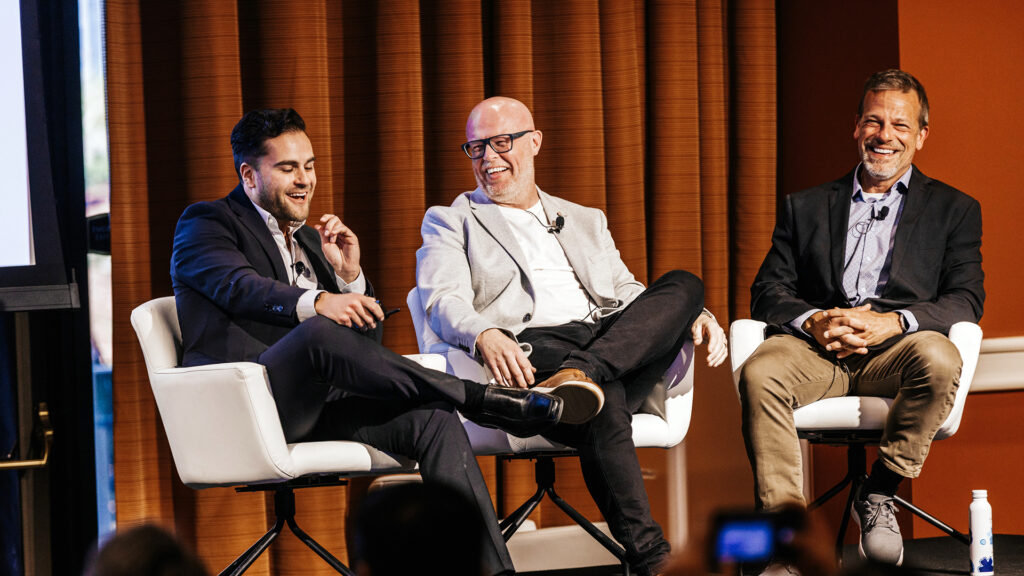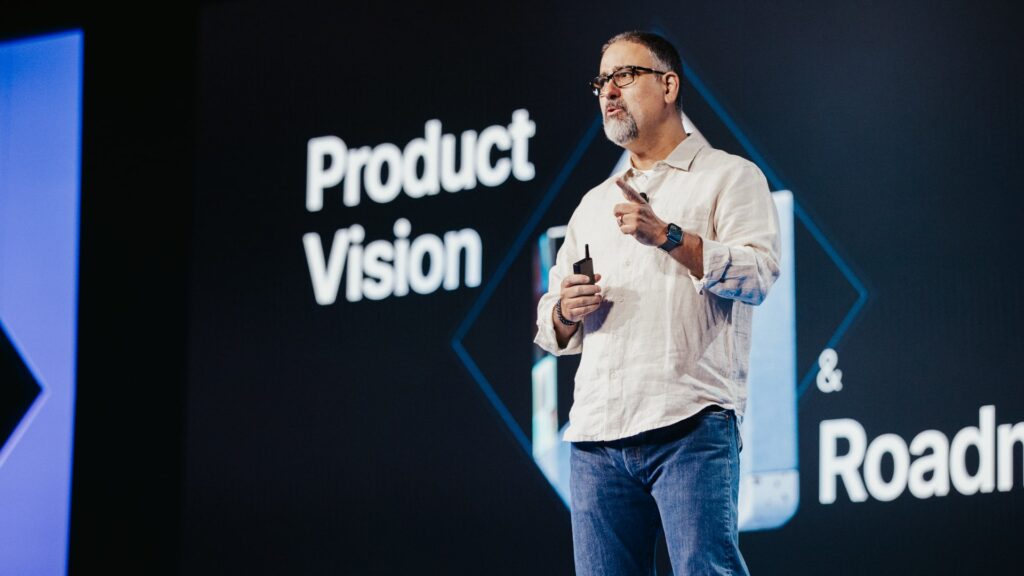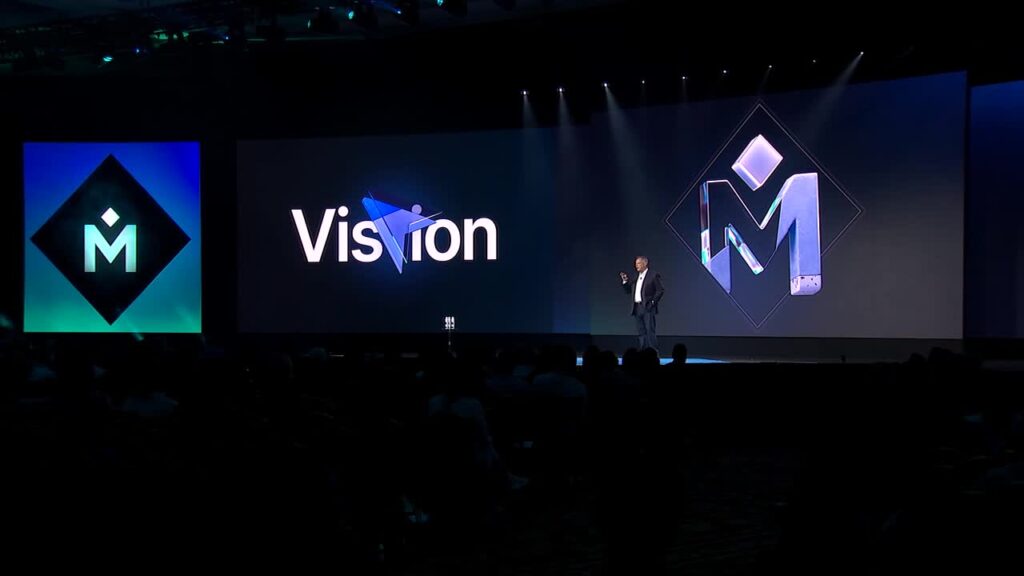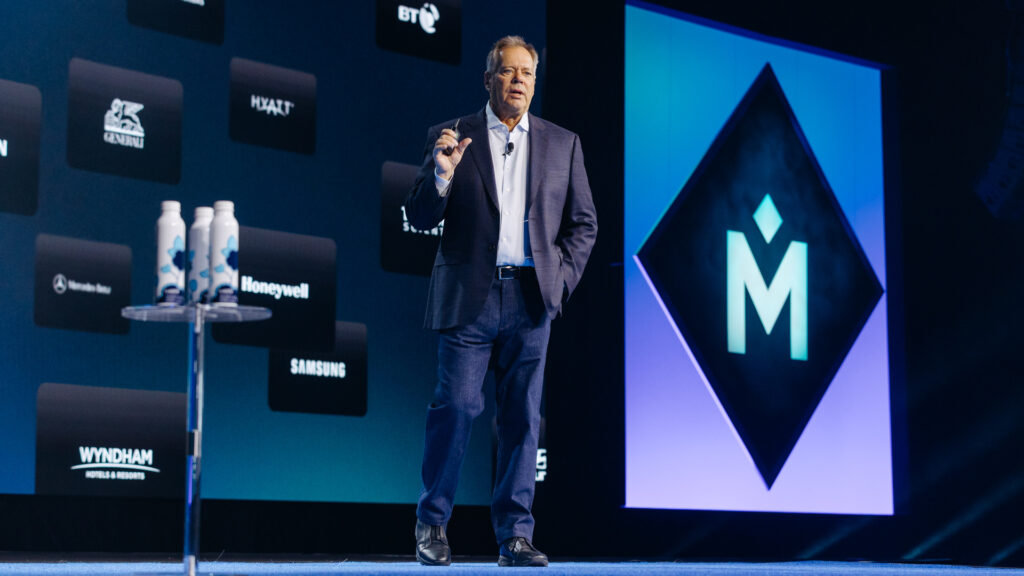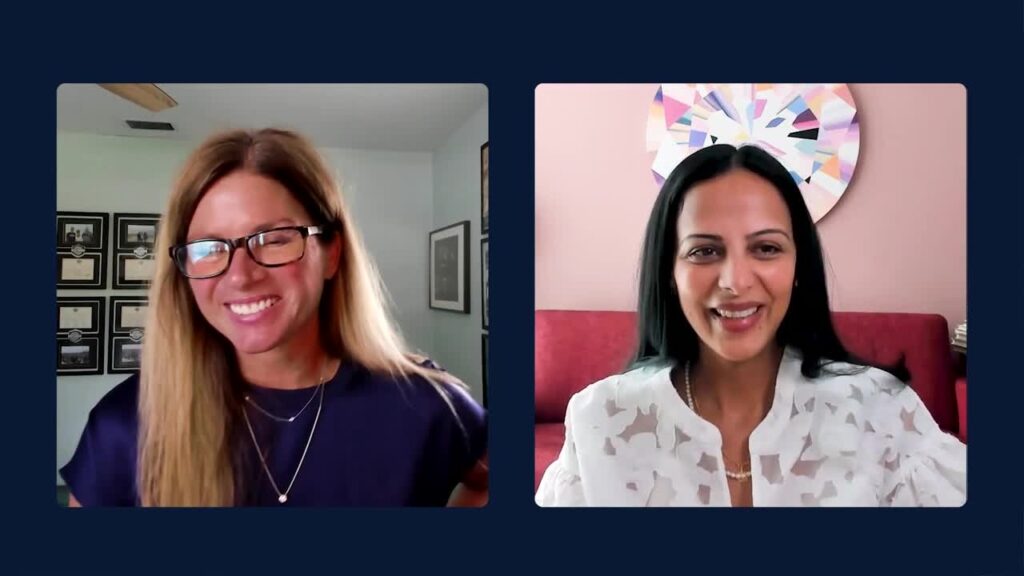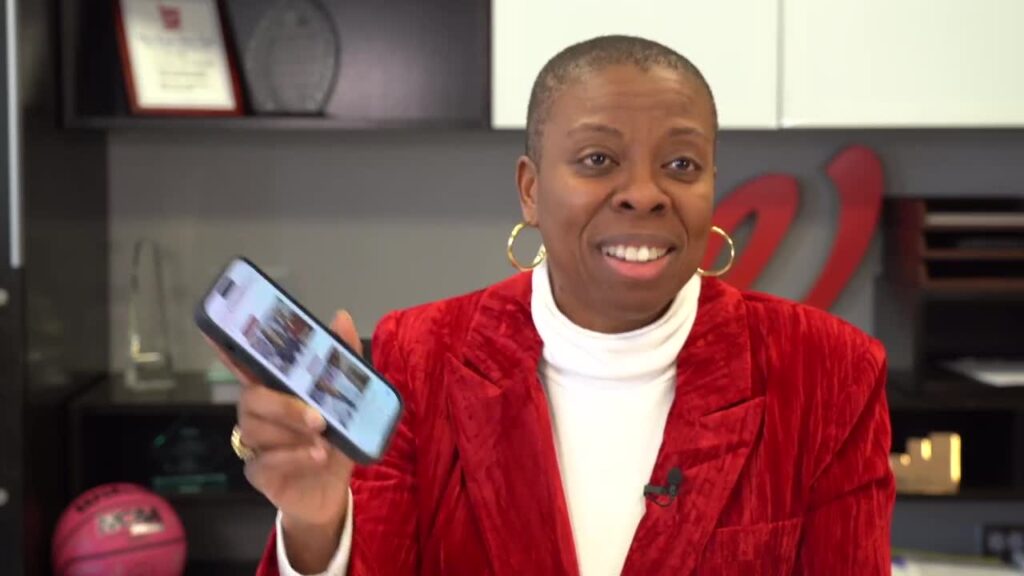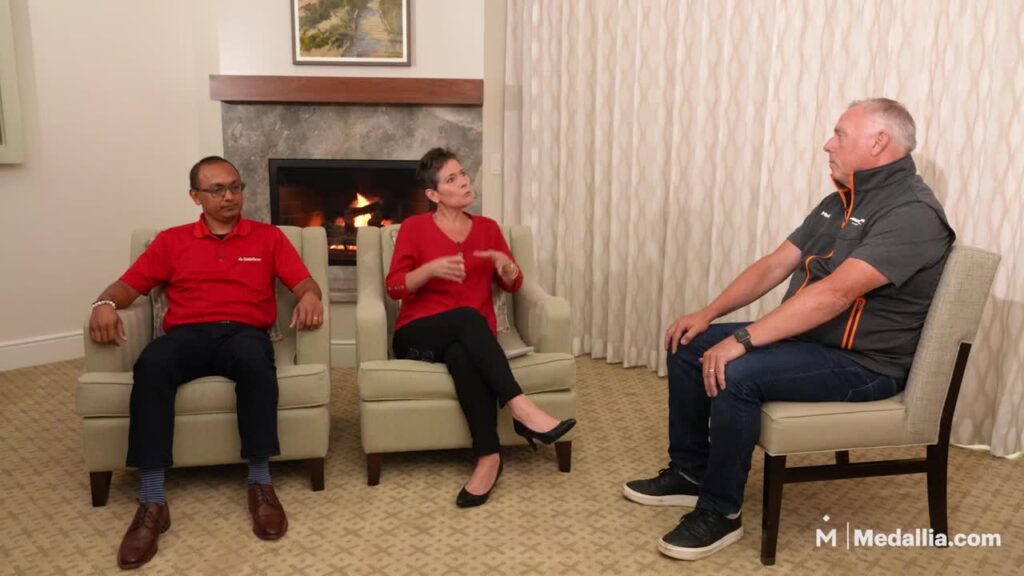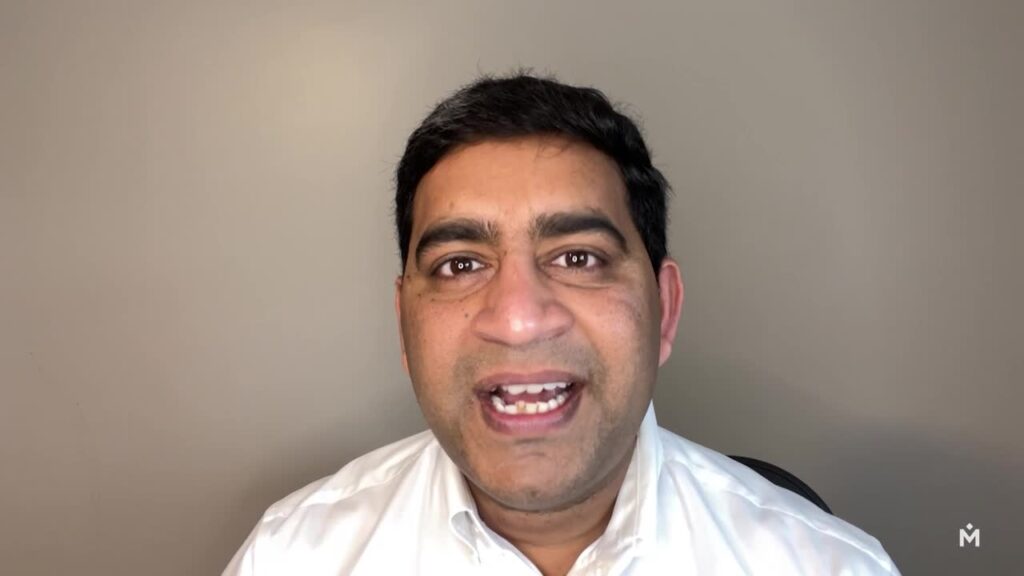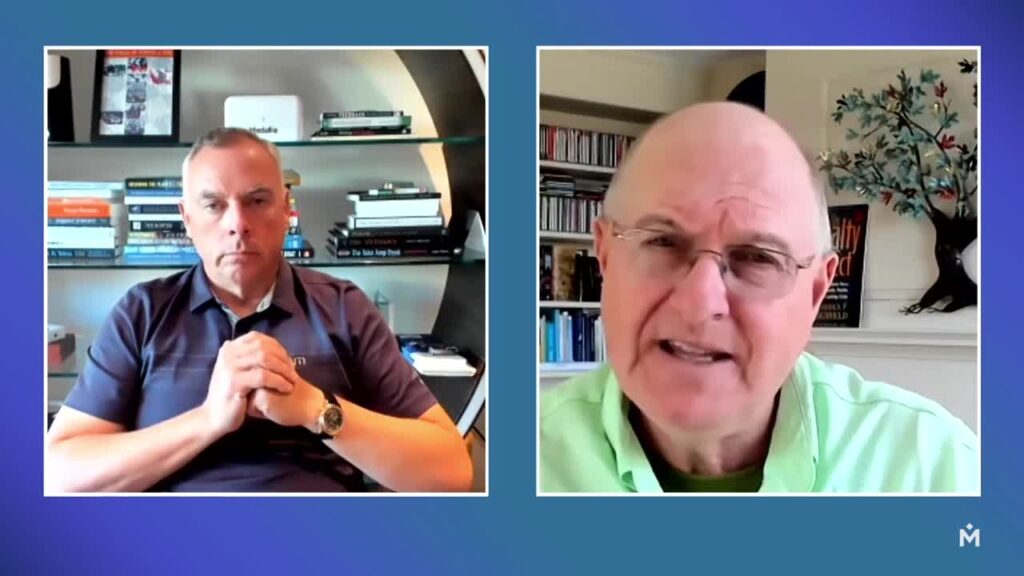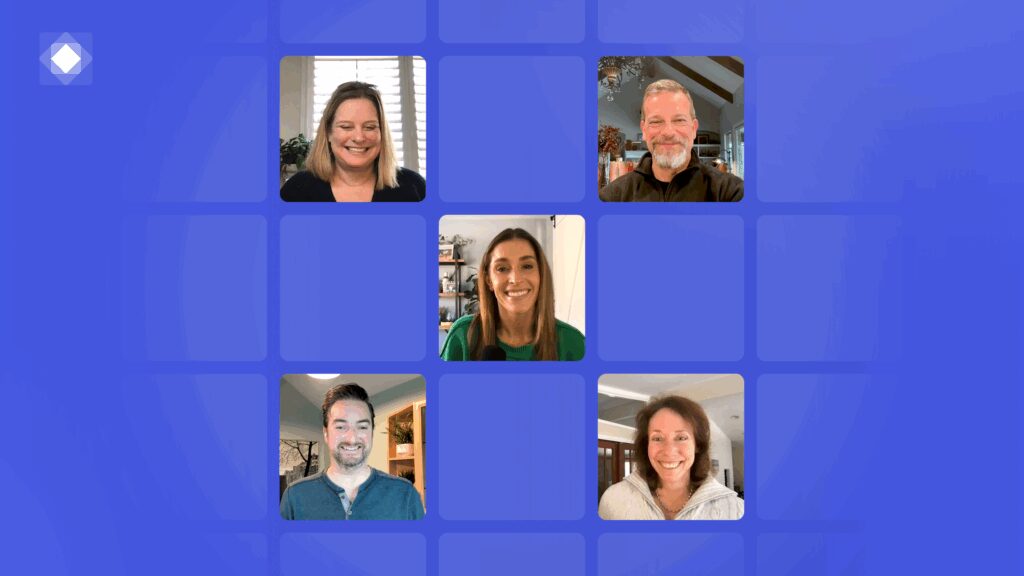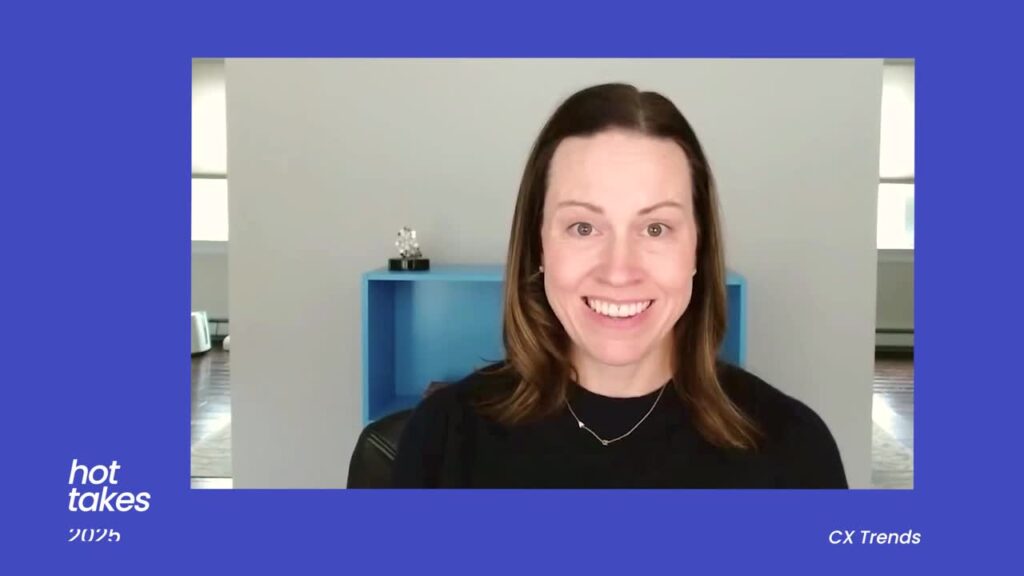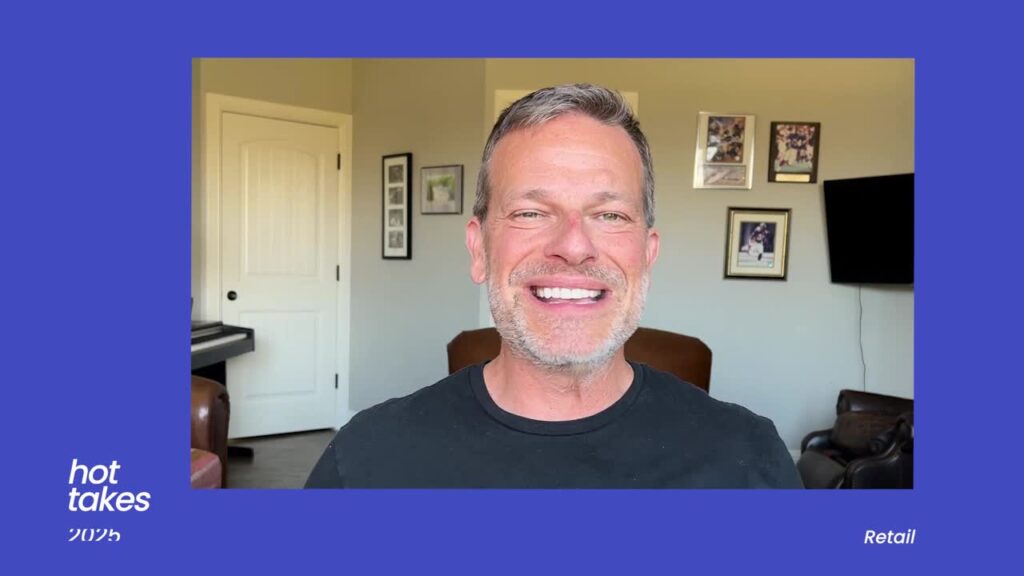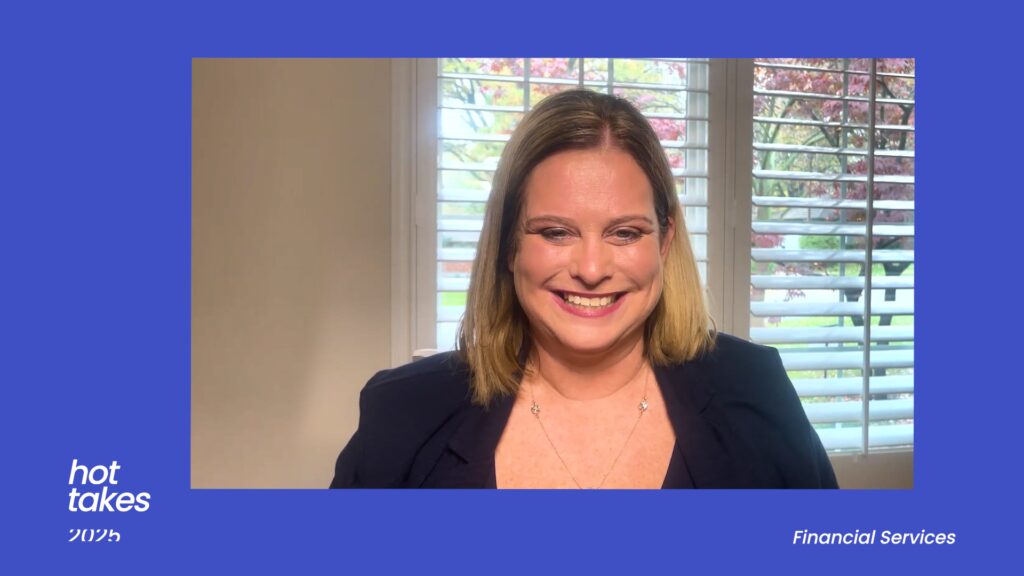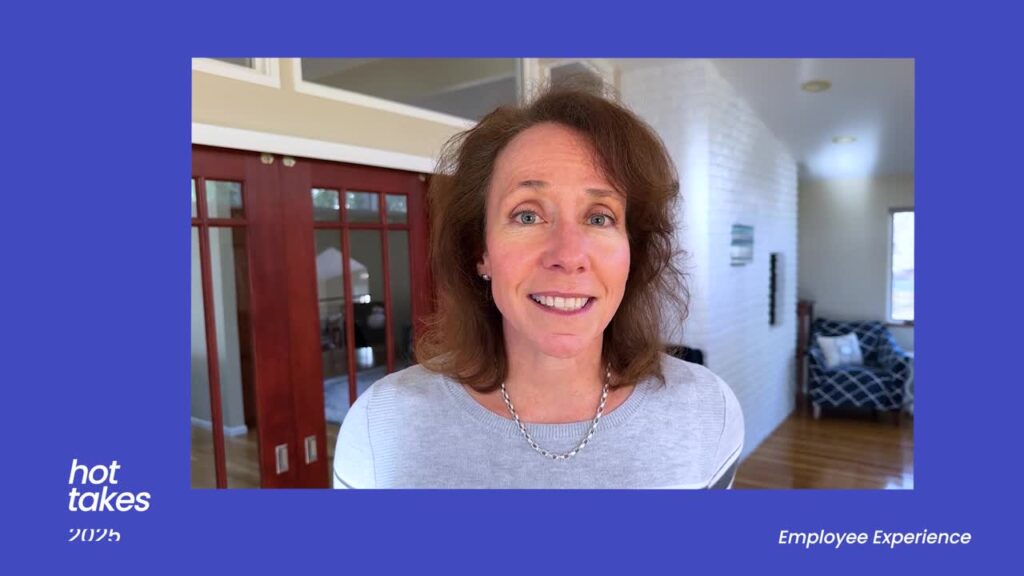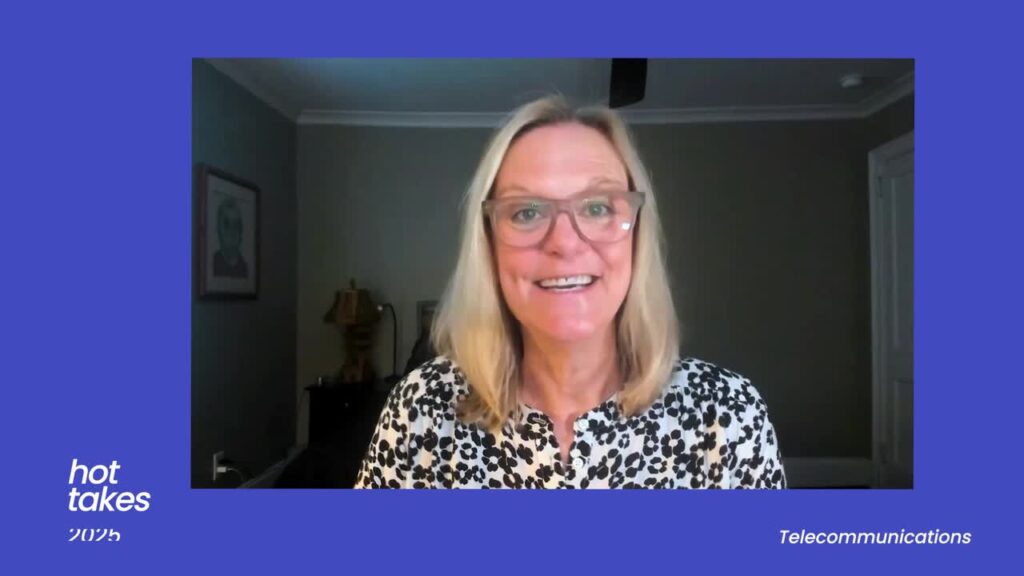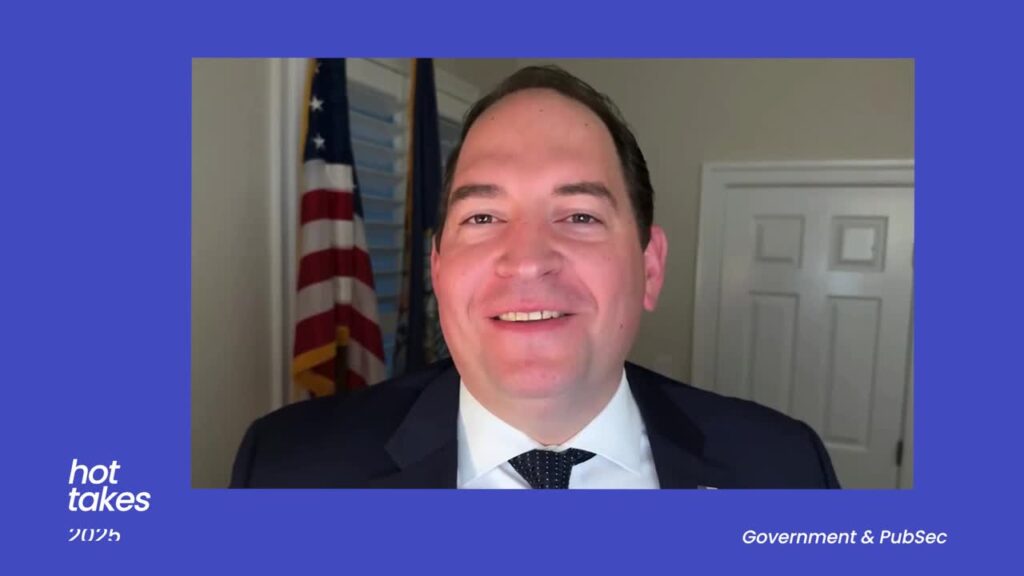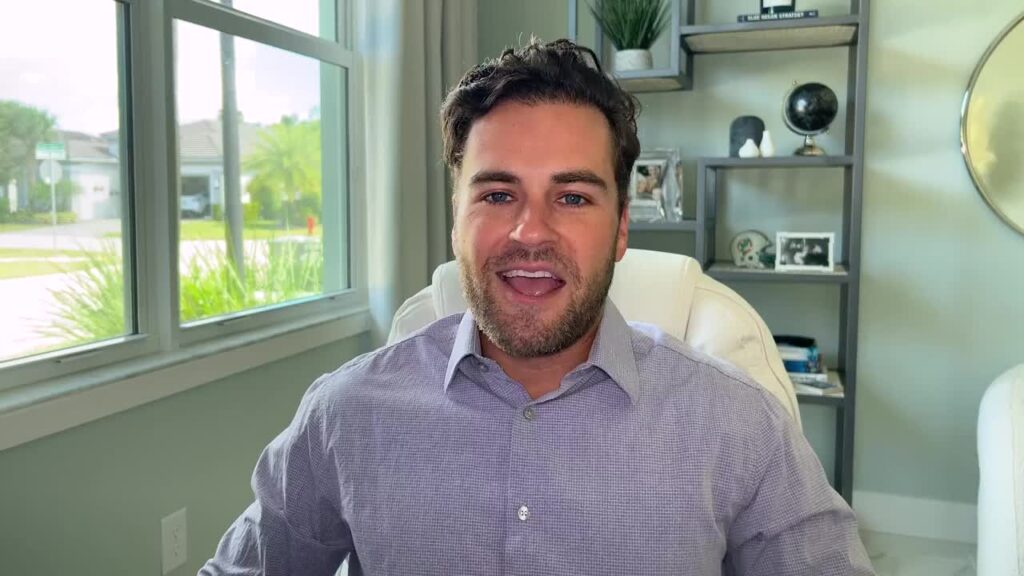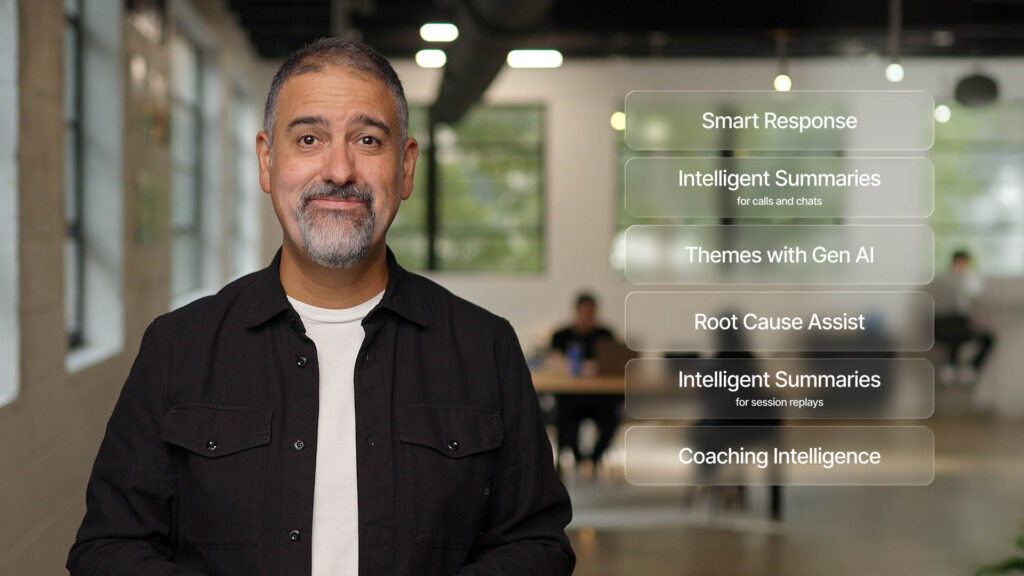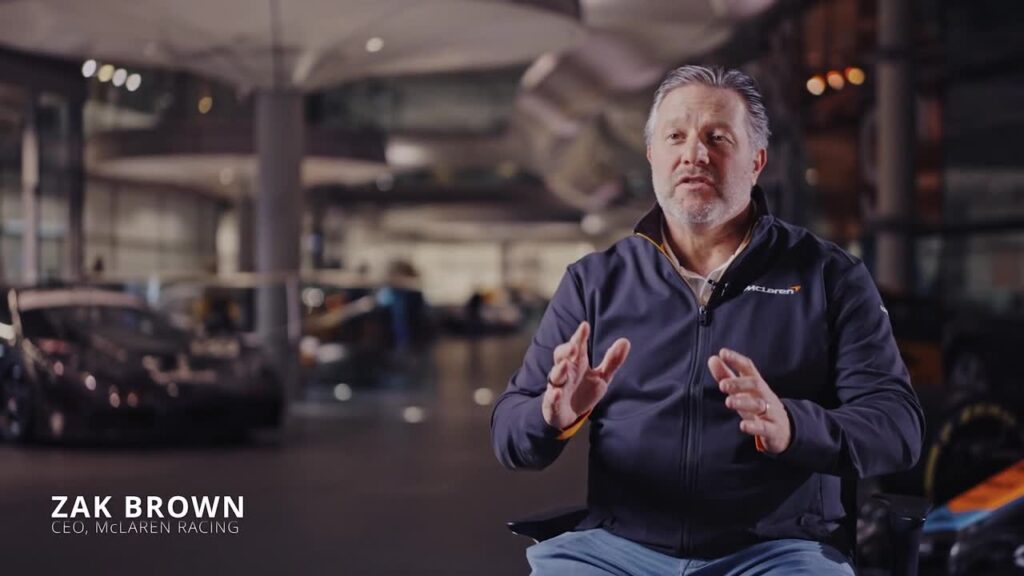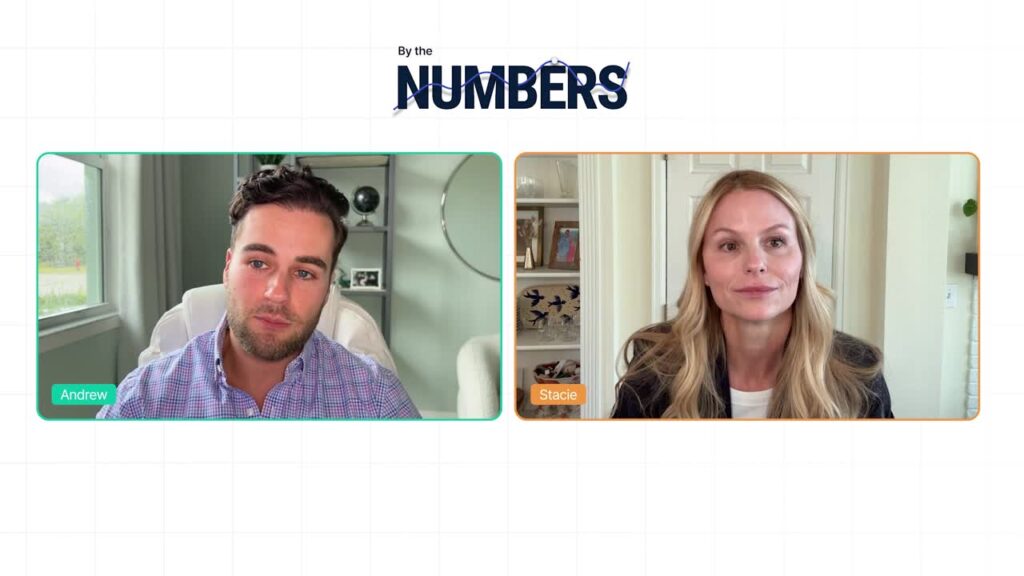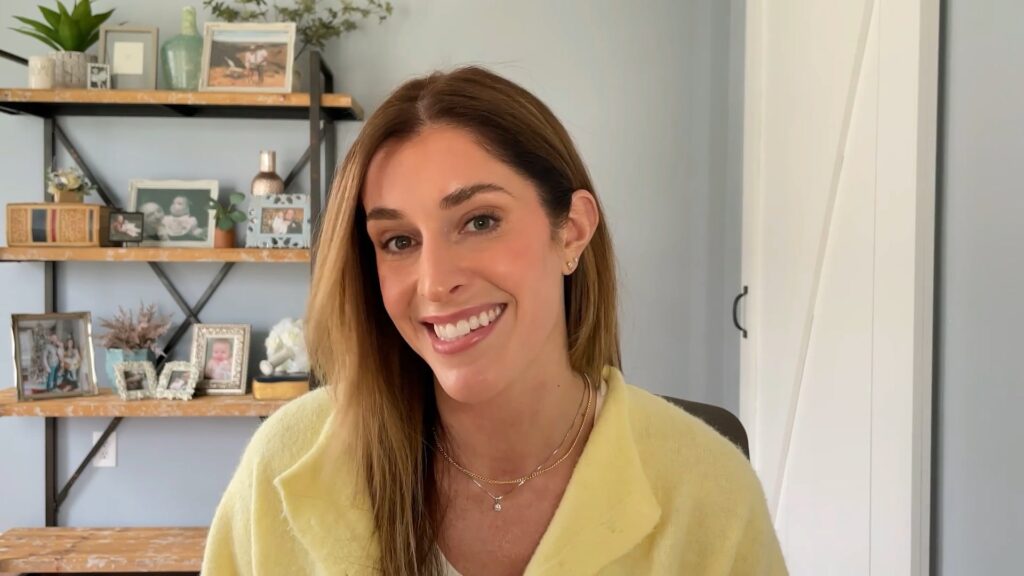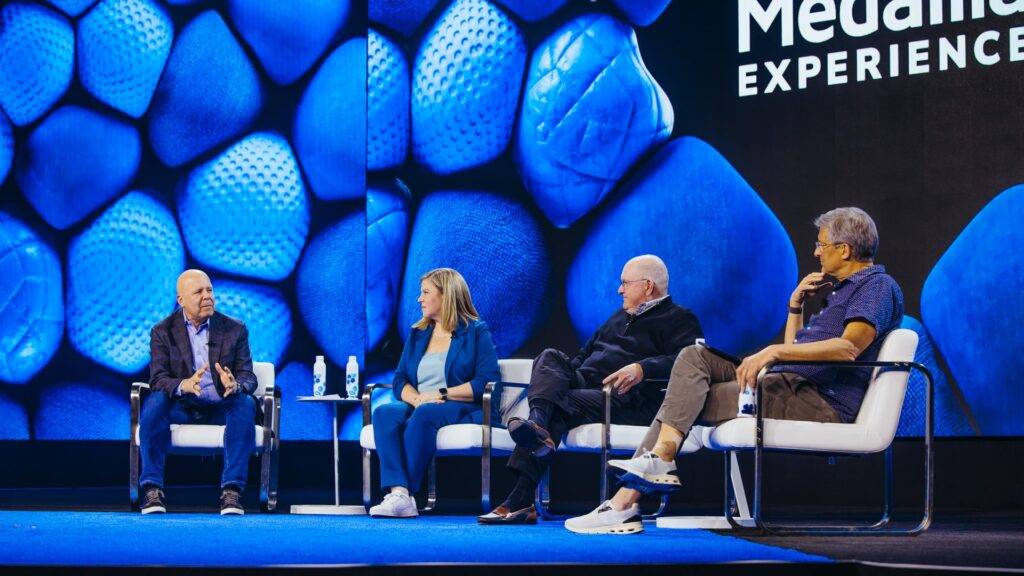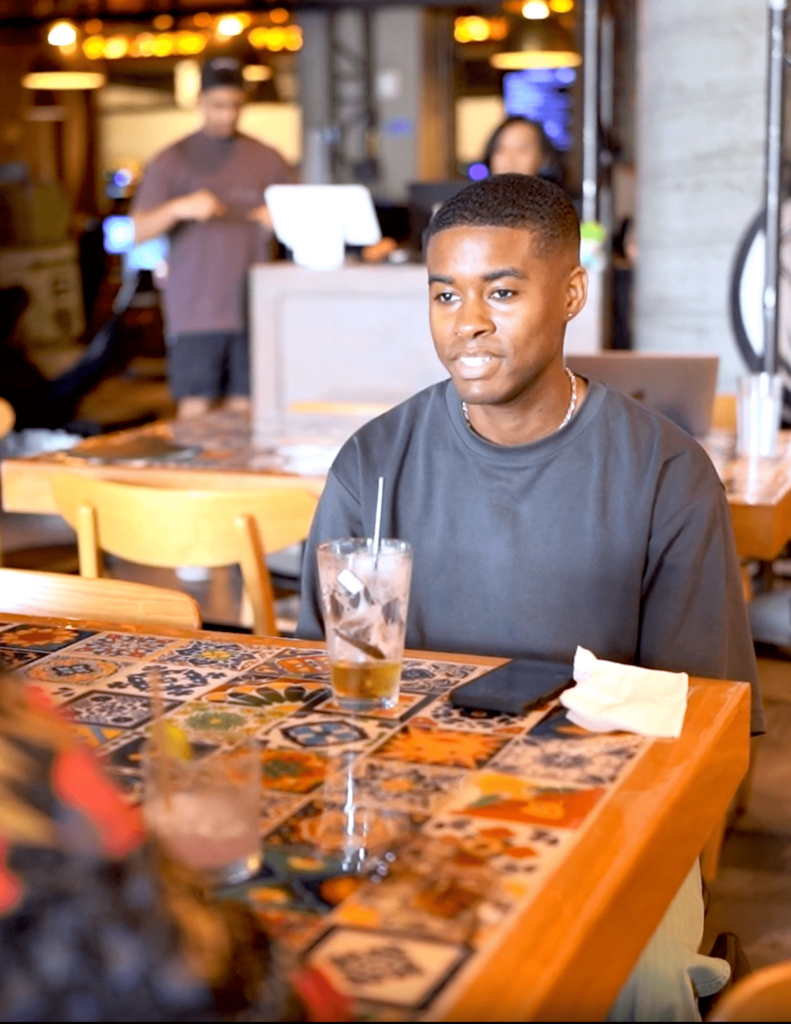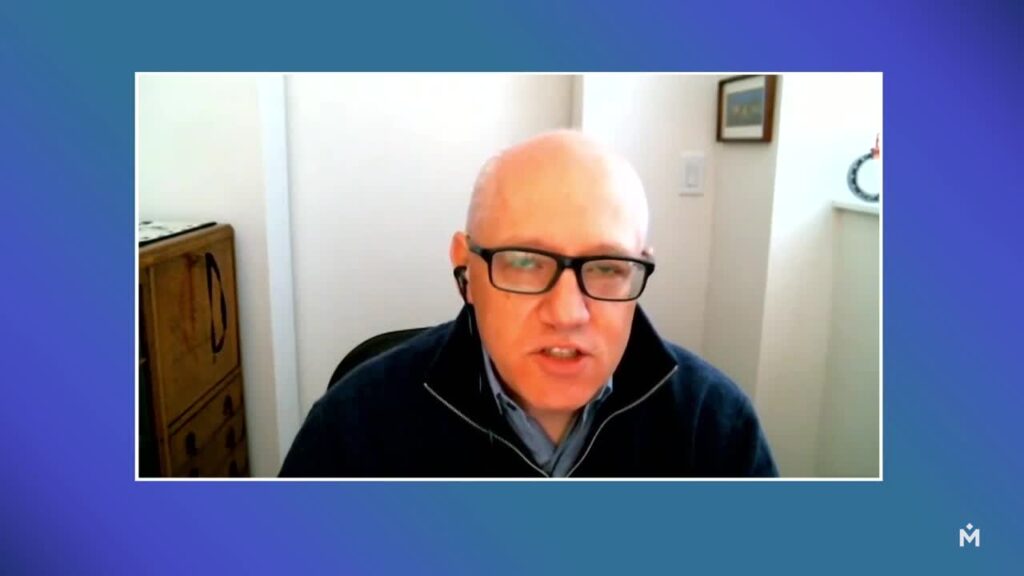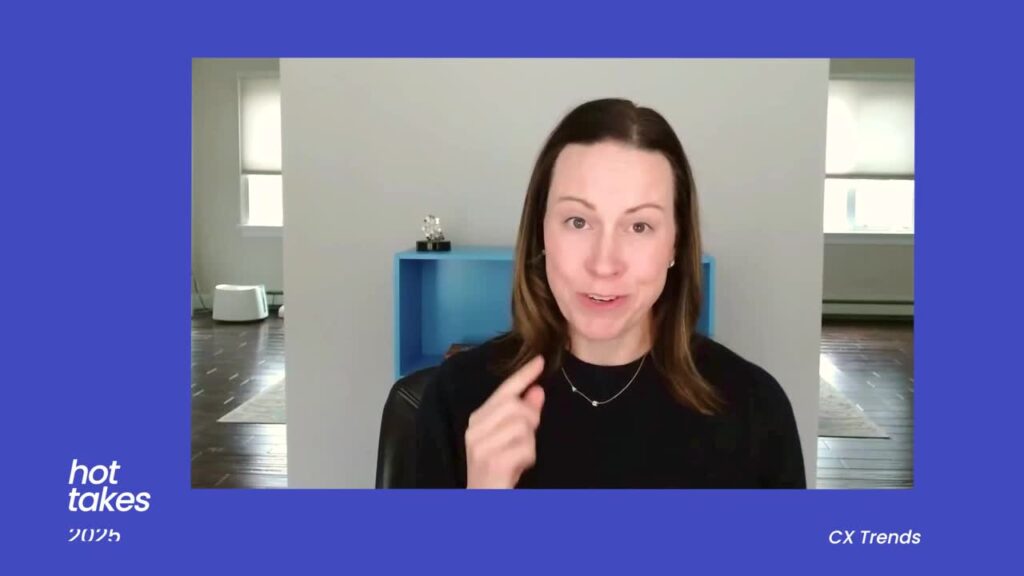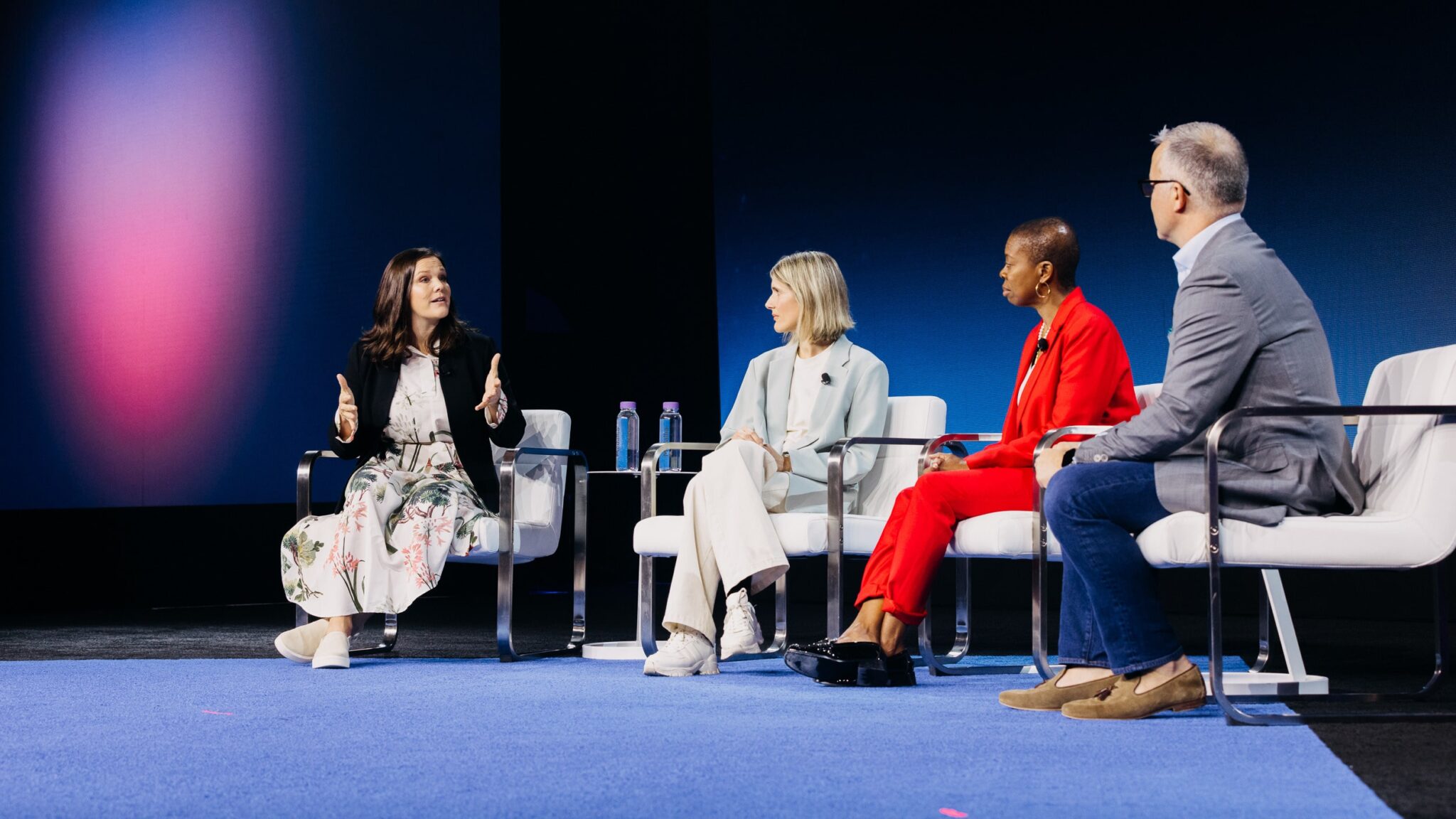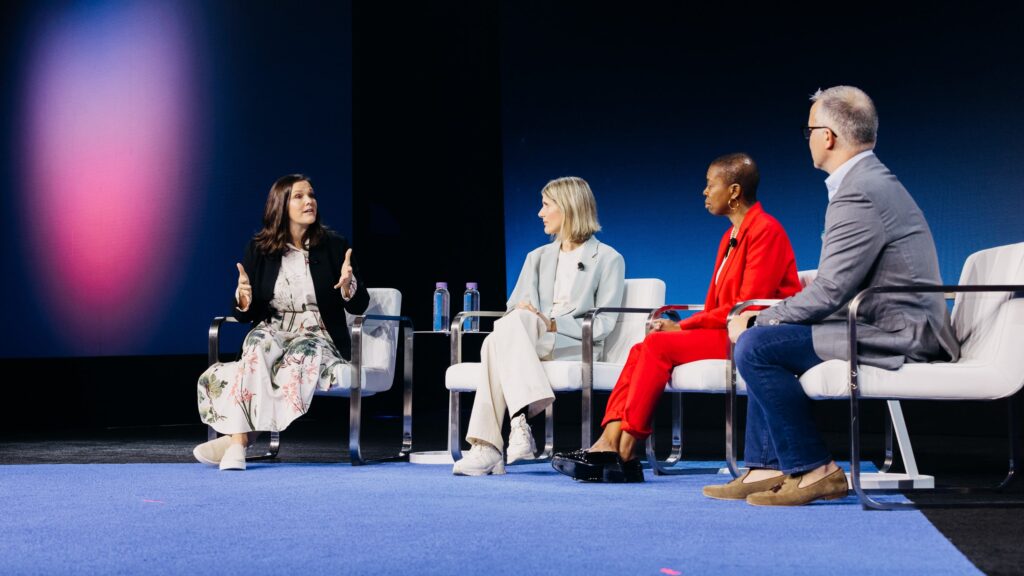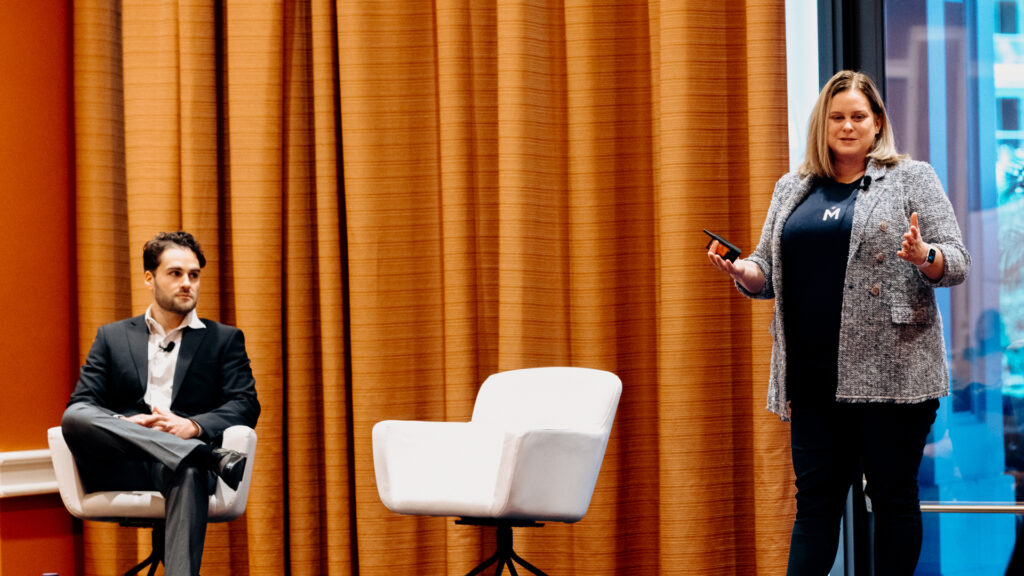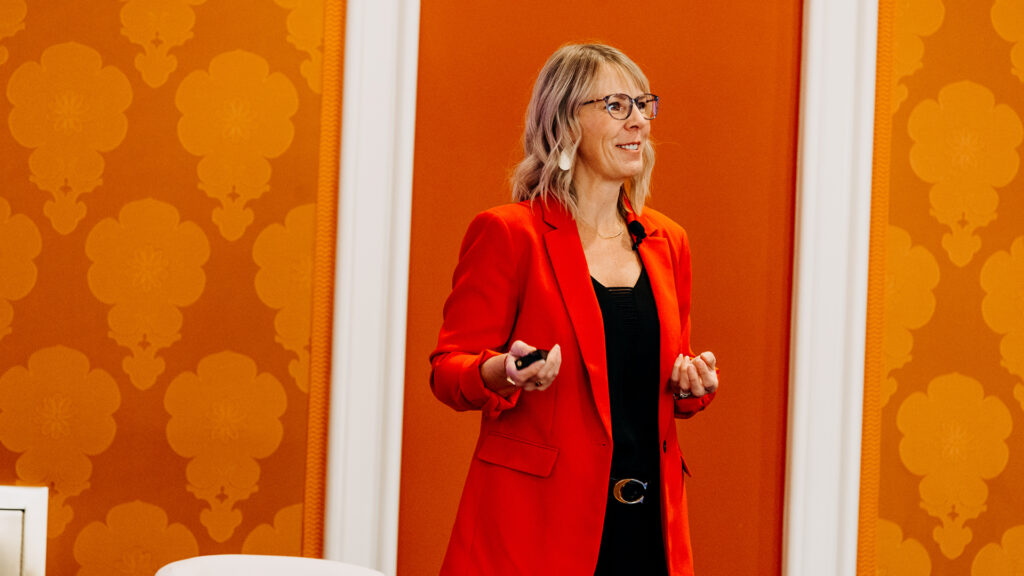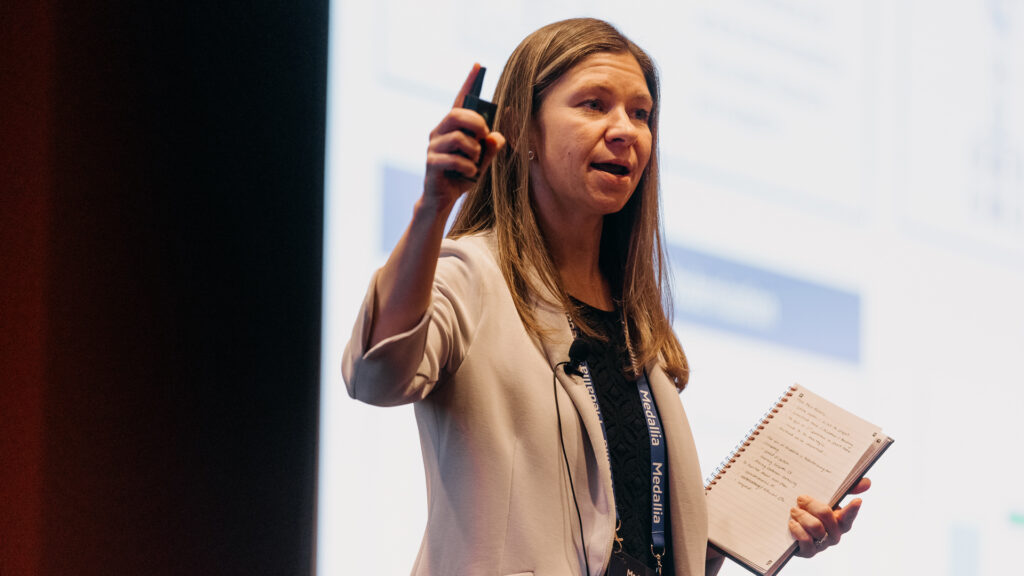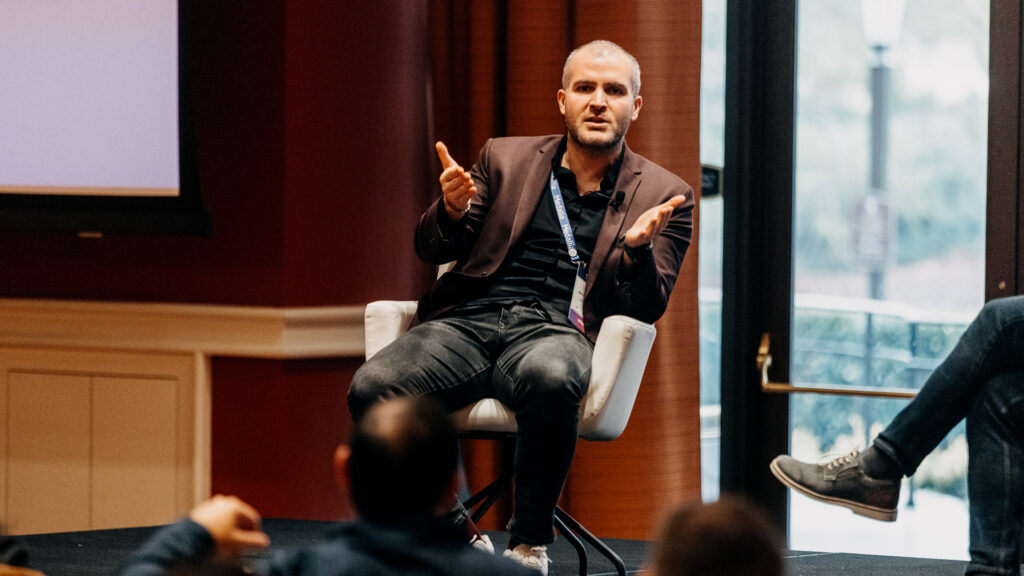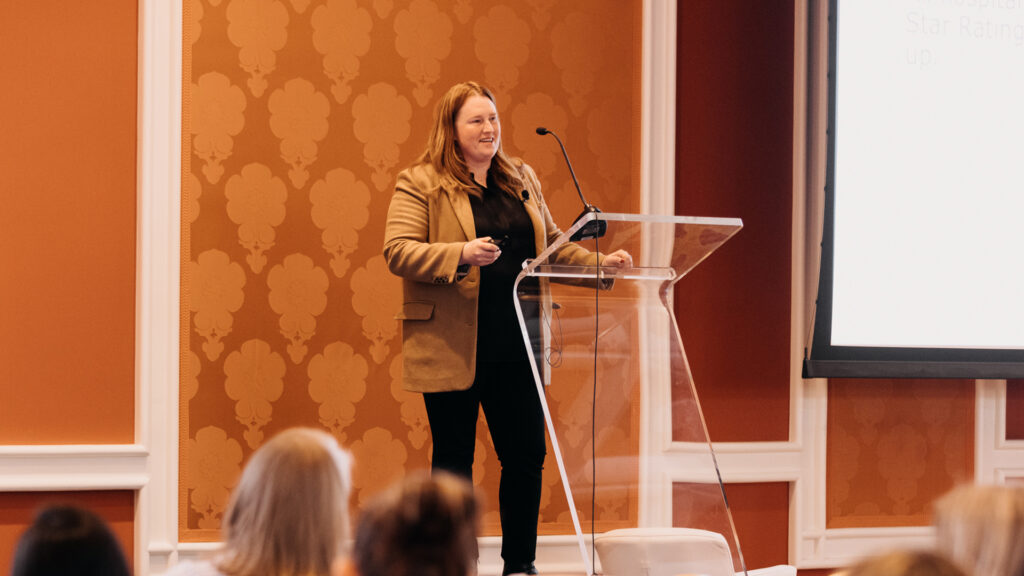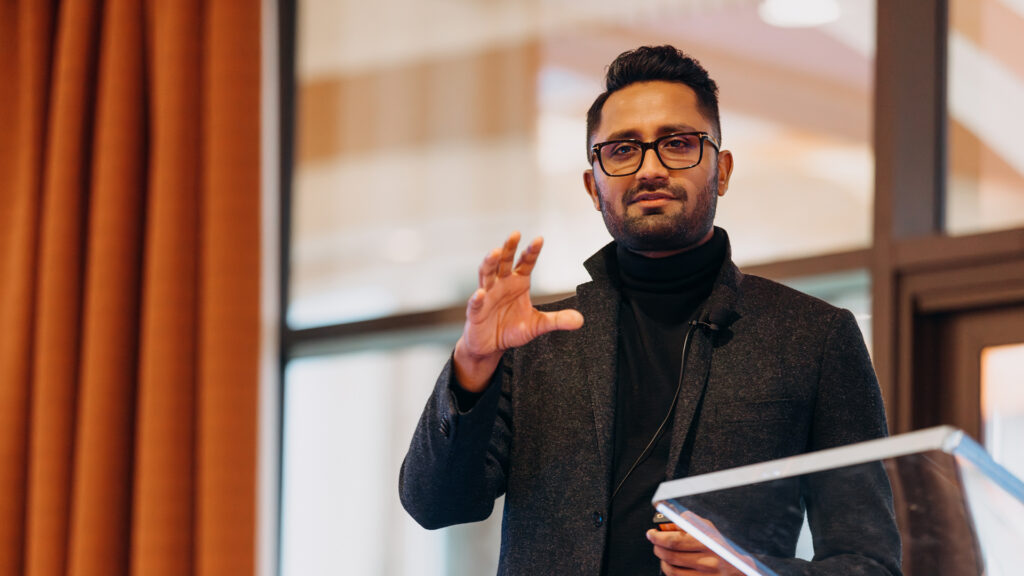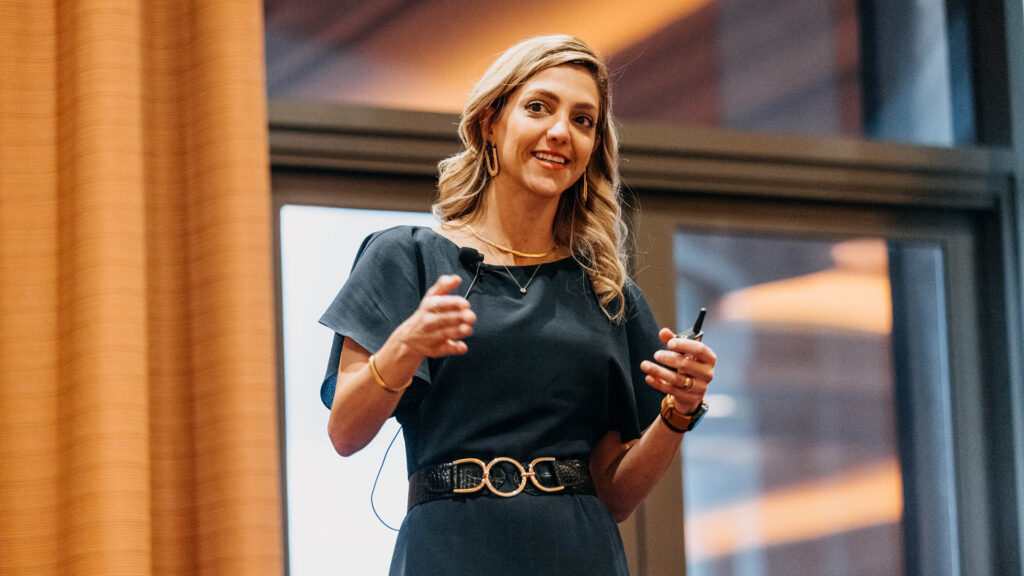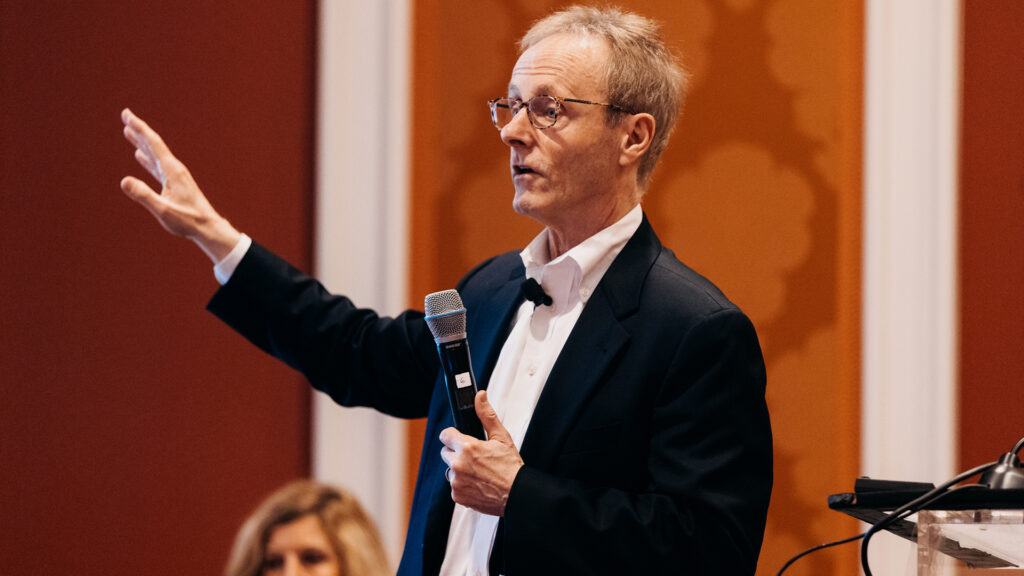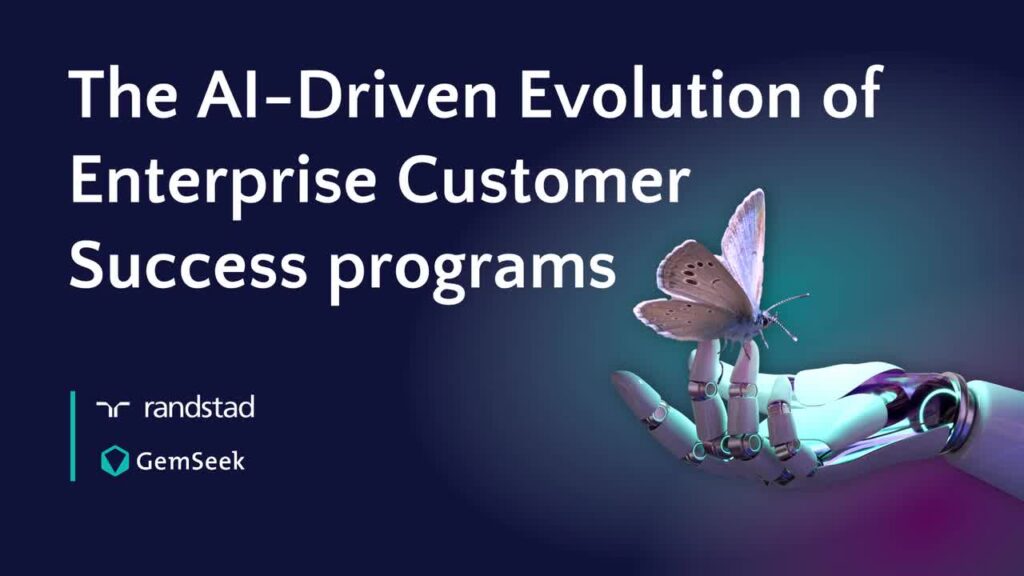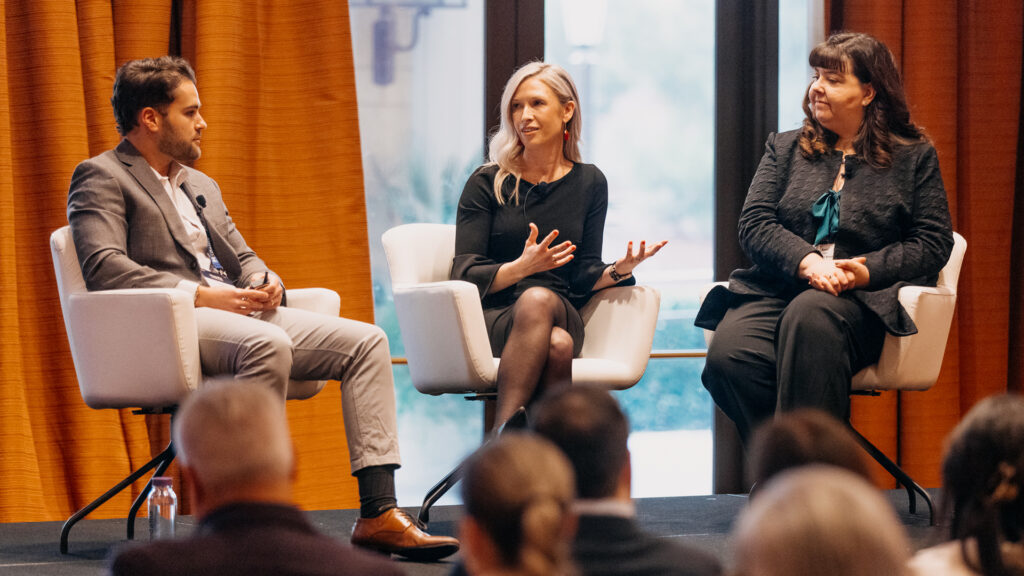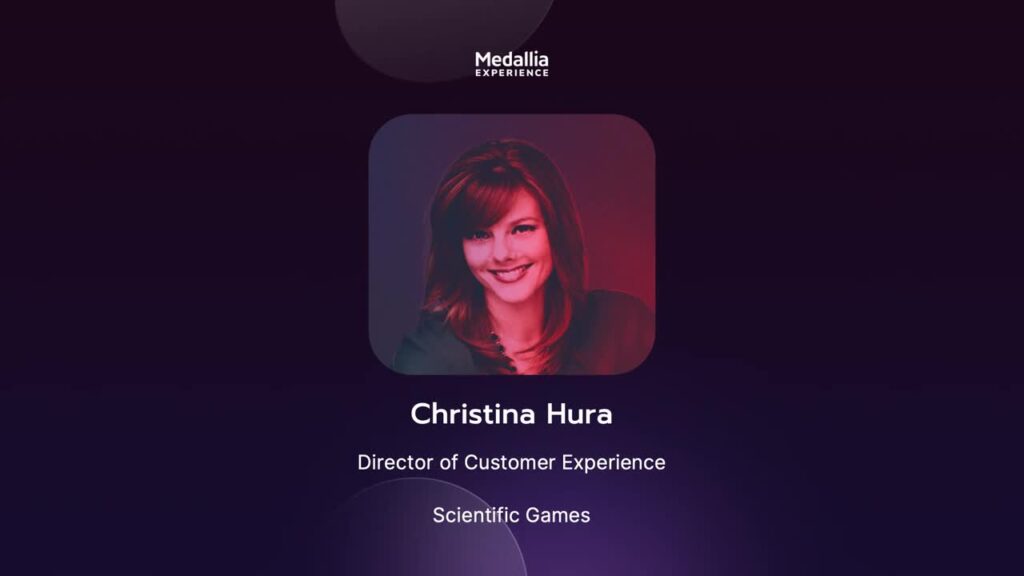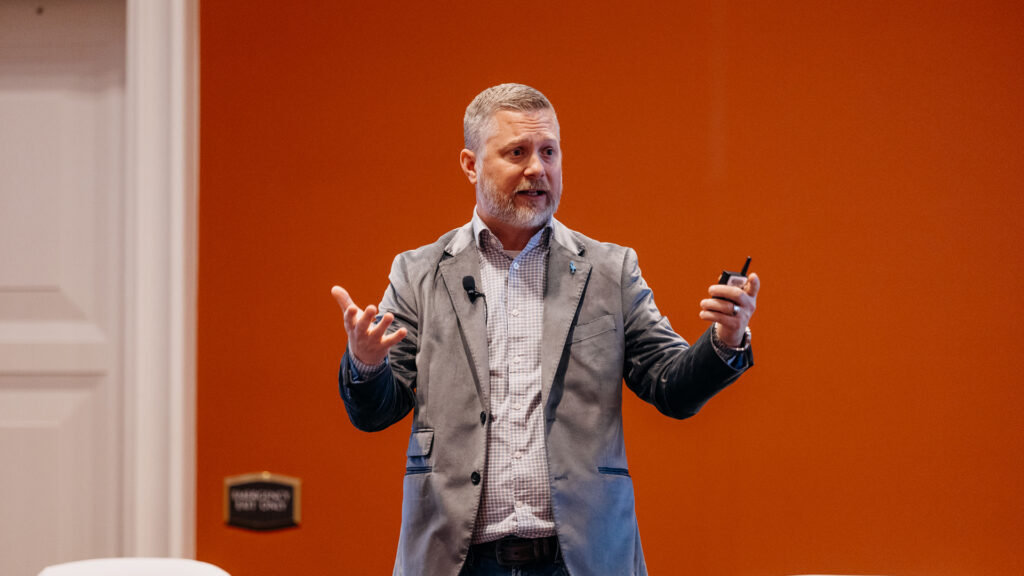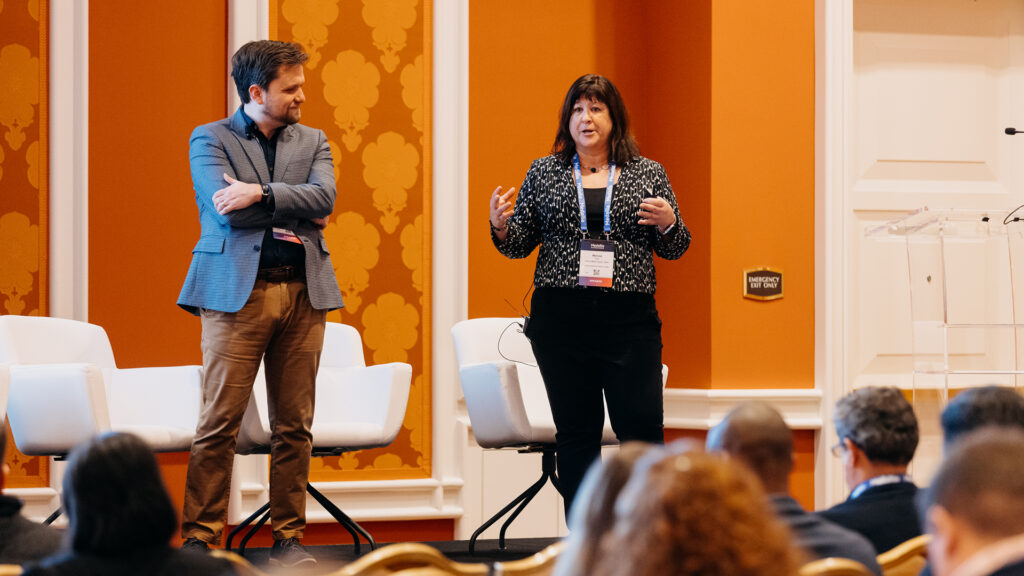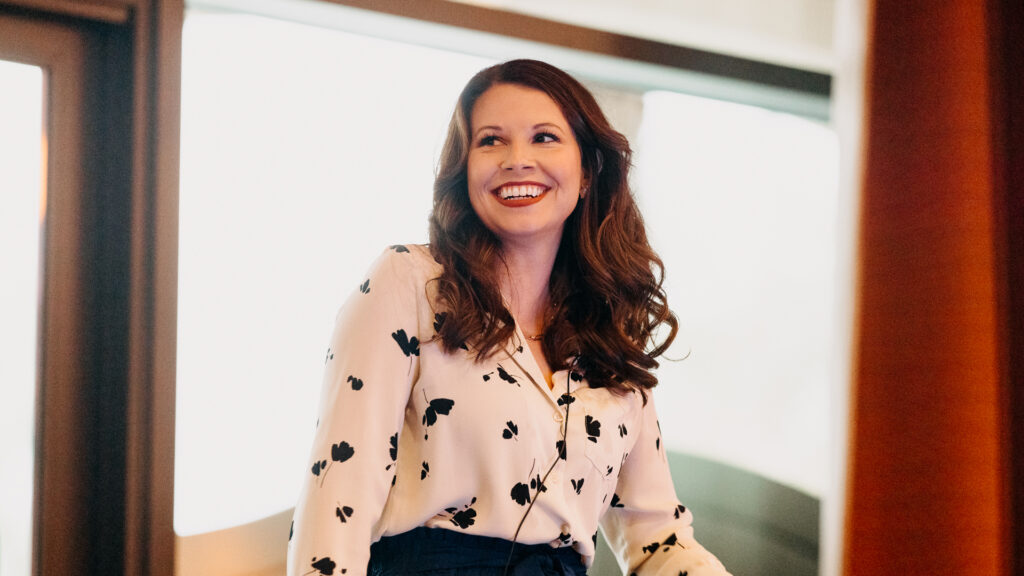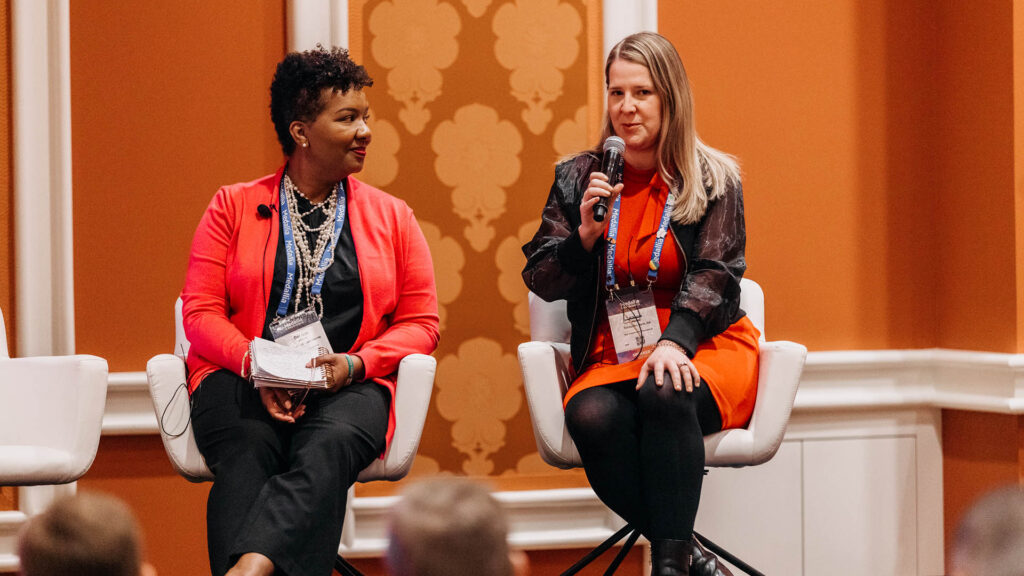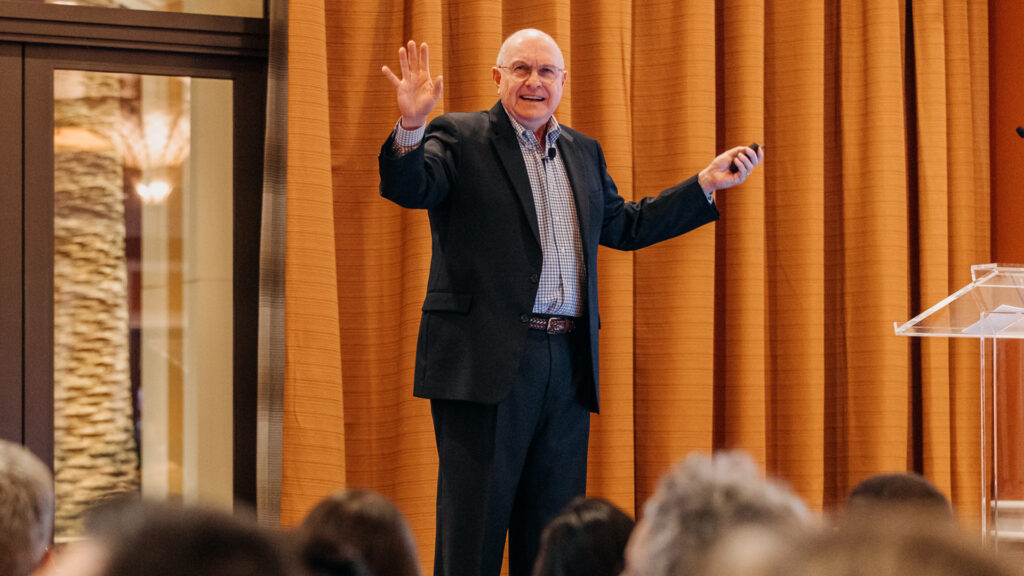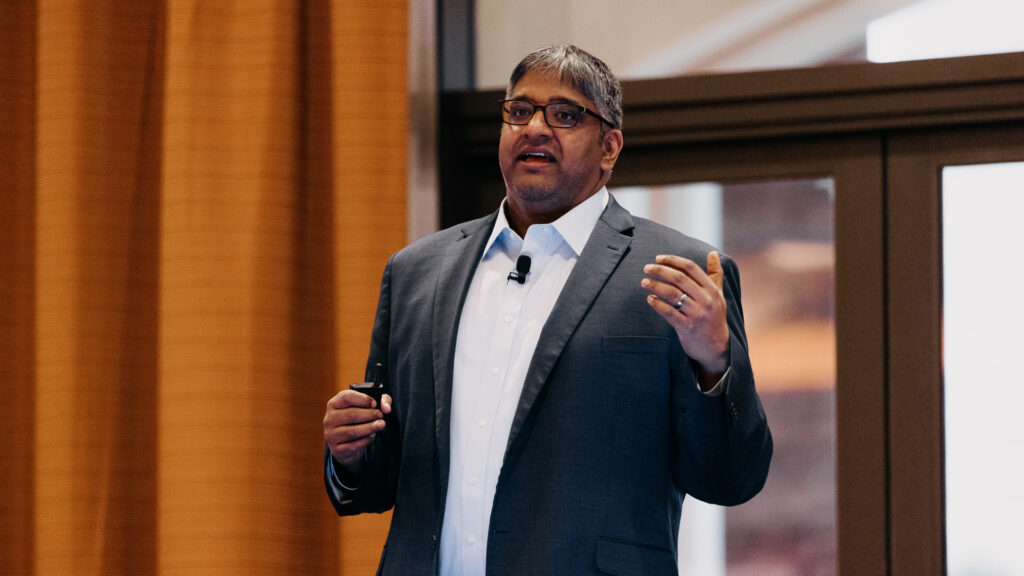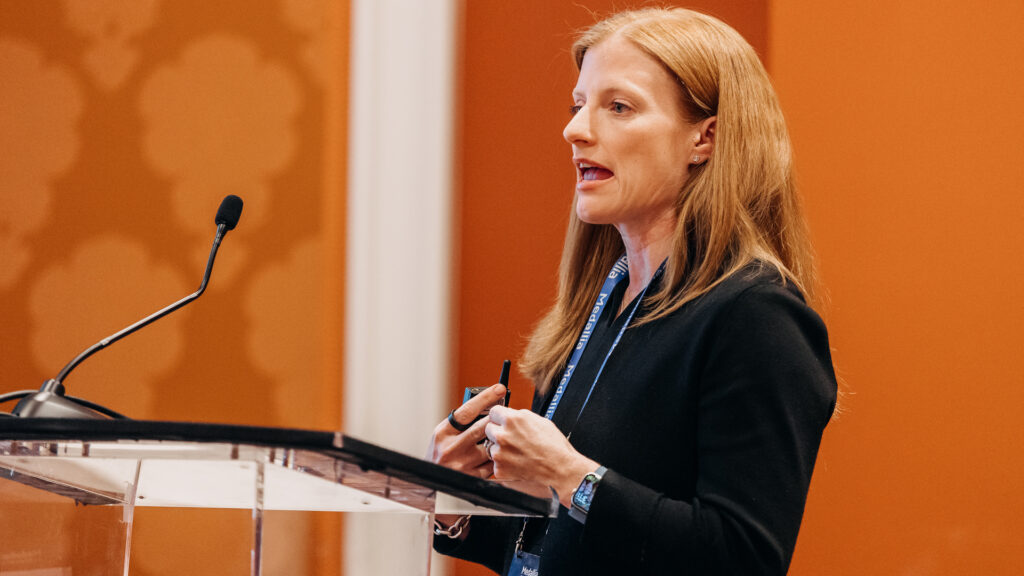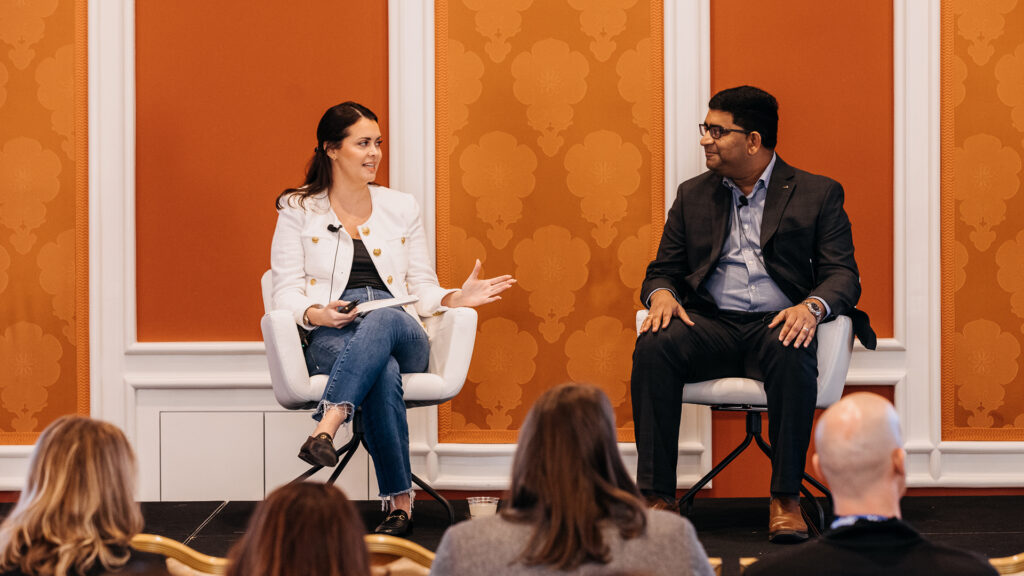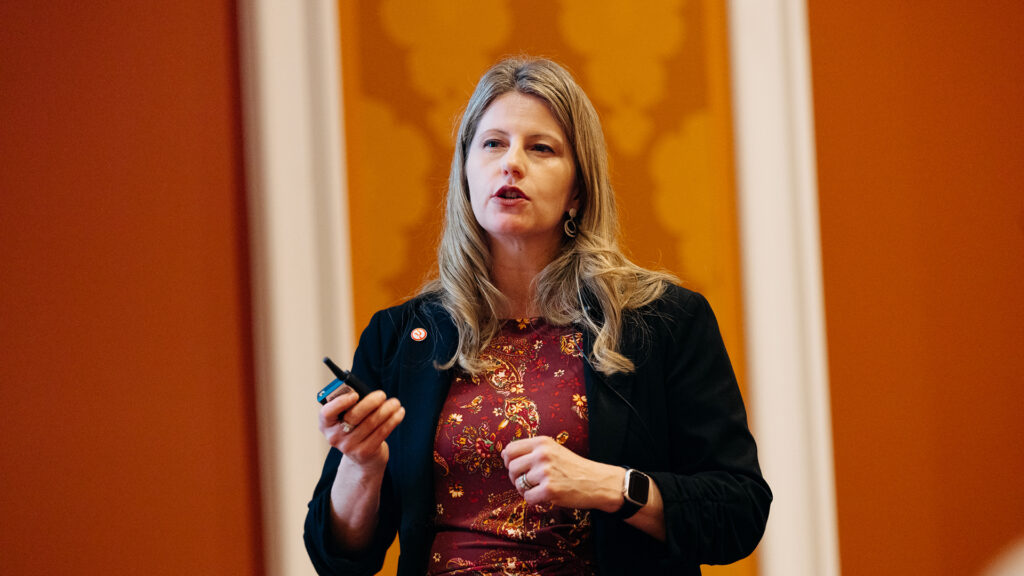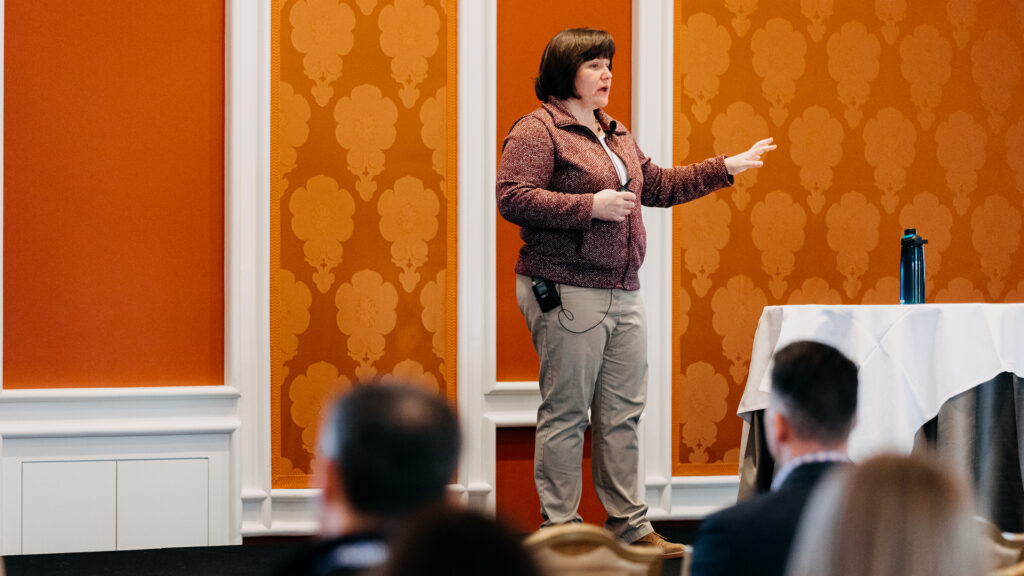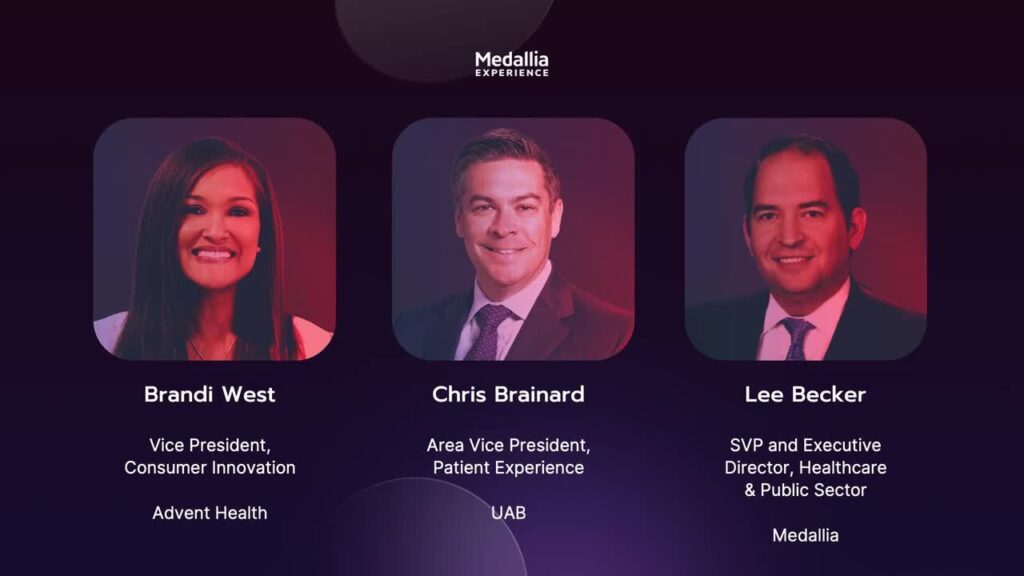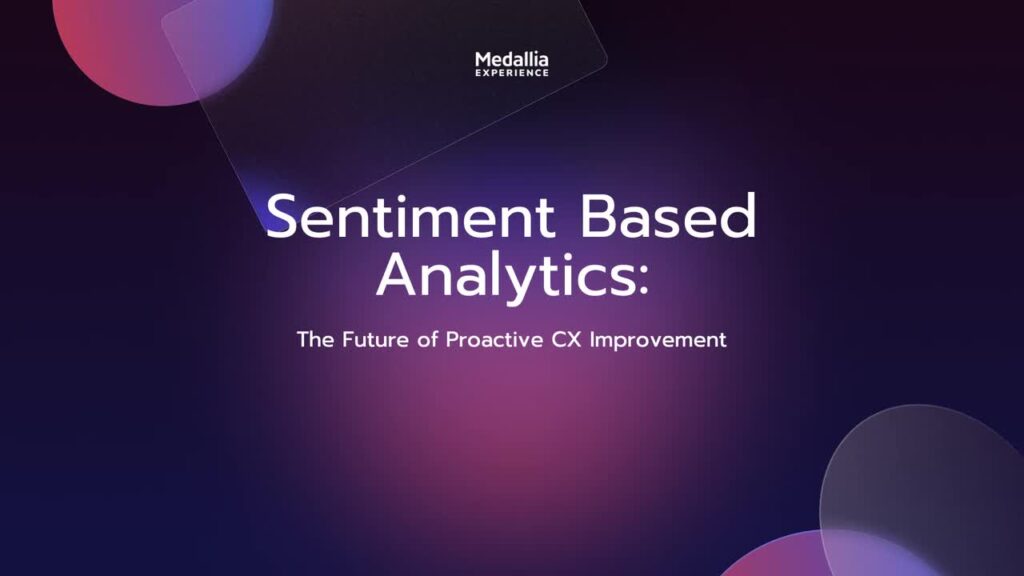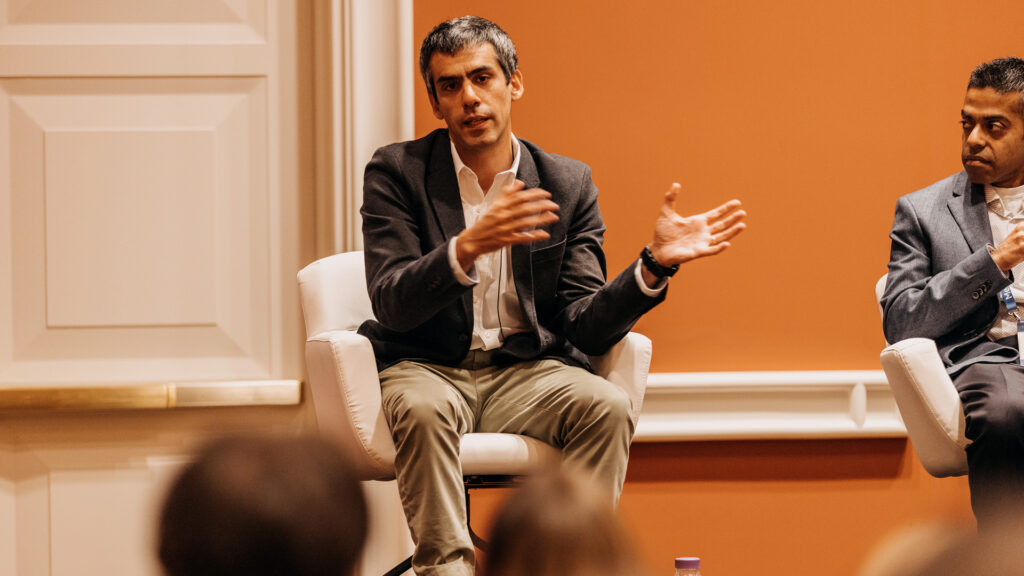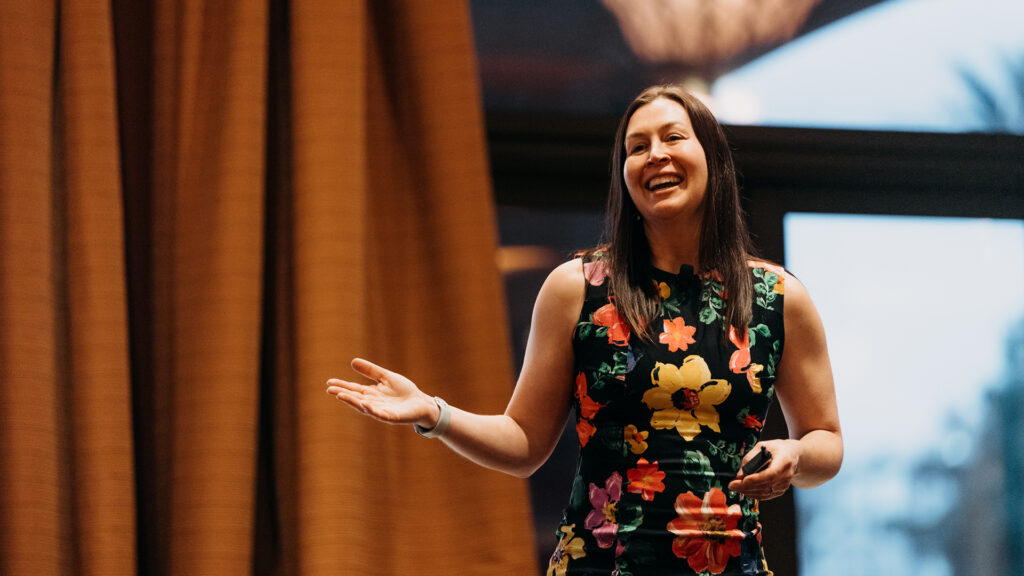Emcee: Please welcome Bill Staikos.
Bill Staikos: Welcome back everyone. Day two of Experience. What a great party last night. Hopefully everybody was able to make it. We had inspiring sessions yesterday. How about those keynotes? Pretty amazing. So excited for what’s to come. I remember attending experience years ago as a customer, so it’s really special to be on stage and it’s just great to be back at events, right?
And it’s not only the sessions and the learning gain, but also the networking opportunities that you all have here. So please truly connect with other experienced leaders here and just a wonderful way for all of us to get together. So hopefully you’re making those one to one connections while you’re here too.
So, I’m really excited for this session and the chance to sit down and have a conversation with three leaders I really admire and I look to for inspiration all the time. One of which I’m lucky enough to work with quite regularly and I just found out in the green room, one of them is also my neighbor, so it’s always good to talk about where you’re from, what you do.
So, we’re going to talk about CX, we’re going to talk about strategy. Innovation, how artificial intelligence may or may not be impacting those areas now and into the future. So let’s have our three leaders take the stage now and I’ll introduce them once we get started.
for joining us today. It’s good to have you here. So to my right, I’ve got Tracey Brown. She is executive vice president and chief customer officer for Walgreens. And there’s one right to the right out of the hotel. If you need to go, uh, we have Astrid Kowalczyk, who is global head of customer experience, insights and analytics for Volvo cars and Ginny Couvillon, who is head of client services, U.S. Wealth Management for UBS. So it’s wonderful to have you on stage. So let’s get started.
So instead of longer introductions, I hope you don’t mind. Um, I think a lot of folks in the audience might really like to say, like, just let’s start with. What is your why? Why are you in the role you’re in today? But really, what is your why and how did you, how did you get there? Tracey, we’ll start with you.
Tracey Brown: Yeah, so, let me think, Bill, about the quick way to get to this story. I think I have a eclectic set of layers to who I am as a person and an eclectic set of experiences that have led to my why. So, Who I am as a person. First, I’m a New Yorker who moved to Texas and spent many years in Texas. So that’s a little bit, I don’t know, whatever, a New Yorker in Texas.
Um, I’m a little bit of a right brain, left brain thinker. I’m a kind of quantitative chemical engineer, but I’ve run creative advertising agencies. And I have a creative outlet of, I’m a drummer. And then, uh, you know, I would say that in terms of really figuring out your purpose and why you are here. I think everyone has a divine reason for being here, and if you can figure out how to match your purpose, your passion, and your position, great things happen.
So I’ve been chasing that throughout my career, starting out with Procter Gamble as a young chemical engineer. Learned a lot of leadership there. Uh, from a data and analytics perspective, my early days, I worked for American Express. Really, before data was cool, like it is now, um, and working to figure out how do you use the data from the customers and the data from the merchants, in terms of the stores and the retailers that you shop, and how do you use this closed loop to create a better experience?
I, uh, took a hard right turn and decided that I wanted to really understand behavior and connection, and that’s why I got into the advertising, uh, space. And then I took the retail pill, so I worked at, uh, Wal Mart and so the Sam Walton hook, line, and sinker got into retail. Along the way, I was diagnosed with type 2 diabetes, and that was, uh, a pivotal moment in, in my life where I decided that watching my own plight of navigating the healthcare system to get to a point where I am now thriving with diabetes was very, very hard.
And I was not okay with understanding the lack of access, the lack of quality, affordable care for all. And so I left Walmart to become the CEO of the American Diabetes Association with the why around this transforming health and well being for Americans in this country. While at the ADA, discovered that I learned a lot around advocacy.
I learned a lot around partnerships. I got really steeped in the healthcare ecosystem, but discovered I really couldn’t change from the non profit seat. And I felt like the place to change it was at the community level, which brought me right back to retail. And so my why and why I’m here is really to help all people figure out a way to live their best healthy lives.
And that comes through Being able to have access to affordable, quality care. And the way that you actually do that is you first have to establish trust at the community level. And there’s no bigger place to be than like a Walgreens that has 9, 000 locations where you have the trust of your pharmacy, where we are right there in community.
So that is why I’m where I am.
Bill Staikos: Thank you for sharing that story. That’s an amazing story.
Astrid Kowalczyk: Astrid. Yeah, I can actually sympathize with you Tracey, my, and this is my parents fault, but my father is a civil engineer and my mom is a ceramist. So it’s like extremely creative and this data analytical mindset. And I got the two of them. So I’m also left brain, right brain, both of them. And consumer insights in general is something that has been a red thread throughout my whole career.
So 20 years ago when I started as an architect and product designer. I tried to understand what, what will customers buy? What is the, what is the interest? So it was more like a more simplistic basis, trying to understand customer needs. And then I, I decided to change course at some point, added big data, data analytics strategy on top of that.
And the more complex it became, the more interesting it became. So then I worked at Spotify for a couple of years, trying to understand what drives the business. What is the next step for Spotify? What is customers needs? And what are they looking for beyond just sitting on a playlist or listening to music?
And then eventually now, since five years being at Volvo Cars, it’s probably the most complex industry I’ve been in, automotive. But it’s so rewarding to to feel that you impact customer experience and at the same time, you also impact the business. So you’re doing something good for both. You’re the outlier stories we read from customers.
They’re amazing. Sometimes there is sometimes depressing as well, but solving those pain points and then seeing the impact on the business. I think that’s the most rewarding part for me.
Bill Staikos: 100%. That’s great. Ginny, can you share your why?
Ginny Couvillon: Yeah, well, my story is way less noble just to set expectations here. Uh, I think my parents would say I’m an early adopter of a passionate existence.
Um, uh, I would say I was just the youngest child of four trying to get dinner. But, uh, I would probably posit an alternative view that I was a little bit of a late bloomer. Not about living with passion generally, but how to apply that professionally. Um, and that led to what some might call it an existential crisis.
I might call it an existential crisis in my mid twenties. And then I got a, a very important piece of advice, um, via a TED talk, as we all do. Couldn’t avoid a coach or a therapist. Uh, and the advice really helps me understand sort of passion. I was thinking of it as this externality, this thing that you have to achieve and you find in a role and, and you move jobs until you get there and all of a sudden you’re magically passionate.
And when I started to understand the concept, um, a little bit more philosophically and broadly, it could also be about how you work. And then I started to pay attention about when I was motivated in the day. Uh, and then that helped me find the next role that really drove more motivation. And then I could start putting language to it.
I was motivated when I was creating impact. I could never do a rote job. I would be the world’s worst surgeon for multiple reasons. But a lot of it is because you’re doing the same thing. I have to be able to change something. Second, I have to be able to be learning. Um, that’s, that is when I am most motivated, when I’m building a new muscle.
And lastly, it has to be based on relationships. So I was able to start formulating my how, which was really more important to me than my what. And most recently I got a nudge, another TED talk, I’ll be honest, uh, around, uh, a little bit closer to my why. I don’t know if anybody follows Simon Sinek in the audience, but highly recommend for a good motivational plunge.
And he said something important, he said, uh, working really hard at something you don’t like is called stress. But working at something you love is called passion, and that really clicked for me. And what I came to realize is I love building the visions for teams, building the road map and helping them identify how they belong and contribute to that and really, therefore, create passion for them at work.
So my passion, I guess, is helping people find their passion.
Bill Staikos: Love it. I told you I was inspired by these three, right? It was not a lot.
All right. Well, we’ve got a great conversation set up for our audience today. I’m gonna just jump right in. When you think about the work in the broader experience space, sometimes innovation and operational efficiency don’t necessarily go hand in hand, right? Sometimes they can really be opposite ends.
How, how do you approach maintaining a balance between the two? Um, and you know, especially right, because they can be competitive and sometimes you need to make tradeoffs. Tracey, can we start with you on that one?
Tracey Brown: Yeah, I think, um, the magic is when you actually get that balance right. And so, in the retail industry and, and actually really any industry, I think, I’m a strong believer of a service profit chain.
So first, if you take care of your employees, they will take care of your customers. Um, when we think about how to unlock growth, loyalty experience, there really are three lanes. It is how do we innovate from an employee perspective to give them the tools, the knowledge and the insights such that they can actually drive operational efficiency.
And when you get those two things right, then we use tools, technology, and data to create a frictionless, good experience for the customer. And so, for us, it really is looking across those three lanes. That is actually how we have our strategy set up. We say that we are, you know, people led, tech enabled.
And so, it’s get the employee right so that they can actually have operational efficiency so that they can actually deliver a great experience.
Bill Staikos: I love that. And I love just bringing that framework in. It’s just I’m a big follower and believer in it, too. Astrid, how do you think about balancing those two things?
Astrid Kowalczyk: I think for us, it starts within my own team, and I have to be a bit careful because I know they’re here somewhere. Um, but it’s, uh, it starts with competition around resources. So what are we going to do first? What are we going to focus our resources on? Is it the operational quick wins? The tactical part or more in a strategical area, and then it’s for on the strategic side, we know it takes much longer, longer lead times.
And there we see that collaboration is key. It’s we need collaboration with marketing team, with brand, market intelligence. On the technical side, what helps for us is understanding what part of the journey is broken and what is the value of fixing that broken journey. Because that will actually help us to prioritize where to put the efforts.
And then the operational side, that’s something that we try to put more and more, now that we have the tools, we put more and more responsibility on the local partners, the markets, the dealerships, to close those alerts, to close the inner loop with our customers. And, um, what my team then needs to assure is that they have the right mindset, how to close that loop, what to focus on, what is the CX mindset.
So it’s a bit of like a constant in team competition, I would say, um, what to focus on most.
Bill Staikos: I love that and I love just bringing those partners in and just the mindset is such a critical component of that too, right? Just being able to think about how do I balance this day to day in my role as an employee of the company or as a partner.
Ginny, how do you think about it then from, you’re in financial services, completely different than our other guests here. So how do you think about it there in your industry? Yeah,
Ginny Couvillon: different industry, same problems. Um, so I think about this day and night, this is so personal for me. So for those that I haven’t gotten a chance to meet, which is about 1100 of you, in my role, I am responsible for the strategy.
Um, or a portion of the strategy. Obviously, EBS is a big global bank. Um, but also the execution. I own the service teams, and so that brings it to life. You are not going to find a more critical person watching a demo than me. I watch the demo, I’m like, Mmm, yeah, promises, promises. And so, for me, having just wrapped up a three year transformation, proudest milestone in my career, without a single change resource, And I don’t say that to be heroic.
I would much prefer to not be heroic. Uh, that was the reality of our situation. This was our conversation every day. How do we spend our most limited resource, our time? Um, after the three years, we obviously have untold lessons. I would categorize, or I would call out three, uh, perspectives which were really important when thinking about the balance between the two.
The first is, it’s a marathon, not a sprint. I think if a consultant had looked at my roadmap, um, it was a 36 month roadmap, they would have said this can be done in 12 to 18 months. And they would have been right. Um, What they would have been wrong about though is that culture doesn’t move as fast as change a lot of times and for change and innovation to take effect you really need to build in that time for the behavior change, you need to iterate, you need to learn and you need to evolve, um, so a lot of it is around building the right time and the right expectations for yourself more than anything, thank you.
around how you can do that and that will help you gain that perspective of when am I innovating and when am I executing. We talk about it in my team as glass balls versus plastic balls. What are the glass balls operationally that you absolutely cannot drop or they’ll break versus the plastic balls that you can drop and pick up, um, in the future.
The, the second big lesson for me was be intentional. I think this is change management 101. Don’t change for the sake of change. Don’t do that to your people, to your culture. Do them the service of knowing what your vision is. Know what your North Star is. Start there. And my team, I think one thing we did right was we invested the time.
In December, you basically don’t see us. I’m either crying under a Christmas tree because I don’t know what my two year old wants, or I’m in a workshop whiteboarding our next year’s roadmap. Um, and. I think that has helped us save so much time. We invest probably 20 hours in December and maybe eight hours each quarter to revisit, reflect, and then change.
I save easily triple that amount of time on the back end, not having to decision and use that energy as you go along. You can take that time and give it back to those operational, urgent things that always come up. And then the last one is use all the tools available to you. Innovation, if I did a, a straw poll and say how many of you immediately think of digital platform technology when you say innovation, almost everybody would raise their hand.
I would actually challenge that. My three year transformation that I just talked about was actually at its core a human capital strategy. A lot of what Tracey said, right? You take care of your people, and they’ll take care of the experience. We completely redeveloped how we hire, who we hire, where we hire, so we could get the right people and give them a lifetime career in finance.
As a result of that, my monthly attrition in a contact center is less than 1%. And that’s innovation. And it doesn’t have to Thanks. That’s pretty impressive. Took three years, guys. Took three years. But, uh, I really think that if people sort of de risk or, um, change the narrative in their head on what innovation is and how it has to be delivered, you’ll automatically solve this issue of what it is.
Because then innovation starts becoming your operational day to day.
Bill Staikos: I love that. There’s this. I love how you each one of you just have this thread about the people, right? It’s not necessarily about sort of technology or data. Those are all important enables, right? But at the end of the day, it does come back to people.
All right. I want to talk about, um, generative AI. It’s such a big topic right now. Certainly, if you listen to the keynotes yesterday and joined a lot of the conversations earlier, and certainly it’s on everyone’s mind. And Jimmy, we’ll start with you. How do you think about generative AI and its role and even potential impact?
In the realm of customer experience, and I think each one of you, given your different perspectives by industry, even may have a different
Ginny Couvillon: flavor there. Yeah, absolutely. So I think, you know, your, your perception of AI is very much an experience of how you’ve lived and what you do. For me, the context is all about UBS.
We are a massively human centric company. Everything revolves around the relationship, the client relationship and the FAA to client relationship. And that really drives how we think about all of our technology. Um, so for me, when I think about AI, I very much think of it as how the, the great assist, right?
I think of it as the great accelerator. It is the Scotty Pippin to our FAs Michael Jordan, right? Um, and, and really thinking of it as a means to an end, not an end of itself, which I think a lot of people have a platform, first people, um, second strategy, or people supported strategy. We have the inverse.
And so there’s really three big buckets that help me contain my thoughts on Gen AI because they’re sort of everywhere right now. And the first is the power of synthesis. And this is where we’re actually most mature, as well, in terms of our execution roadmap. We have unbelievable, uh, proprietary research.
We’re the best research house. In, in the world, but it’s also prolific, right? We have too much for a human to contain, especially when you consider around everything that goes into wealth management, market data, risk data, personal risk appetite. And so synthesis, and we’re doing this now, ingesting all of those data pieces to deliver it to the FA, um, to ultimately make better decisions for the client and to deliver that insight to clients.
So synthesis is a big one. When I think about it personally for my team, This is the one I’m so excited about, training. How many of you have just dozens of training documents, process documents, FAQs, you know, the, the contents everywhere. We don’t make it easy for our people. This is where I want to start targeting snackable content, training videos, AI generated material.
Based on the consumption of all of our training documentation. Second, um, is really around analysis of gaps, gap analysis. So think about this old AI, non generative AI. It’s called next best opportunity or next best action. This is the next stage of that. How are we taking in more data to determine what that next best opportunity is for our client knowing more?
When I personalize that to my space, I think about this as a couple things. One, um, accuracy. Are people, um, giving the right advice? Are they giving the right information? How are we identifying knowledge gaps to continue to make them better? And I think the other thing for me, you know, we’ve heard it a lot the last couple days.
The best interaction with the contact center is no interaction at all. How are we taking these gaps in the process and creating, um, less friction operationally? And then the last one, which is probably where most people are in their journey, which is that prompting, right? How are we thinking about using generative AI to agent assist, FAA assist, help our field, um, provide better experiences?
Uh, and that’s absolutely something I’m excited about, delivering context. to make our employees be proactive on the upper hand. You know, I feel like every day if I worked in a contact center, I would just come with like, you know, full body armor. Uh, I want to take that, that away from them. I want to give them the upper hand.
And that’s what I think we’ll be able to give them soon.
Bill Staikos: Awesome. Thank you for sharing that. Astrid, Autospace, Volvo, huge brand, global. How are you thinking about generative AI in the context of customer experience for Volvo cars? Yeah,
Astrid Kowalczyk: first of all, I think it’s very very similar to what you all explained like those three points definitely But I I’d like to take talk a little bit more about like the whole attention around gen AI.
I mean AI has been around for Quite a long time and suddenly since chat GPT and the closeness to gen AI It’s quite funny because within the organization we see teams popping up around gen AI we now have a And AI engineering team and an AI productbteam, we never had a Google team or we never had a differential equation team.
But for some reason, Ginny, I seems to have this impact and it’s not necessarily a bad thing because we need to learn and we need to adapt and collaborate with AI now start to understand, but there is also a risk to assuming that AI will suddenly solve everything for us. I think we need to be mindful of, we should use Gen AI to solve problems, to create efficiency, to generate content where needed, but we should also not risk of becoming lazy, um, and that’s why we actually recently developed a tool that is doing the exact, exact opposite.
We bring single comments into the organization or into the office space displayed on a big screen. Because we want to reconnect to the customer without AI. Just read the comments on a daily basis. They are being refreshed, uh, daily. And we really want our stakeholders and our team to, to reconnect with them on a, yeah, just a more personal level.
There is obviously a lot of teams experimenting with AI. So we also brought in an AI comedy in the organization. And they’re working around what are, what are the AI principles for Volvo cars, because there’s basically little to no regulation on the governmental side. And we need to set those principles in house, because in the end, your team is accountable for the content that you bring to the customer, or the report that you, that you, that insights report that you put on the executive management stable.
That’s your accountability. And the way you feed into the AI model. That’s also going to generate the output. So it’s, it’s a lot of like work I’m going around. How can we like, of course, efficiency productivity, but also unbiased ethical approach and accountability. Like, how can we work with that?
Bill Staikos: Going back to some of that push pull even innovation and efficiency, right?
A little bit there, too. I love that. It’s a great example, and I hope we don’t become lazy because of the technology. That would be an awful outcome. Tracey, how are you thinking about it for Walgreens with you and your leadership and customers?
Tracey Brown: Employees? Yeah, I agree with Astrid in the sense that generative AI is no silver bullet, and AI has been around for a very long time.
Retailers have been using a I for quite a quite a while, right? The diagnostic a I that. was about what happened, the, you know, predictive AI, what’s going to happen, and then generative AI, how can you continue to assist and make things happen? That’s, that’s the way that we, uh, think about this. And we have really gone back to, it’s about the value.
So, as you think about generative AI, you’ve got to think about what value, and across the retail ecosystem, there’s plenty of places that you can add value from a merge perspective, from a operations perspective, from a product development perspective, a supply chain, a marketing. Even from a supply chain perspective, we have been using AI to help us with demand forecasting, right?
Like, so, even think about where we are right now and today, and the 9, 000 stores that we have. And trying to use weather data, all kinds of external data, event data, thinking about the Super Bowl is about to be here, how we take all of this data, marry it with the data that we have internally. We have more data than you could possibly imagine about your store habits as well as your health and wellness habits.
How do you use this to create value for the customer? We use it from a demand forecasting perspective to help us manage out of stocks. So, everybody go to your Walgreens that’s right here in Vegas. There’s one right on the strip. One mile to the right. You will see that we have predicted what are the products and services that we need there so that we don’t actually have out of stocks.
What do we need to do to reduce our inventory? So these kinds of things have allowed us to reduce out of stocks for the customer by 15 percent, reduce inventory by 5 percent. These are real things. Another example, uh, that I could use is how we’re leveraging, uh, AI for from a marketing and mass personalization standpoint.
We have a hundred million customers in our MyWalgreens, uh, database. How do you understand what Ginny needs? versus what you need, Bill, versus what Astrid needs. And we’re using AI to help us, uh, predict that and serve up the right thing at the right time for the right person. Now, just as Astrid said, we have generative AI pockets of teams popping up all over.
I think that there are some guidelines or things that we all need to keep in front of us. Not only the value piece, but is your data ready? Do you have the right data infrastructure and are you ready for generative, uh, AI? I think we have to think about our talent and our ways of working. How does that need to change as you think about generative AI?
And then the piece that Astrid was pushing on, which is responsibility. Responsibility from a privacy perspective, from a compliance perspective, from a sharing perspective, from a transparency perspective. So there’s some things that I think we all need to make sure that we are getting in order as everyone is racing, uh, to Gen AI.
Bill Staikos: I love, so one, the preparation is so critical, especially as this stuff is blowing up and everyone’s got interest. Ashford, I want to, I want to start with you on the next question. What do you, and I think this is a good segue given sort of your responses in the last one. What questions are you all asking your, your respective organizations as it relates to integrating artificial intelligence into customer experience or into the customer experience even?
And what advice would you give the folks here in the room today, uh, who might be embarking on a similar journey, might be at the very start of the conversation or might even be a little bit further down the path even?
Astrid Kowalczyk: Yeah, I think it’s been tapping into on what Tracey mentioned before. It’s it’s threefolded for us to embark on this journey It’s the the data readiness is the first thing and in the automotive industry is extremely complex when it comes to data points It’s like we are collecting signals on the website At the retailers, but we also have retailer management systems and in on a market level.
They are even different we have Customer care data. We have, uh, of course, the car that is in the center of everything. Also collecting so many signals and that car is connected to an app. Another way of connecting. So you see, there’s tons of different. Data sources. And in order to be a I ready and data ready, we also need to be platform ready and we need to structure that data in the right way.
And that’s actually a huge effort for the for us, at least in the company. I think the second part is organizational structure, organizational readiness. Um, are we like creating that transparency around the use of a I but also collaboration and then, um, What and where to use AI and where not to use AI.
For us, there is a lot of trust in the retailers. Uh, when customers have a problem, they either call into customer care, but most often they call a retailer because they have that trust relationship. They want that human interaction at this moment. So replacing a retailer with an AI robot is probably not a good idea at this moment.
But using Gen AI to increase efficiency and give them more knowledge and understand them the latest development in their, in our latest car models, that’s great. And then the third layer is mindset readiness. I think that’s an important one too. And this goes way beyond CX, way beyond AI even, because, um, like.
Now we are in conversations on with C-level, just getting that buy-in on cx. Why is CX important? I think that’s already a super important part. And then you try to, it’s a lot about education and, and you, you start educating them about NPS and then suddenly, which is a great metric, but they’re so used to work with objectives and OKRs and KPIs.
So then immediately they will, once they start to see the value of NPS, they will say, okay, what’s my target? Like, what’s my global target of NPS? Like, nah, this is different. CX metrics are a bit different. You don’t put targets. You can see as a patient visiting the hospital with a fever, you’re not going to start treatment straight away because they have a fever.
They’re not going to send you to a specific part of the hospital just because you have a 38 degrees fever. No, they’re going to do a root cause analysis. What is the cause of the disease? And that’s the way we approach also and how we educate our C level on NPS and CX metrics. It’s your fever management, uh, metric and it’s your, like, fever measurement, which will tell you if you’re doing well or you’re getting sick.
And the moment you get sick, you need to do root cause analysis to understand what is it in my journey that is broken and how can I fix it. And their AI will, will be like a great support, I think.
Bill Staikos: And for our U. S. Colleagues, 38 degrees Celsius, I think is what you’re just so there’s like moms and dads out there.
Like, wait a second. 30 degrees.
Ginny Couvillon: You’re a double and add 30. That’s right. That’s
Bill Staikos: right. Uh, Ginny, how are what questions you all asking at UBS?
Ginny Couvillon: Yeah, I think a lot of the questions aren’t coming together yet is one of my observations. The, the questions are still in the pockets that both Astrid and Tracey talked about, but I think the questions that I’m hearing most, or certainly that I’m asking, are, they’re sort of two buckets of them.
One is, how do we learn the lessons from the past? We keep thinking about AI. One is like this monolith, um, and also is brand new. As Tracey rightly pointed out, AI has been around forever. Well, not forever, but you know, hyperbolic forever and, and we, we can’t make the same mistakes that we have in the past, which is to underthink and overspend because the immediate reaction to that is going to be in those annual budget cycles.
We’re not going to see the realized promise and it’s going to pull us back and it’s going to take us a much longer time to realize the potential. So the, the first question for me is. How do we be surgical about this? How do we start with the end in mind? What’s our North Star and what are the right places to use this?
And importantly, what you said, how can we build the foundations first? Um, I, I think I’m not always a waterfall thinker, uh, but in this particular case, if you don’t have the right data infrastructure, if you don’t have the right data lakes, you’re gonna fall into that trap of, hey, board of directors, this is, you know, the next best thing, give us all your money.
And then we’re, we’re not going to deliver the value. And then we’re going to have that pain. We did it with Robo. We’ve done it a thousand times before. So that’s the first one. Let’s learn from the past. And I think the, the other one that I would say, um, is, is around that perception. We’ve all talked about it a lot.
You know, there’s the, the creepy factor. So we’re really thinking about being surgical, and specifically with how people are interpreting it, where they are in their journey. I think you can be a little bit creepy in a lot of industries, health and wealth. You can’t be creepy. I drive a Volvo. They’re a little creepy, but not very creepy.
Uh, shows over folks. It’s wonderful. I love it. XC 90. Everybody. Um, I think that We need to, we need to make sure that we’re understanding the creepy factor, how far we can go, but also, and this is really important for all of us, we all have a field in some way or another, right? Your field is all of your dealerships, your field is all of your stores, my field is all my advisors.
This is the third arm for them. This is massive capacity opportunity, but if they perceive this like they perceived robo, which is, this is putting me out of a job, they’re not going to use the tool. And guess what? They have the relationship. They can walk out of the pharmacy and give you your long line.
They can walk out of your dealership and all of a sudden we’re all buying Mercedes. We need to make sure that we’re bringing all of our people along. And that sort of goes to the advice portion, which, um, I would say it is incumbent, incumbent upon the leaders in this room. to be mindful around how you are using the capacity that’s being created.
We all have bottom lines, we all have a duty of care to our shareholders. I would posit the thought that it is a better thing for our share price if we take that capacity that AI is meant to give us and we reinvest that in our people. And the only way we’re going to do that is if we start that conversation now.
Don’t build in the saves into your 3YSP. Understand how you reinvest that and how your targets become growth targets, not cost targets. Every contact center can be a revenue center. I don’t know if that’s true, but I believe it because I want to be a profit center because you get to golf. but I do truly believe that we have a really important opportunity here to fight the, the urge to make this a cost savings technology.
And instead we invest in our people and that’s going to lead to better experiences. It always does.
Bill Staikos: It’s a great perspective. Thanks for sharing that. Tracey, how, um, what questions are you asking? Absolutely.
Tracey Brown: I think for us, Bill, it goes back to what I said earlier, which is about the value. And do you actually understand who your customer is and what they’re wanting and needing?
Retail is a people business, full stop. Um, and so, we have started by making sure that we fully understand what is the journey, what are the moments of truth in that journey, and what are the friction points. For us, there are four. That is, when you come to visit, when you navigate, when you check out, and when you receive.
So, we are using and thinking about the questions, how can we add value to actually take the friction? Out of those four places and what we know is that people are saying, save me time, save me money, make me smarter, make me feel better and recognize me. So we have that saying, okay, these are the places that we need to start to think about along the journey.
Where can we make those things happen? And then the last thing that I will say is we’ve also looked at the research. This is bare minimum our customers are telling us. Uh, they want five things. I want a clean store. I want fast service. I want friendly service. I want stocked and available shelves. And I want to be able to get my prescriptions fast and accurate.
We call that the operational five. We’re asking ourselves the questions across that spectrum. How can we leverage AI and technology across there for us to create a better experience? And we’re doing it, so we started with Medallia, the tool itself, and building in the Operational Five into the Medallia tool, where I can look up, right now, how our 9, 000 stores are operating against the Operational Five, because the customer told us when we do that, we add value, we get it right.
We’re doing queuing back at the pharmacy, so we know that our shopper Like Omni, sometimes they want to be in the store. Sometimes they want to order online and pick it up. Sometimes they want it delivered. Sometimes they want to go through the drive thru. How do we predict which of those mediums our customers want?
Those are the things that we’re actually looking at. We’re doing, uh, real time data and analytics such that when customers come up to the counter, we know. what medications they’re on. We know what their conditions are. We can actually start to say, are there interactions here? So we’re asking the questions that say, what allows us to actually take the friction out?
What allows us to take work off of our pharmacists so that they can do what they do best, which is they’re in the people business. That’s where the trust is established. And so when we get trust, Emotional connection, right? And we’re adding this value. Great things happen. That’s how we’re thinking about using AI
Bill Staikos: and technology.
So, last question, can you provide just really quickly, just any insights into your future roadmap for customer experience or even employee experience, because that’s been a really kind of underlying thread here on some level. Particularly focusing on how AI is going to play a part in that. Tracey, we’ll start with you really quickly.
Yeah,
Tracey Brown: again, it goes across the value chain. So, we have Roadmap that focuses on merch, roadmap that, we’re, we’ve got SKUs in every store. We’re using AI to help us figure out right product, right store, right community. We’re using it from a product development standpoint, we’re using it from a supply chain standpoint, we’re using it actually from a marketing and communication standpoint.
And I was at a Relook conference, uh, just last week, where their, uh, Accenture actually showed. Uh, replacing your marketing team, not replacing them, but using an assist. So you have a copywriter assist, a creative director assist, like, so that’s really interesting around how you can actually use assist to help you become more effective and productive and fast and quick.
So our roadmap aligns with the value chain across the retail.
Bill Staikos: Awesome. Awesome. Astrid, how are you thinking about that from a future roadmap perspective?
Astrid Kowalczyk: Yeah, I think on the product side, we, we definitely get ready with our text analytics alignment, like making sure that those topics are ready to be injected into the data model, but then also experimenting with.
And, um, how they can summarize a customer care contact and make the lives of care agents easier, identify gaps in knowledge articles, maybe generate content into the knowledge articles. So a lot of experimentation on the product side, but then eventually, and on the medallion side as well to basically support the insights analytics to team to use gen AI and, and create more efficiency in that area.
And then lastly, we also have a strategy and transformation team and for them it’s mostly focusing on soft skills, managing expectations as well within all our different stakeholders and, um, focusing on, on education around how to use AI and when not to use AI.
Bill Staikos: Awesome. Ginny,
Ginny Couvillon: how about yourself? Yeah, so we’re actually in a really interesting, um, pivot.
Following this transformation, we were able to get a lot of our foundations in place. And where our CX roadmap is going, is we’re actually moving into a new operating model. Um, a lot of people refer to it as a front to back operating model. Essentially, what that means is organizationally, we are reorganizing around how our clients experience us.
Before, traditionally, you organized around role, right? Service role, operations role, uh, digital role, etc. And, you know, y’all will have similar things. We’re now, uh, organizing around how our clients are using us advisory, mutual funds, onboarding and bringing all of those teams together, um, to more effectively connect and come up with better solutions faster where AI is going to play a part in this.
It’s going to be everywhere. People process platform, right? I always sort of think in those three streams and specifically I have all the data in the world. I can tell you what Tommy was doing at 1201. You know, I was like, Why are you there? Covering over are so much type Tommy type. We have no information on what our operational colleagues are doing and what our digital colleagues are doing and the gaps that they’re, they’re working on and the prioritization, right?
I think where we’re going to use AI is bringing these three teams together operationally or organizationally is what we need to do. Now, how do we use AI to help us identify what we learn from that organizational restructure? To start delivering better solutions and hopefully faster. But again, slow, slow, as smooth, smooth, as fast.
Don’t be afraid to fight that, that urgency.
Bill Staikos: So, this has been a really fascinating conversation. I’ve been taking a ton of mental notes, and I’m gonna probably call each of you at another time at some point, just to make sure I’ve got it all down. Uh, and I will definitely steal some things if that’s okay.
And I’m sure our audience is taking notes here as well. Um, look, hopefully we can sign find time to chat after, if folks can find you after, uh, this event. Please, let’s all thank, uh, Tracey Ashford and Ginny for their time today.
Ginny Couvillon: Thanks so much.
